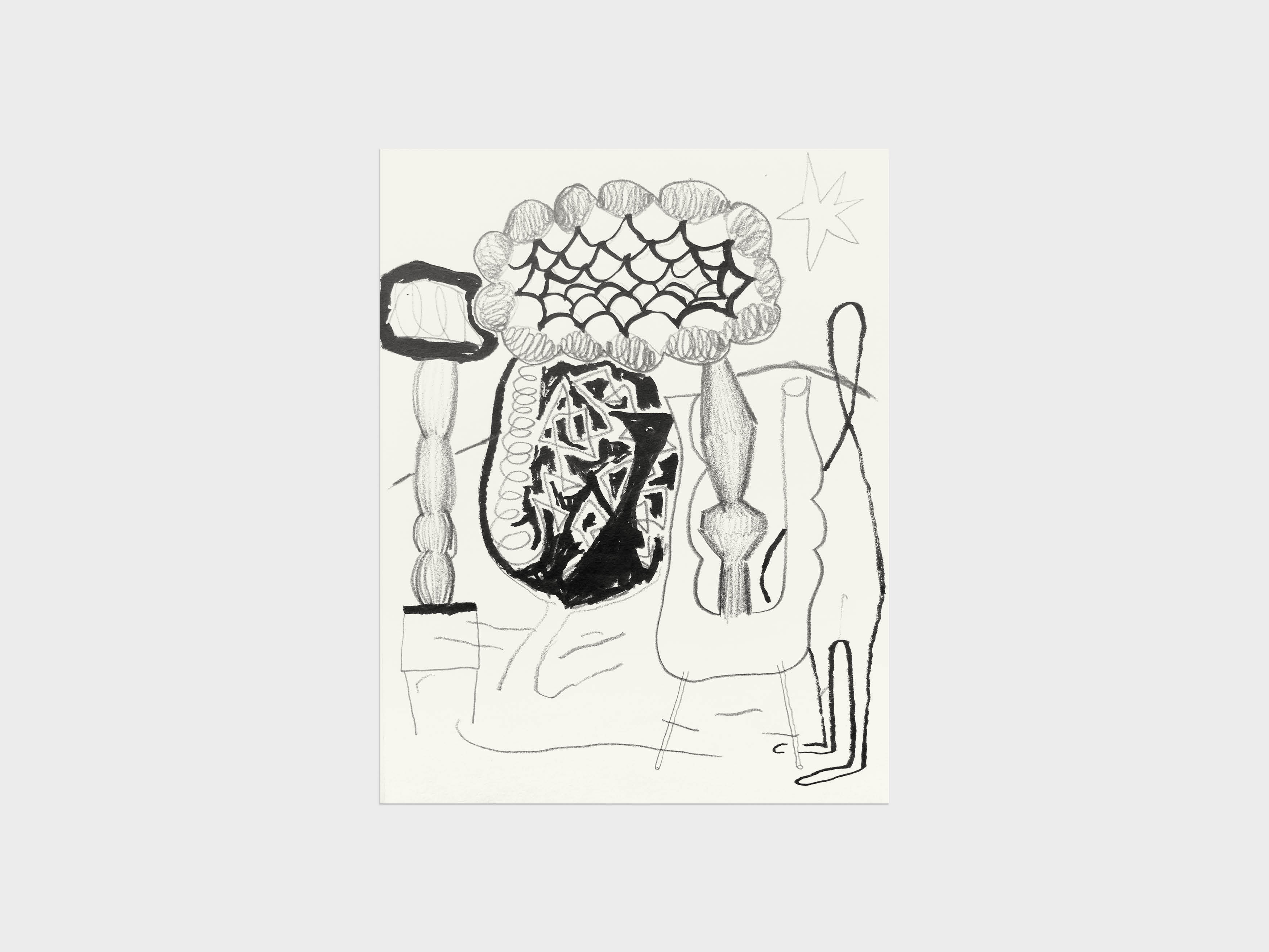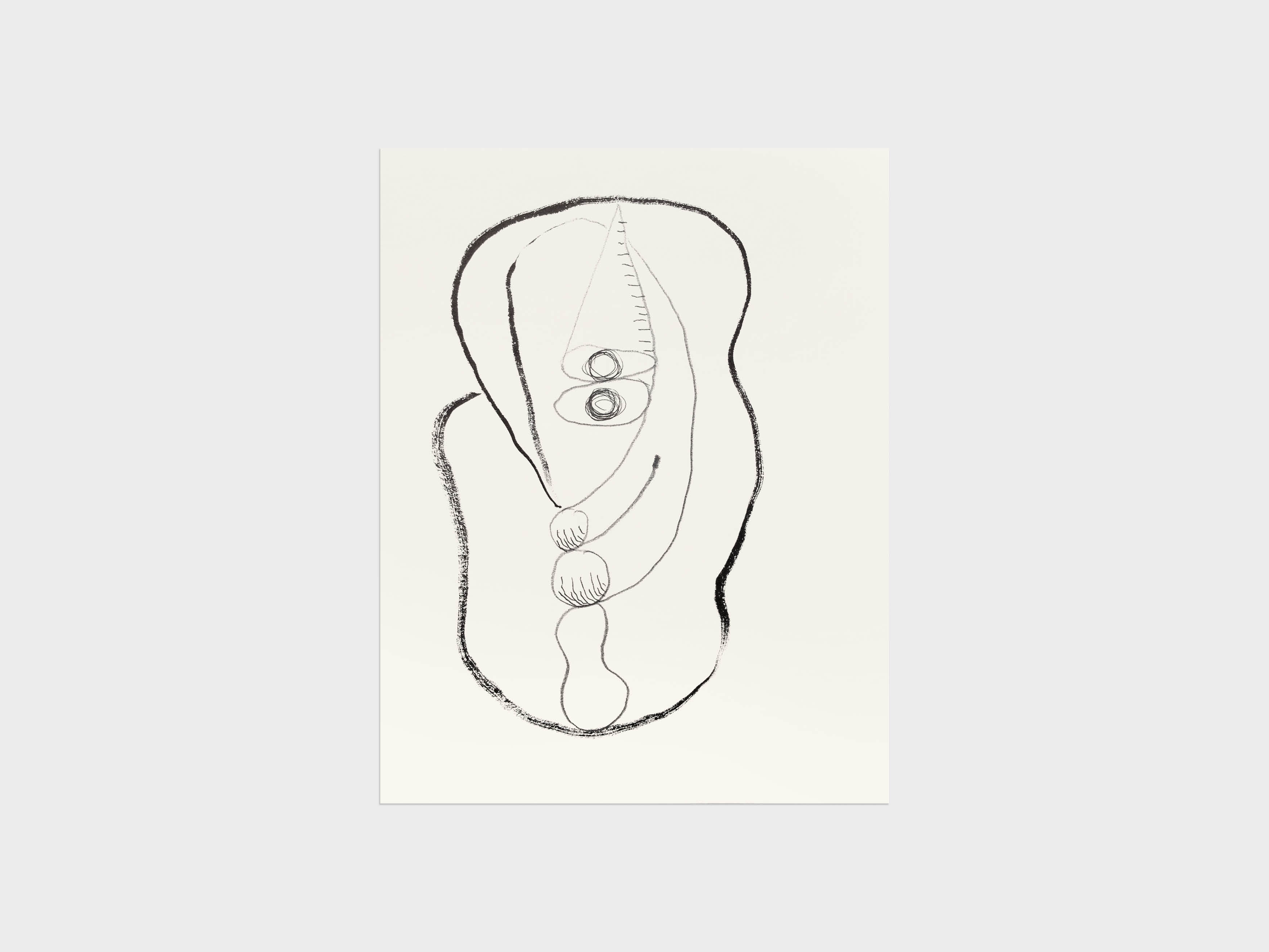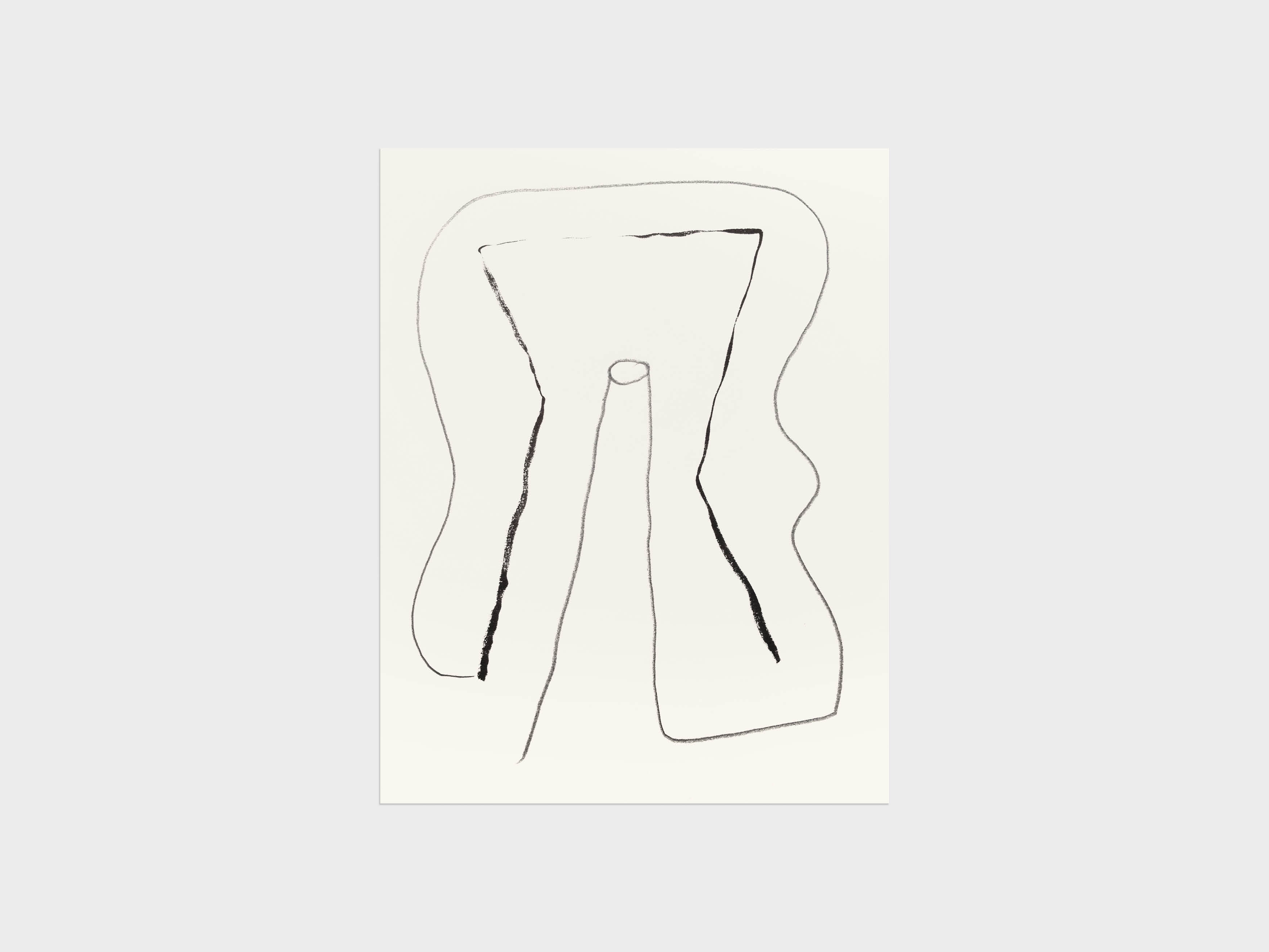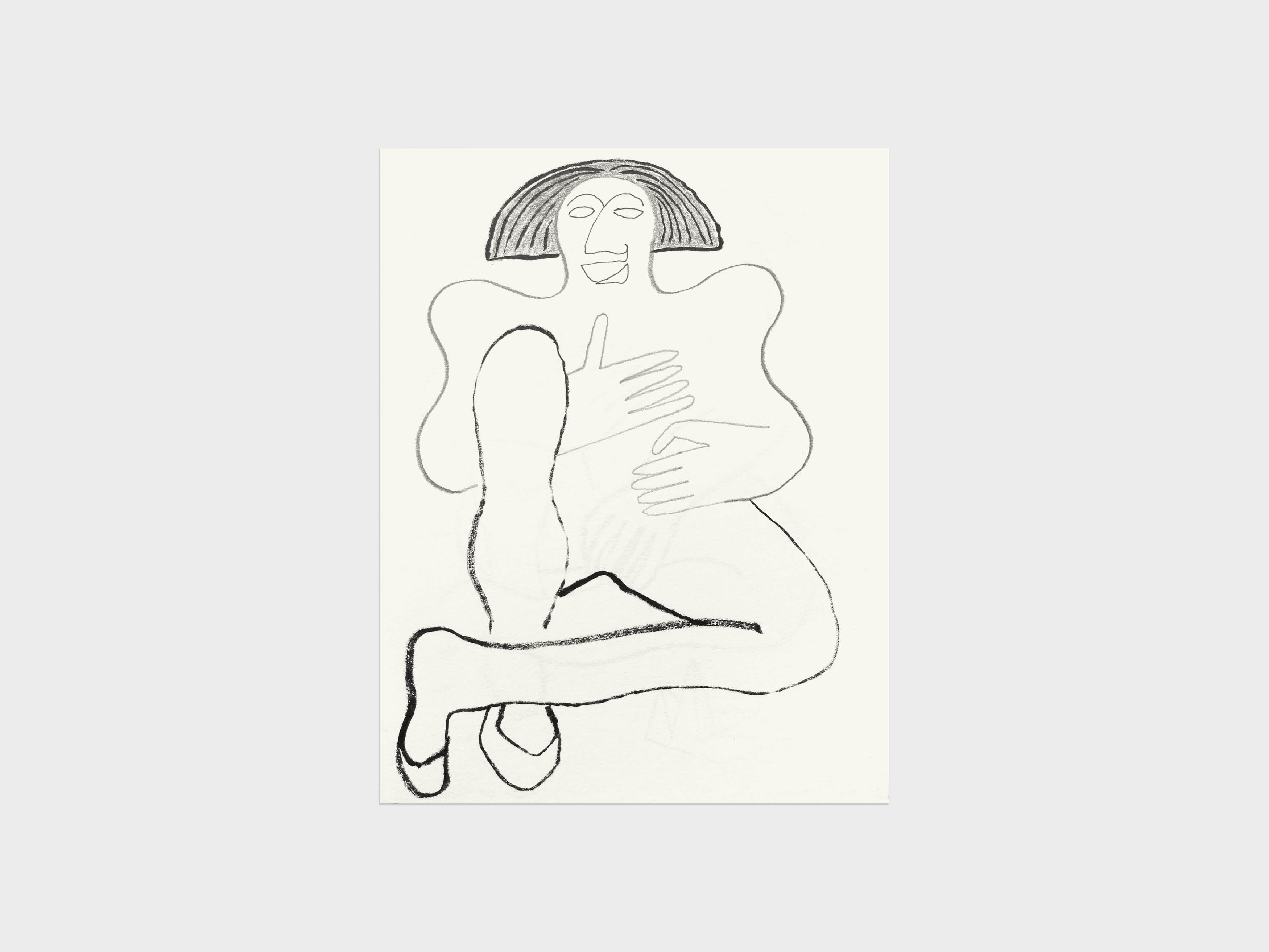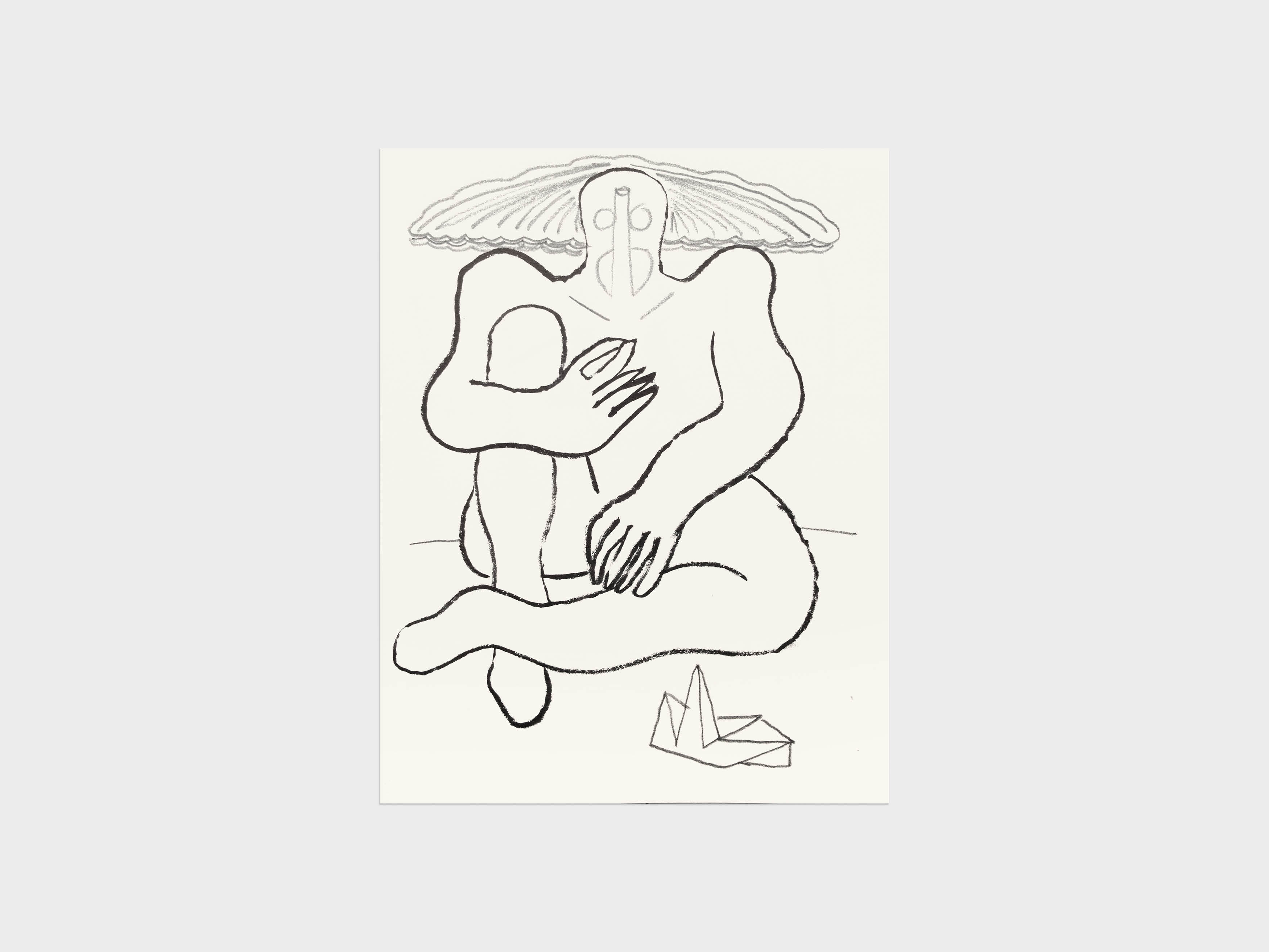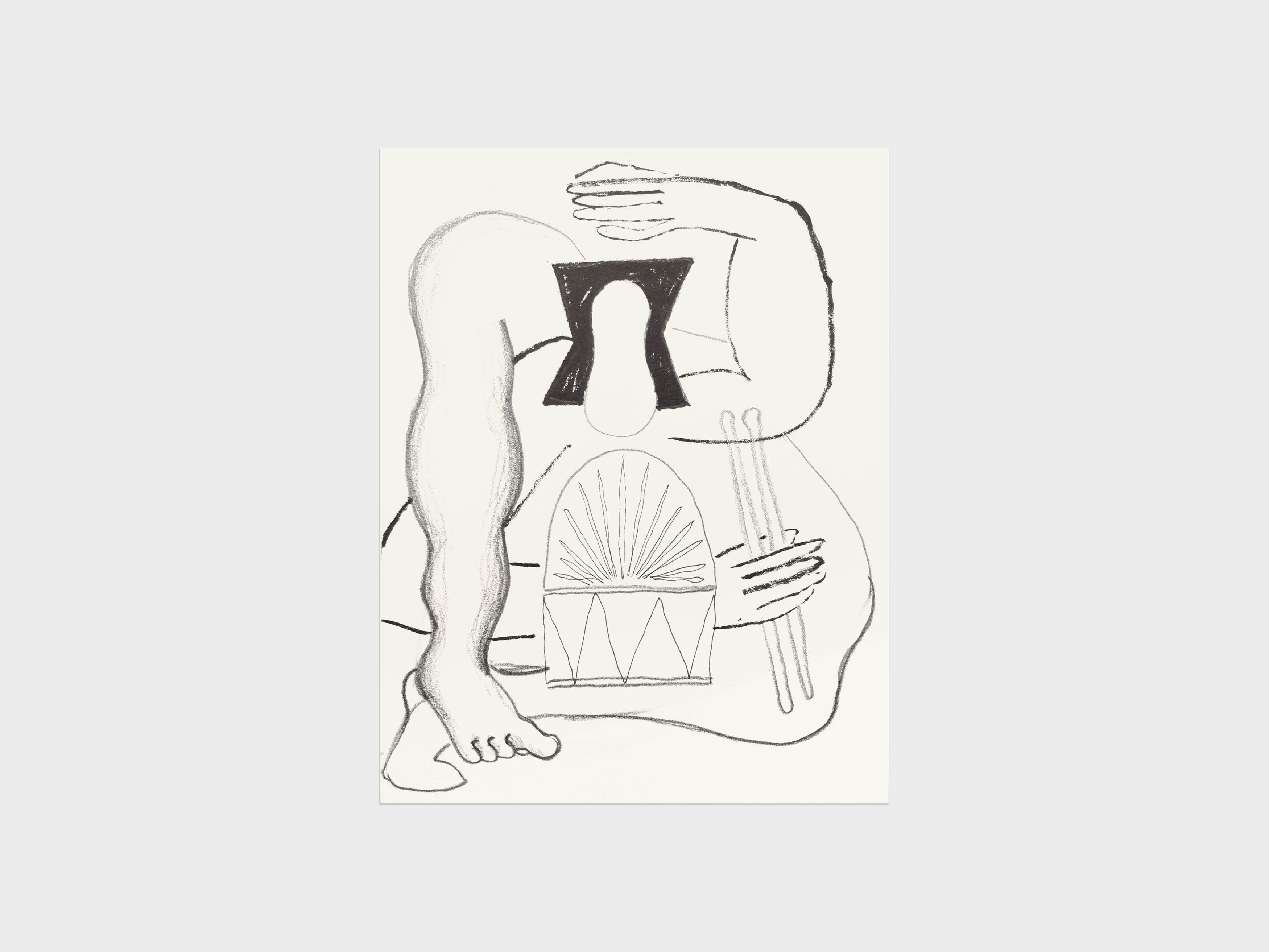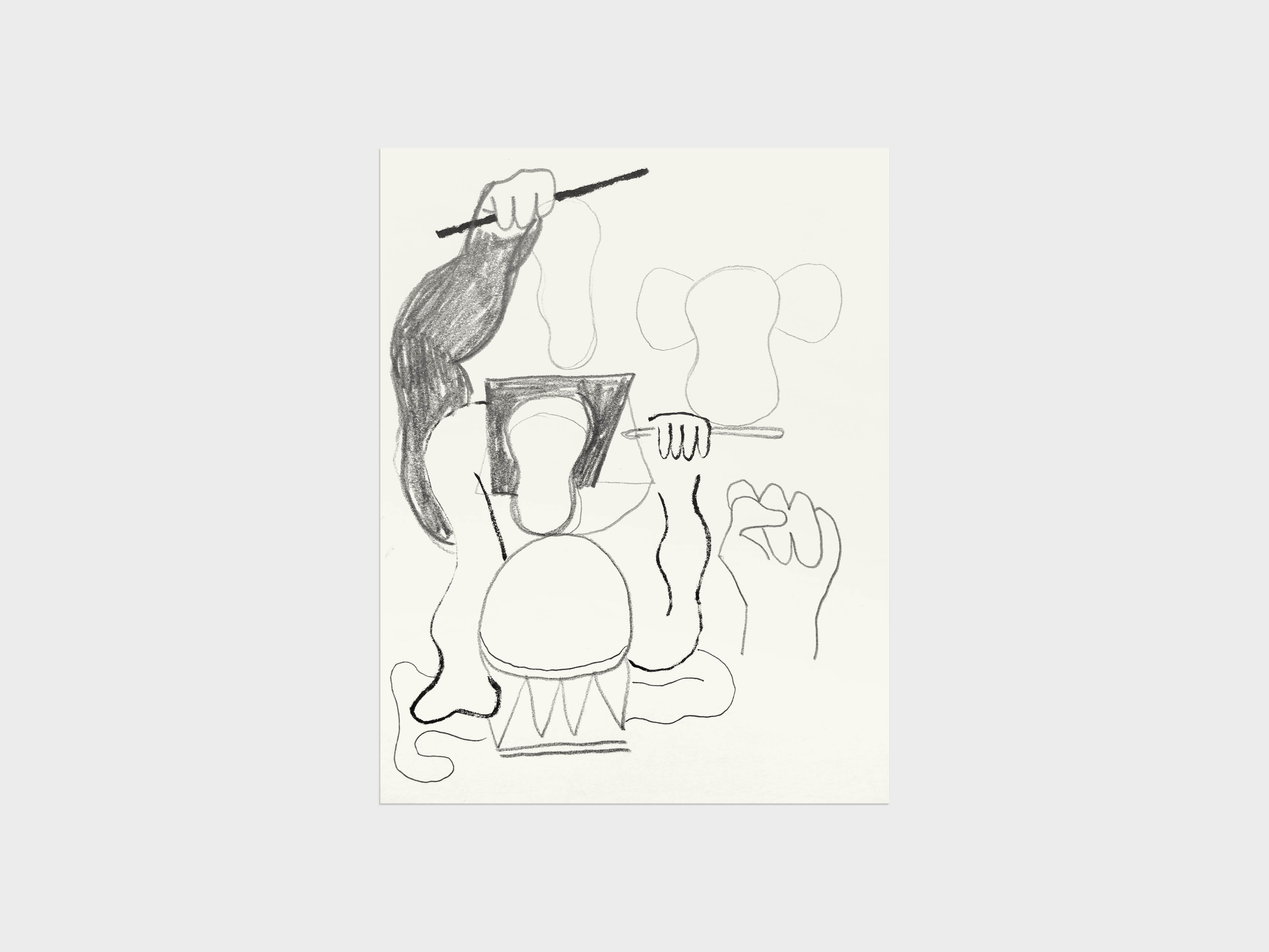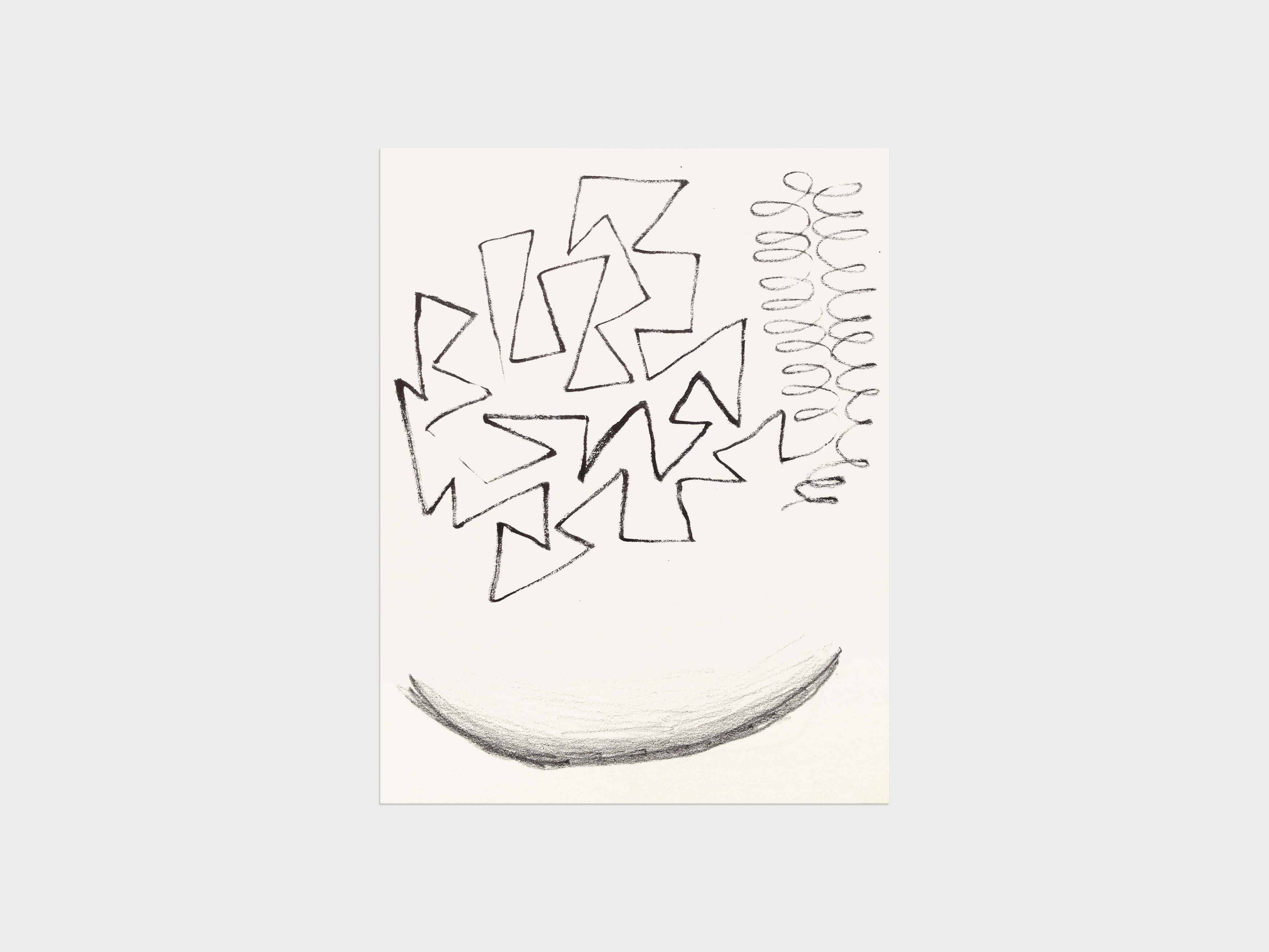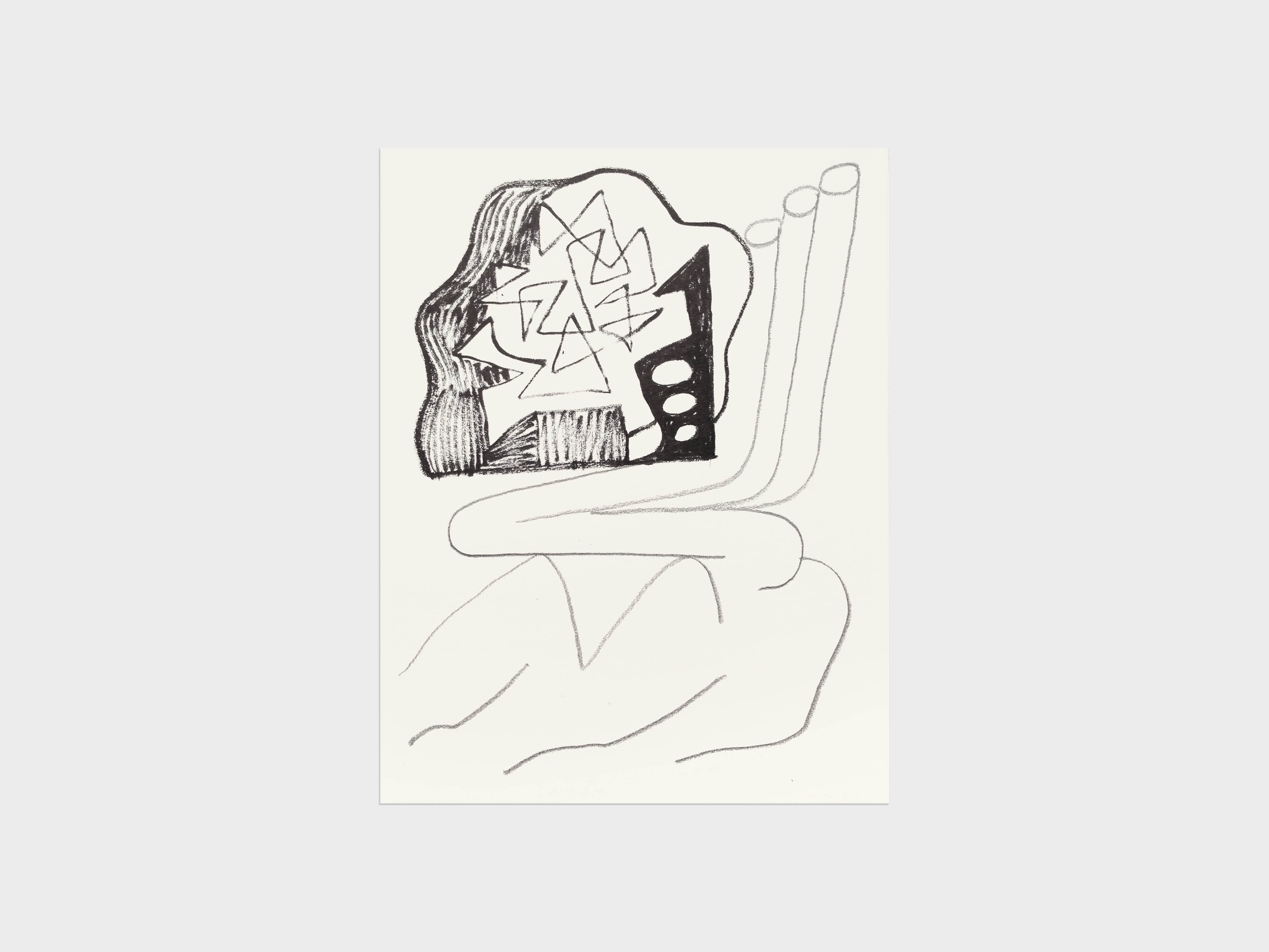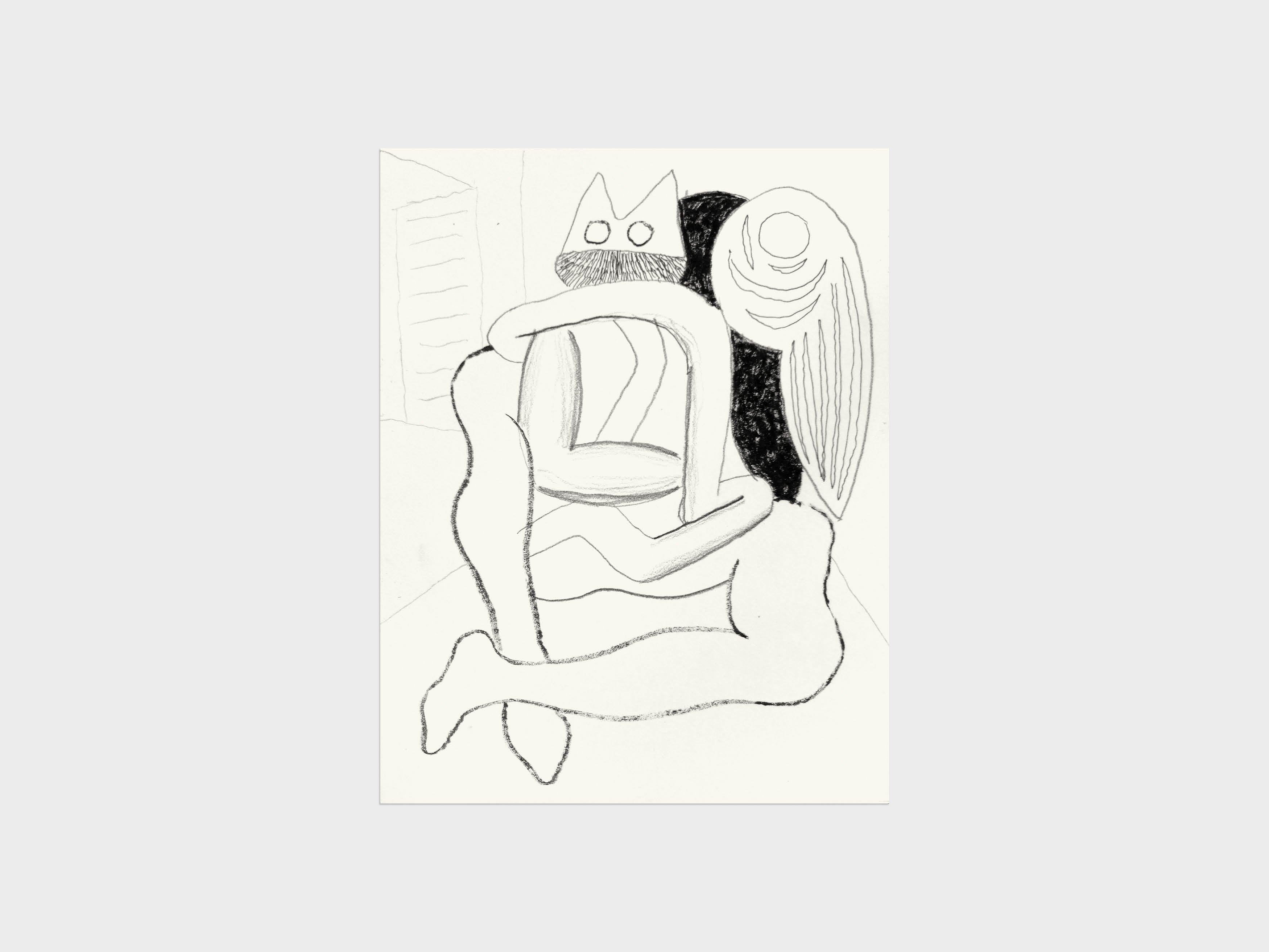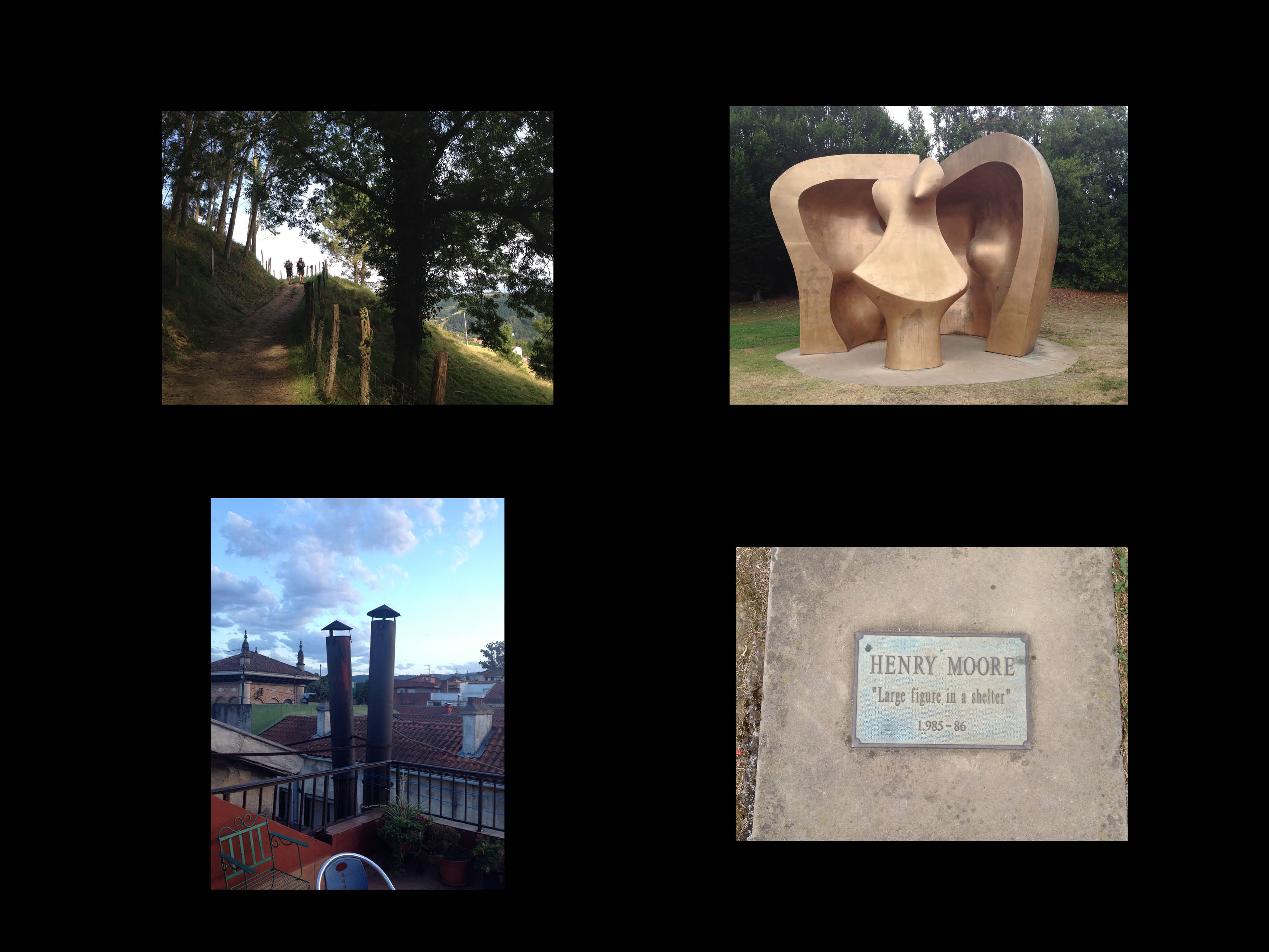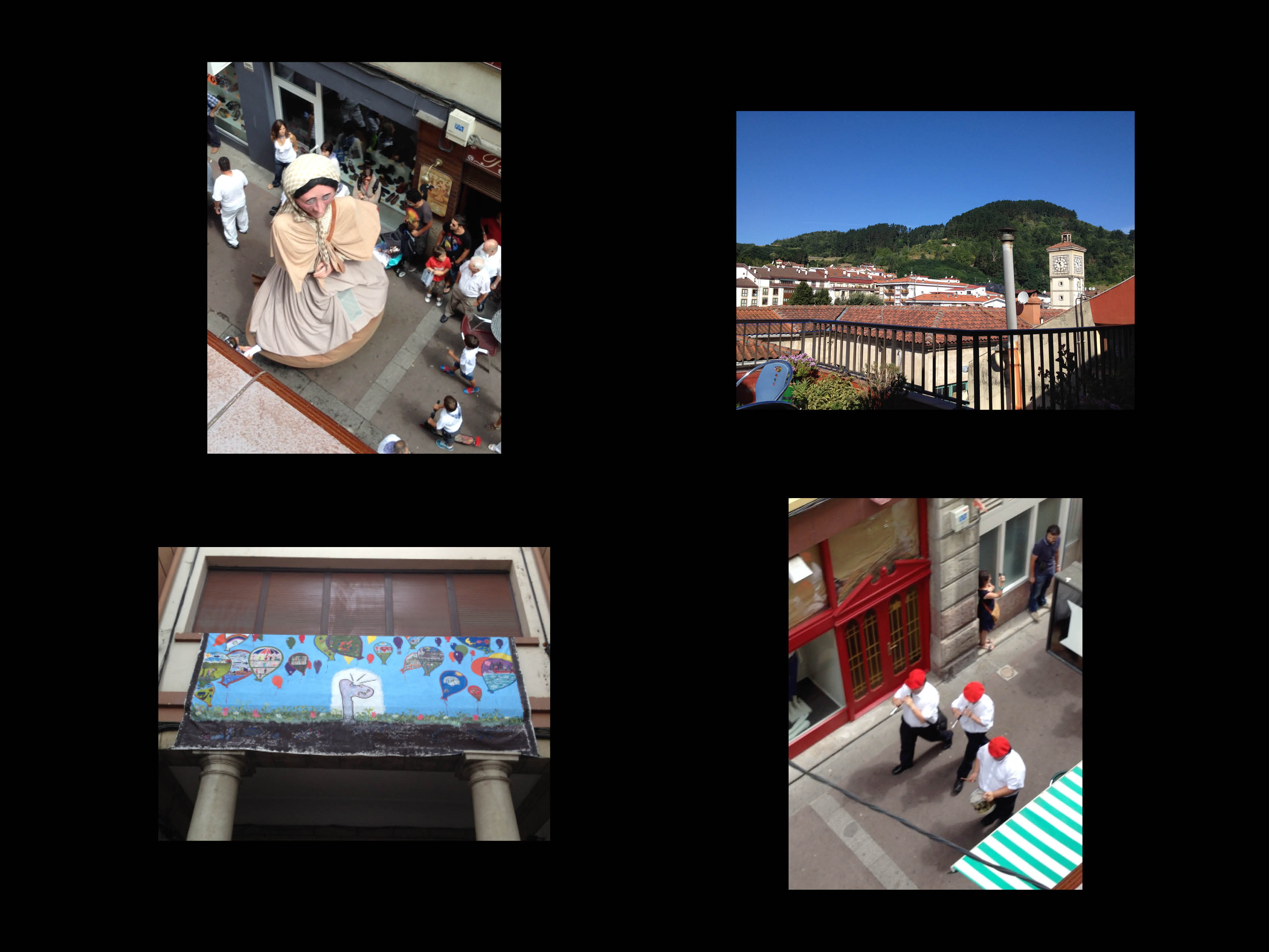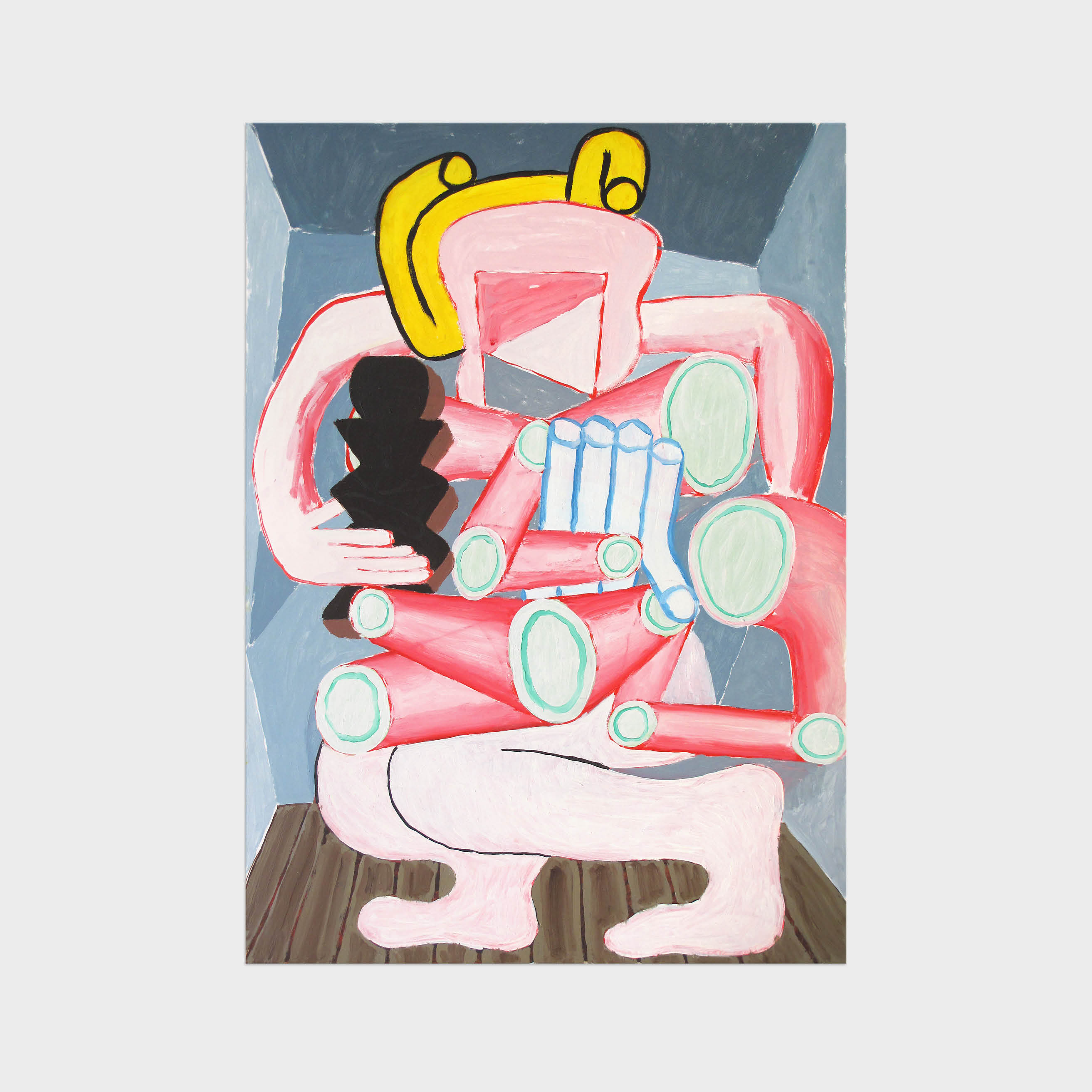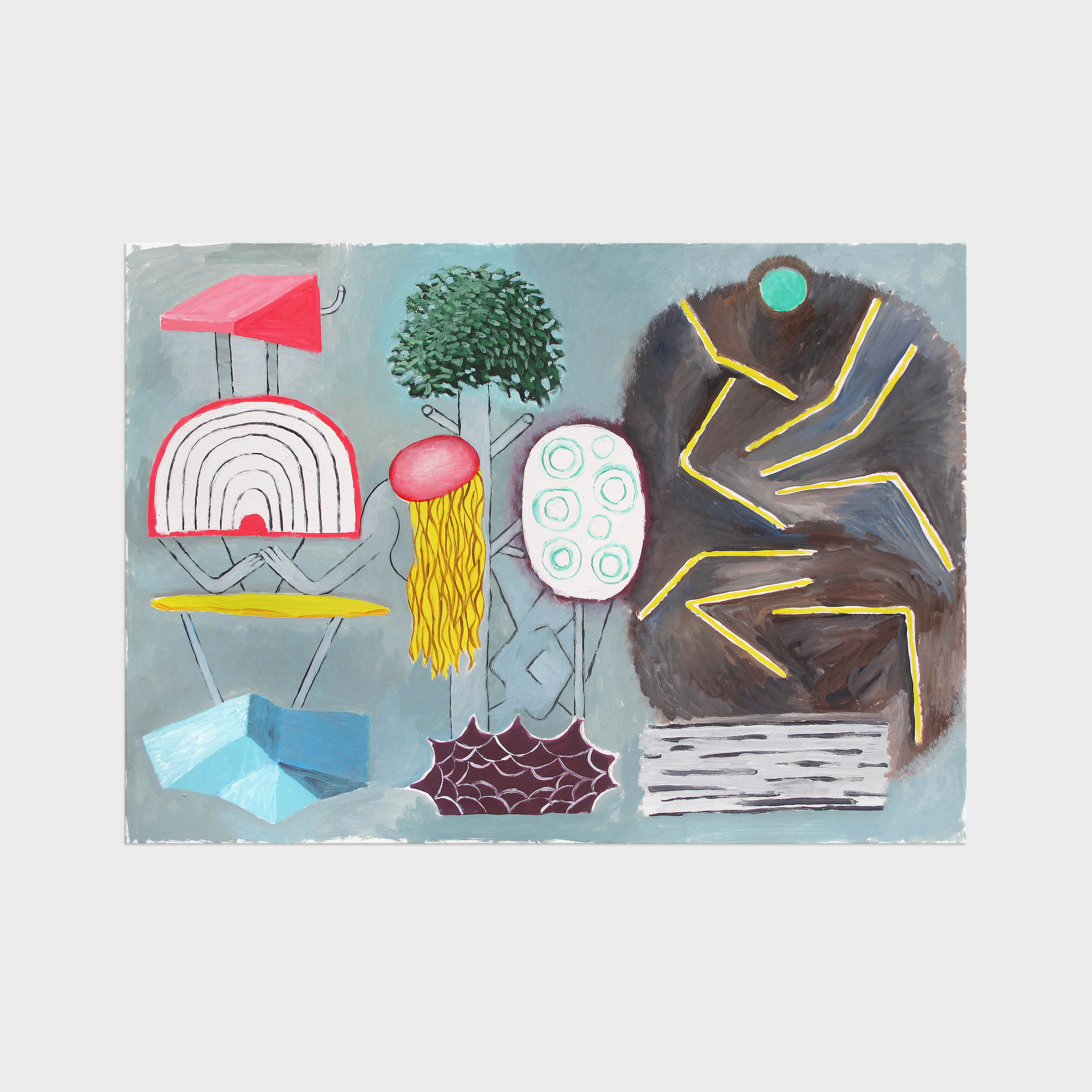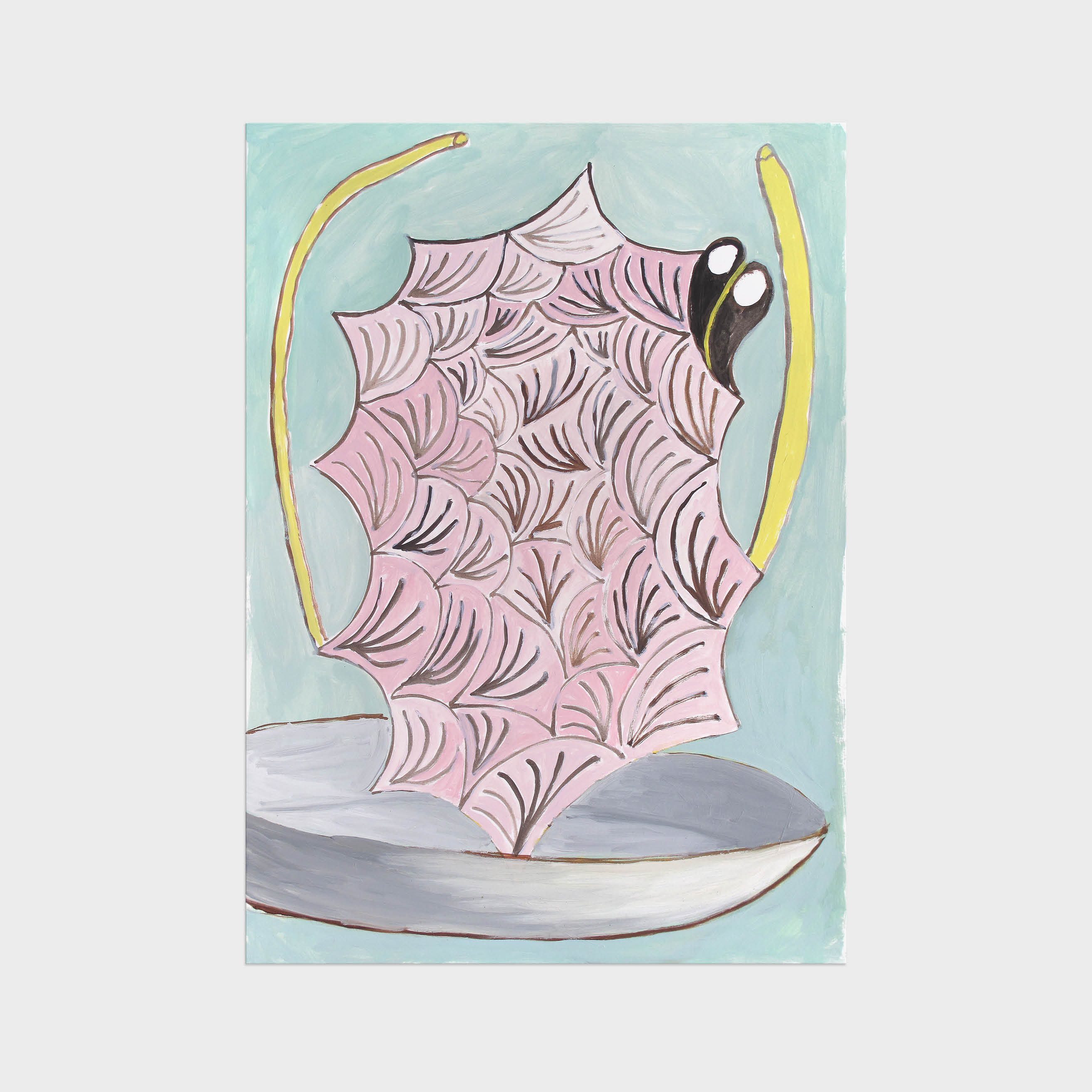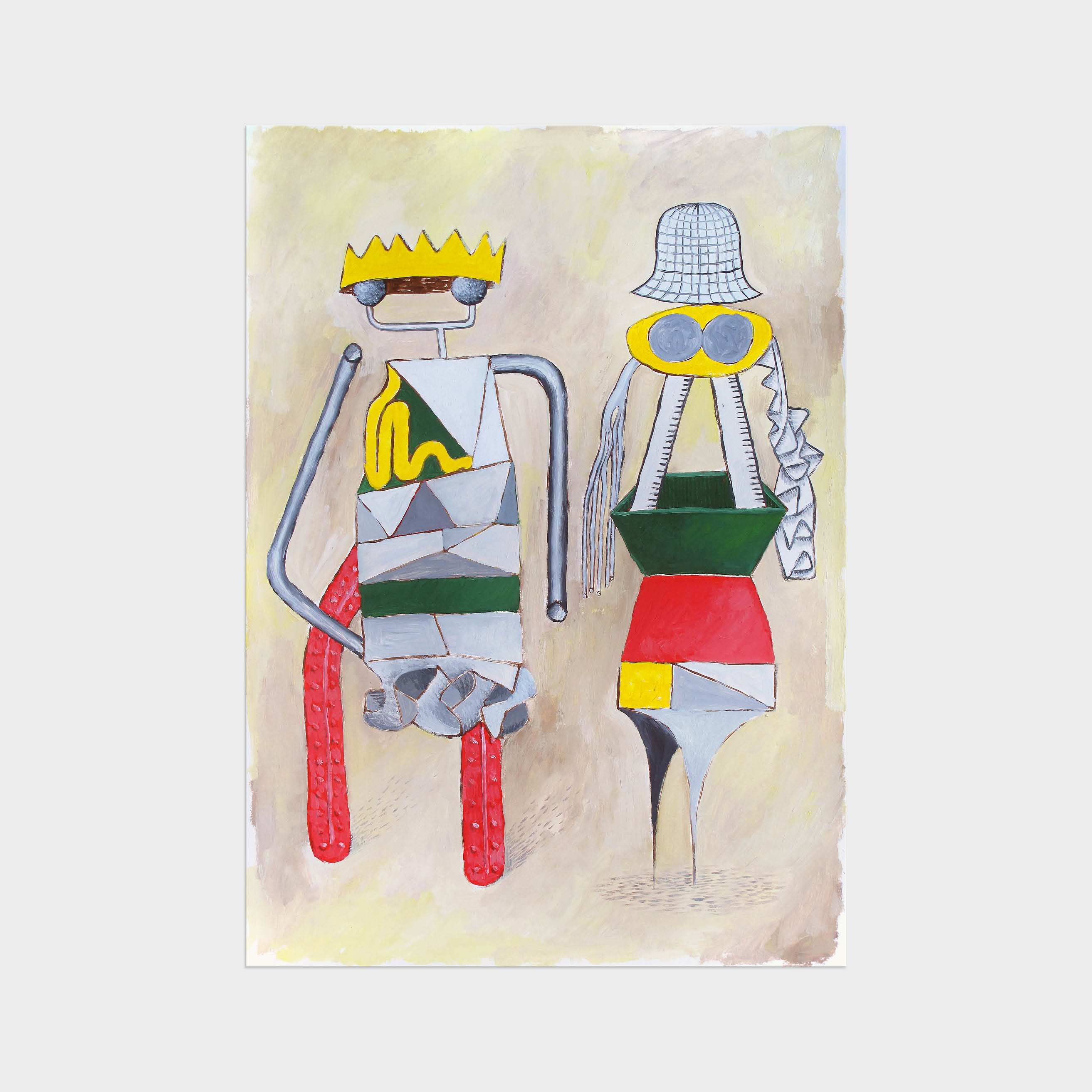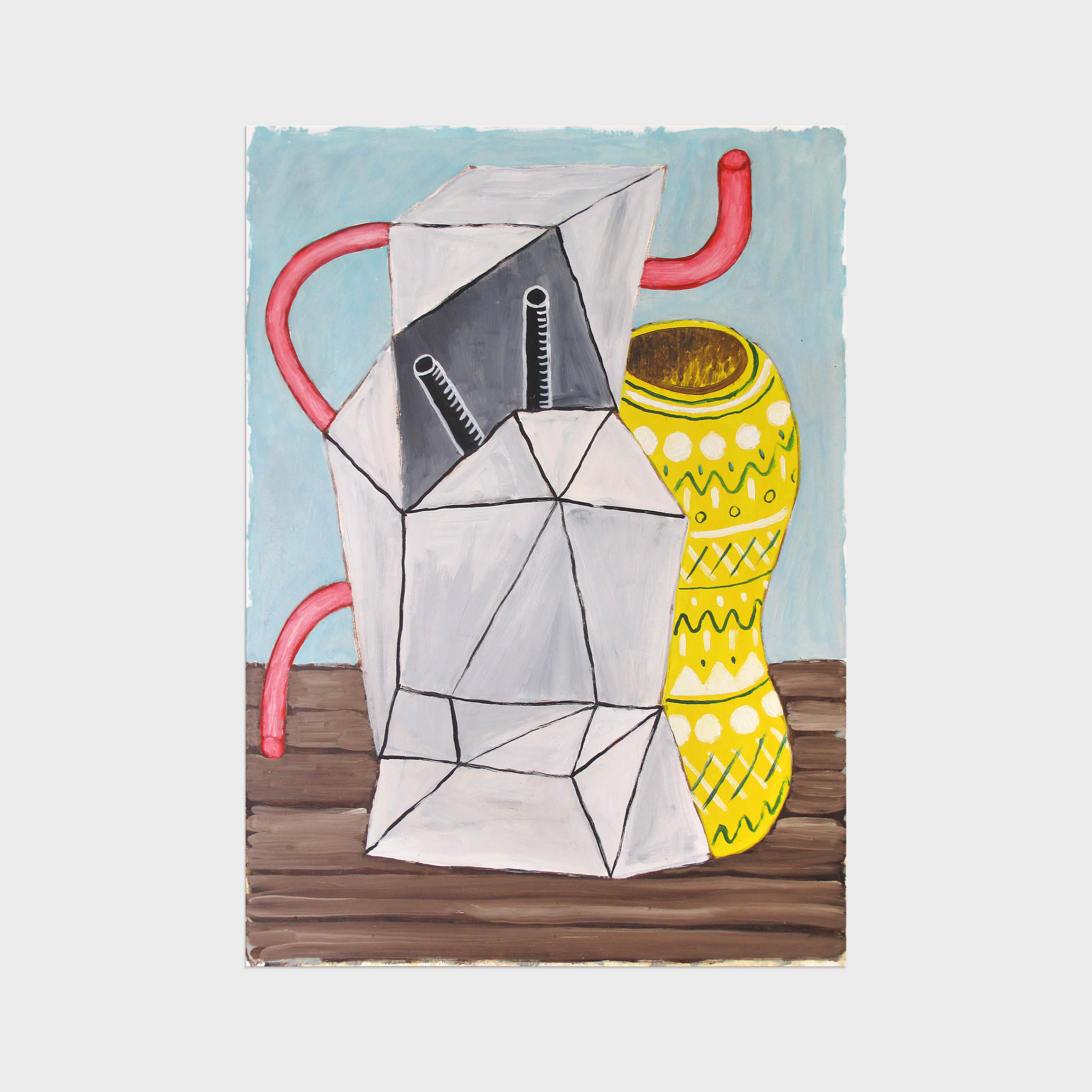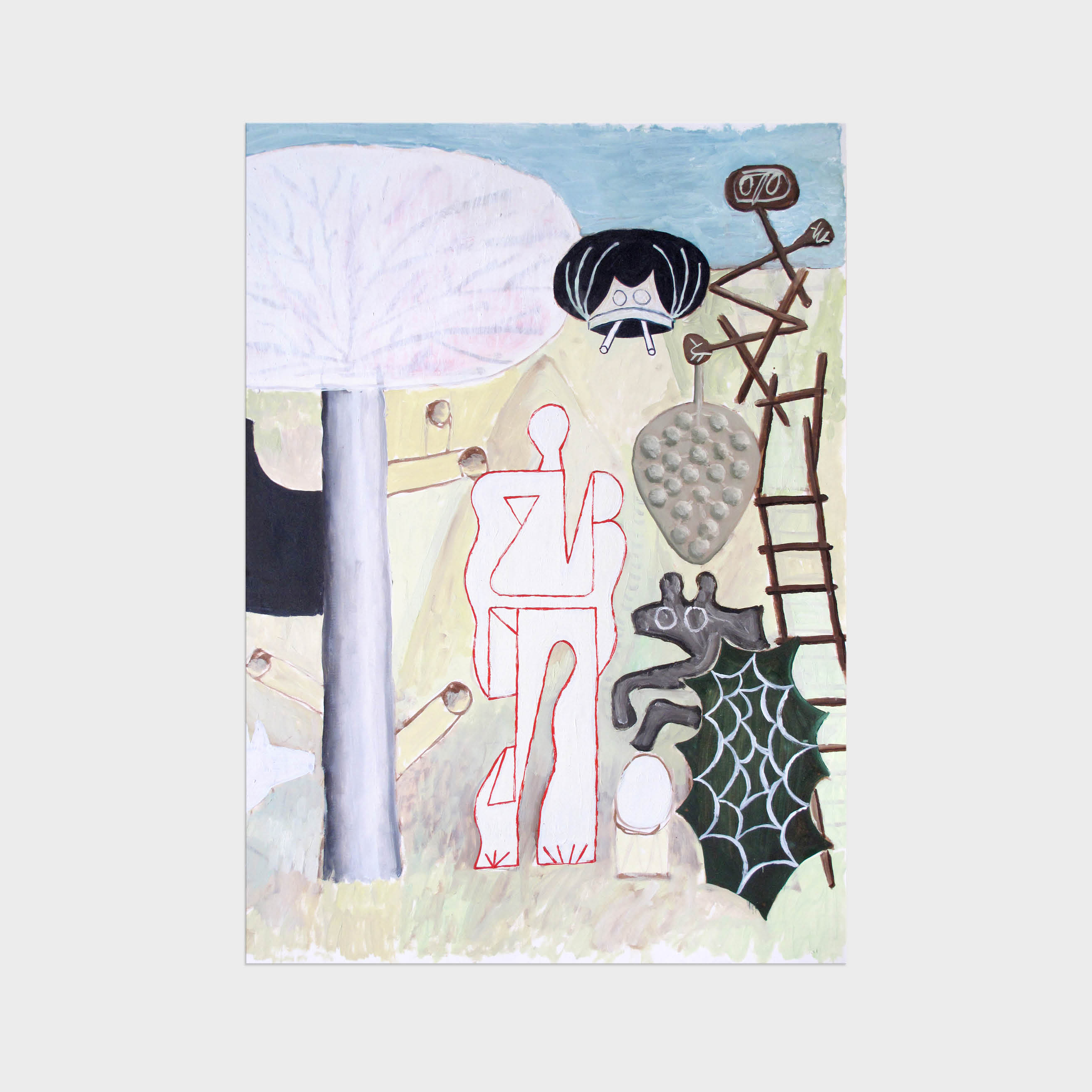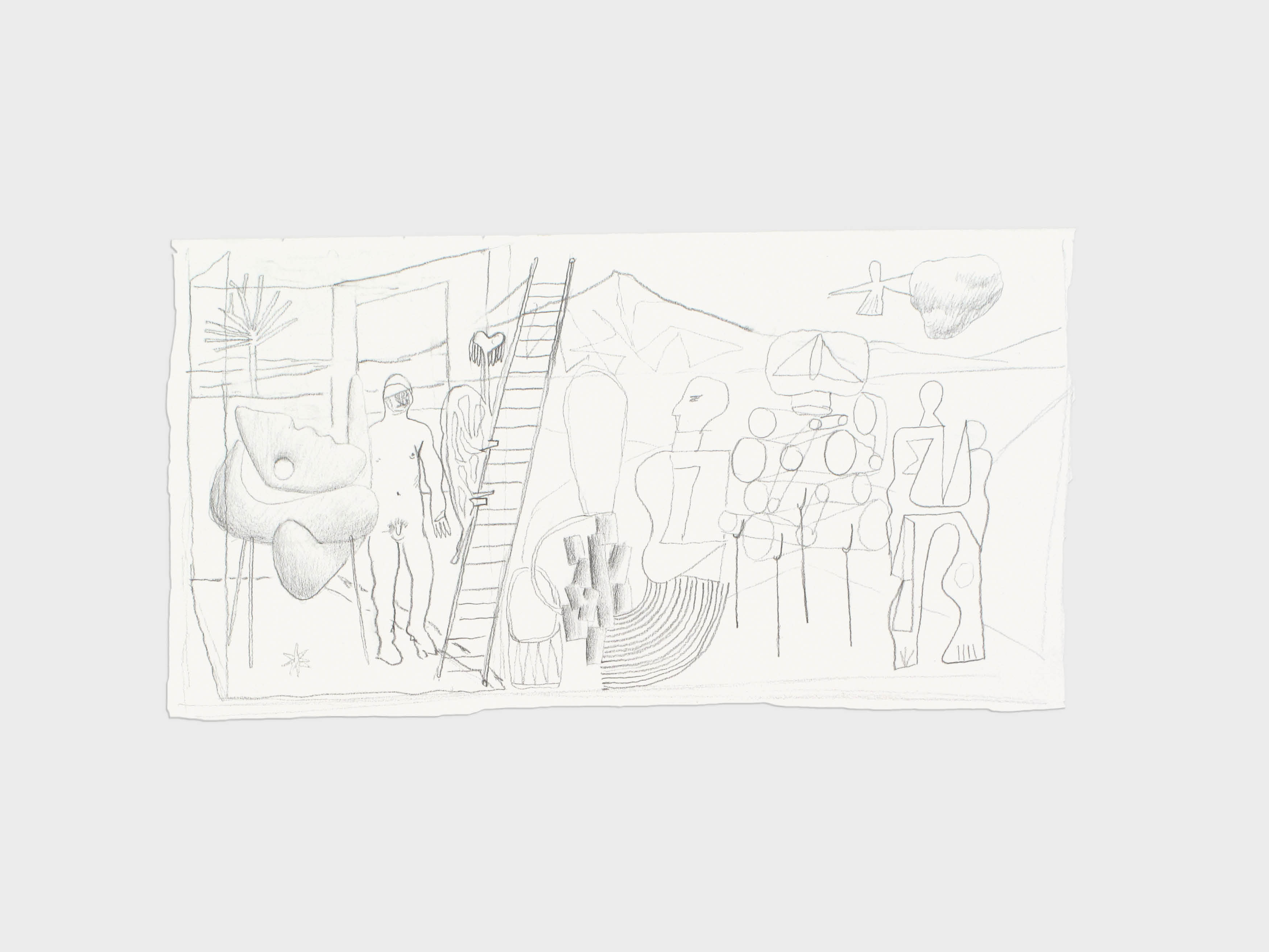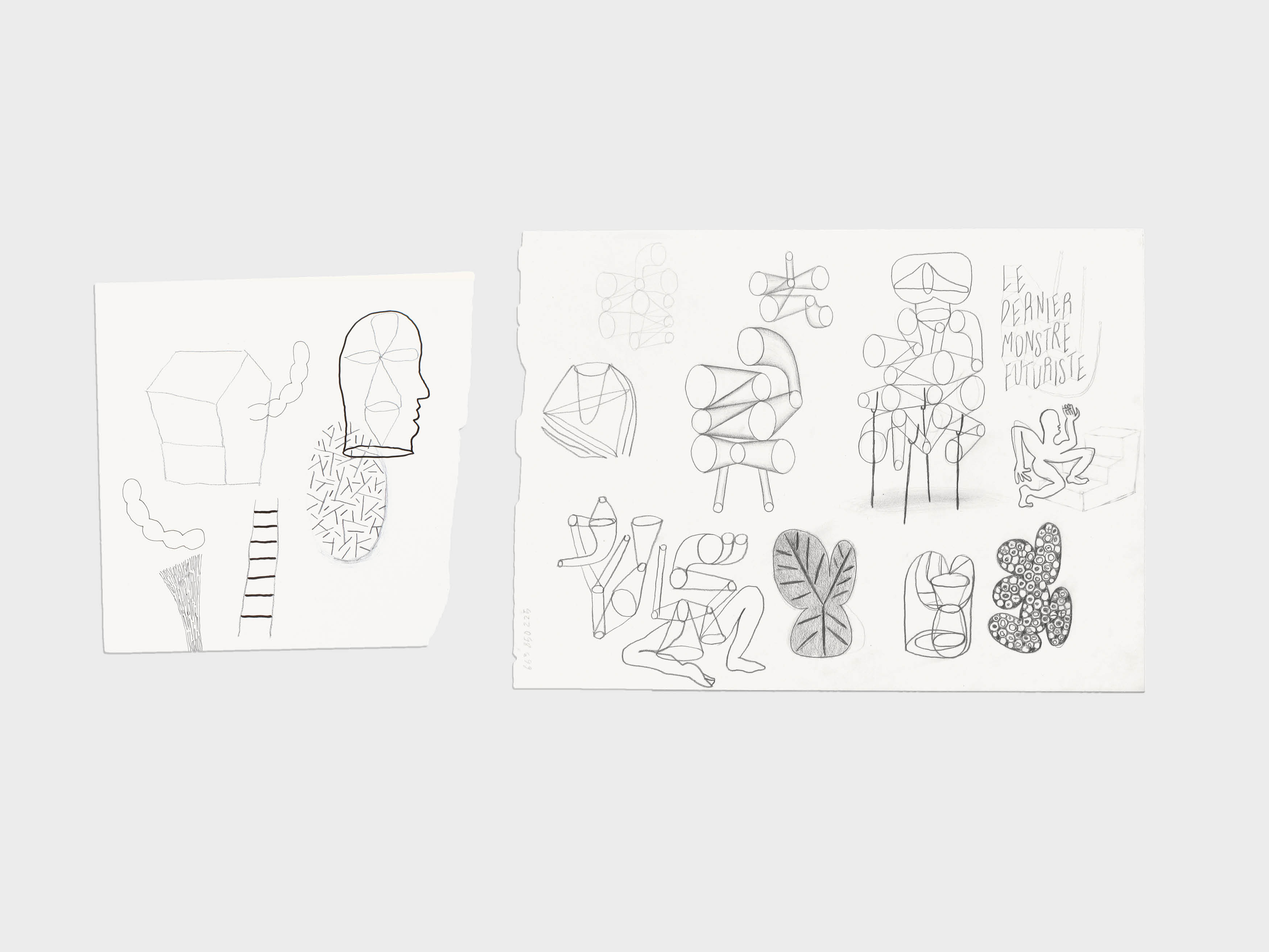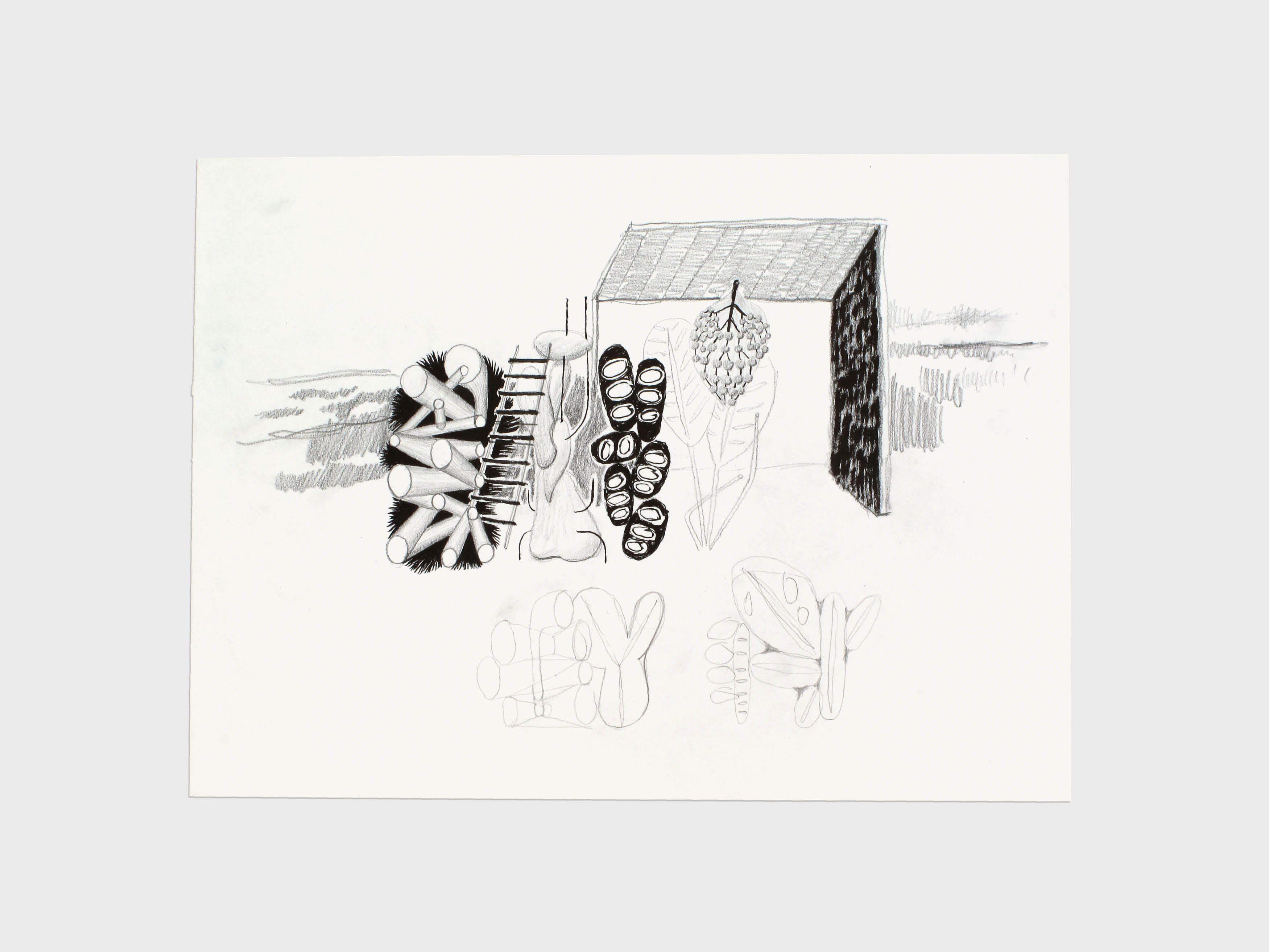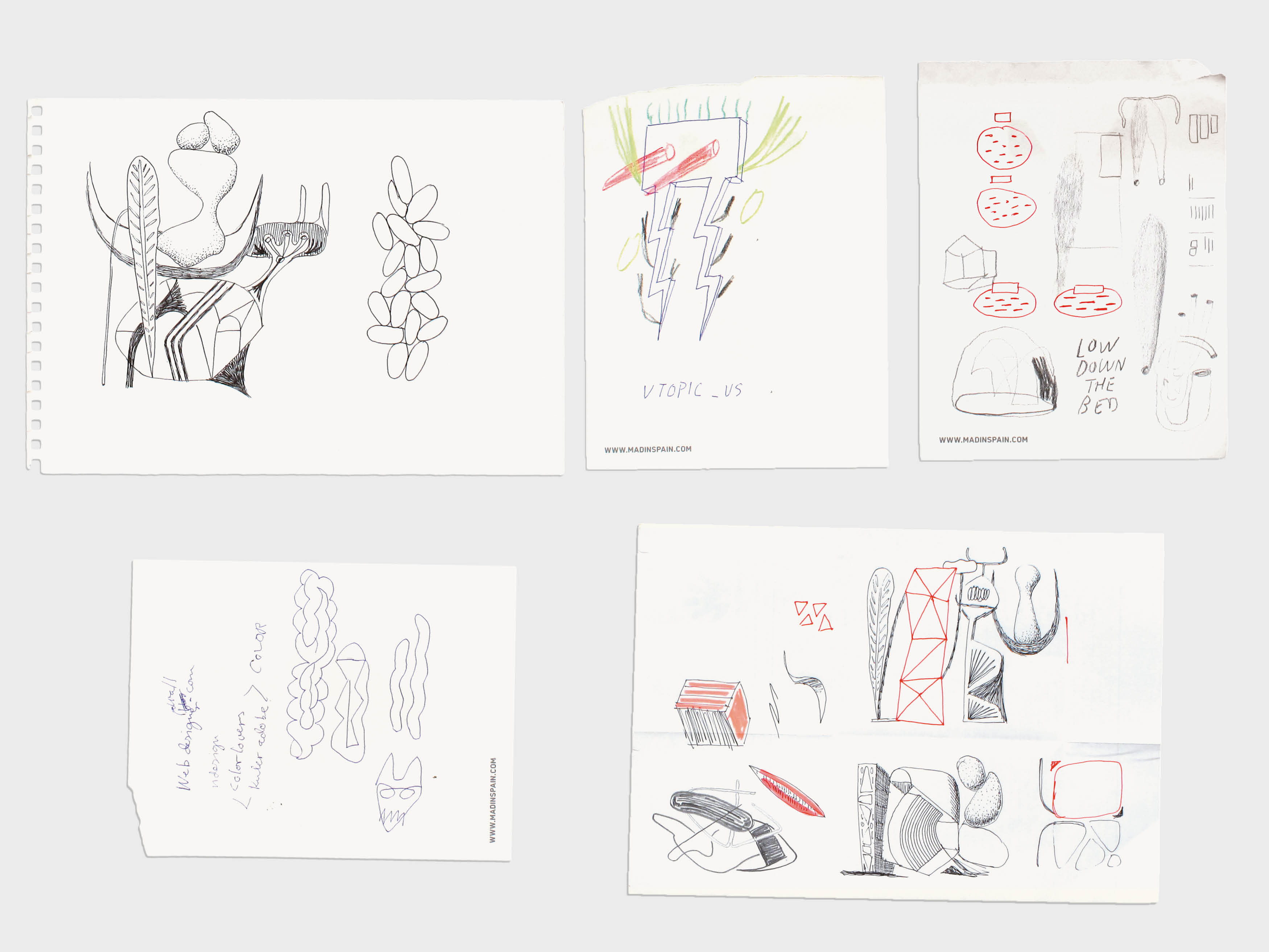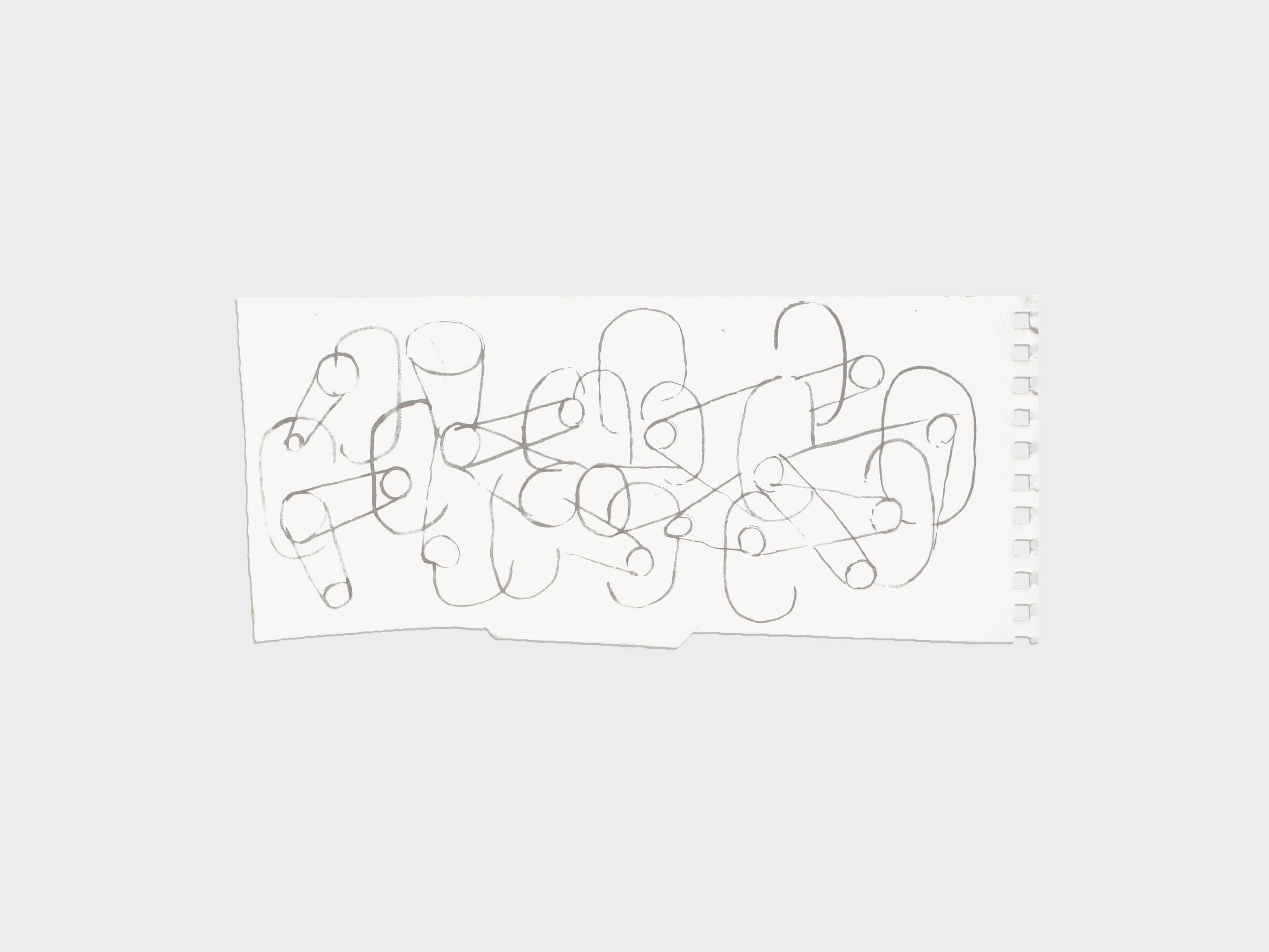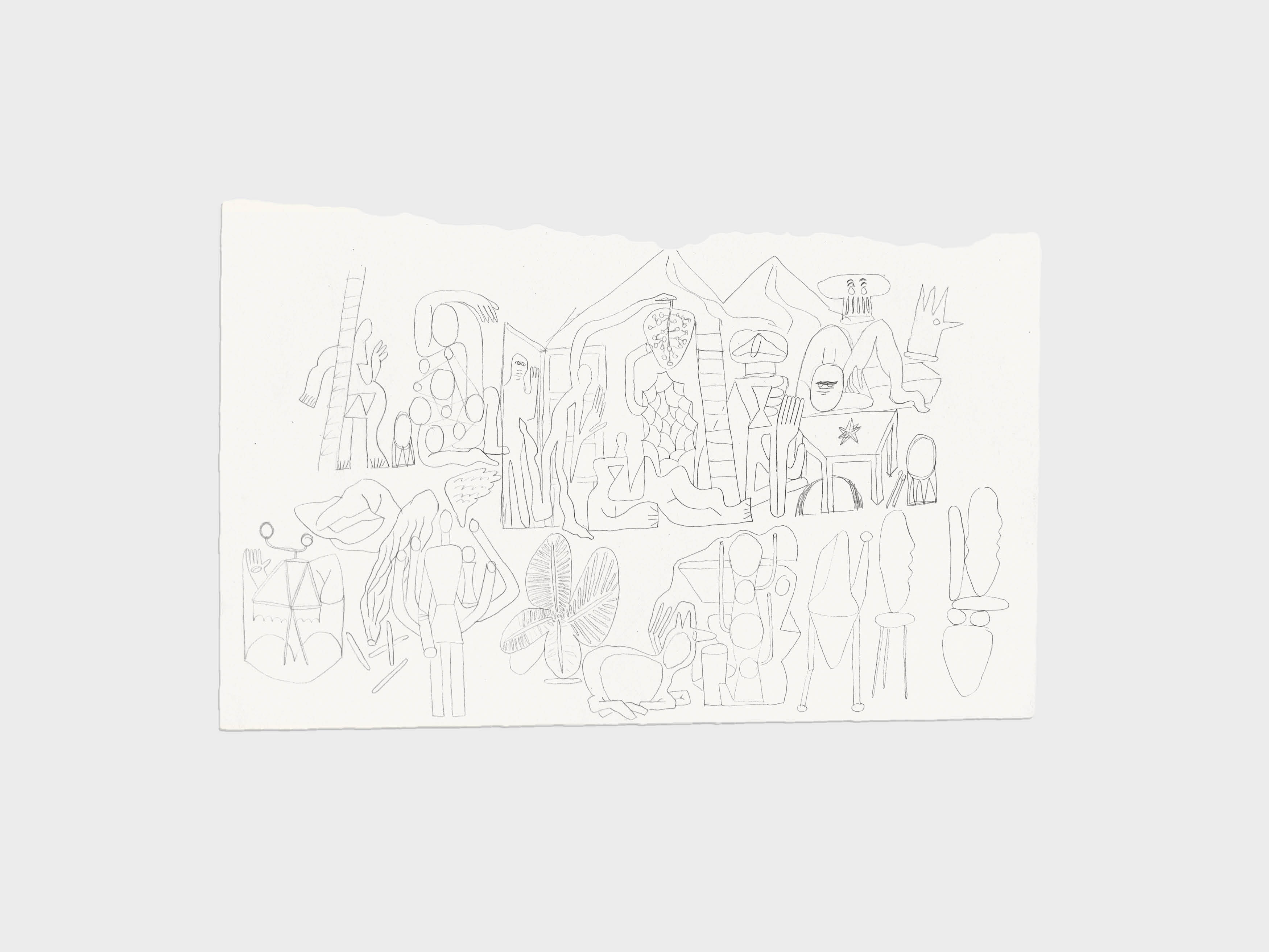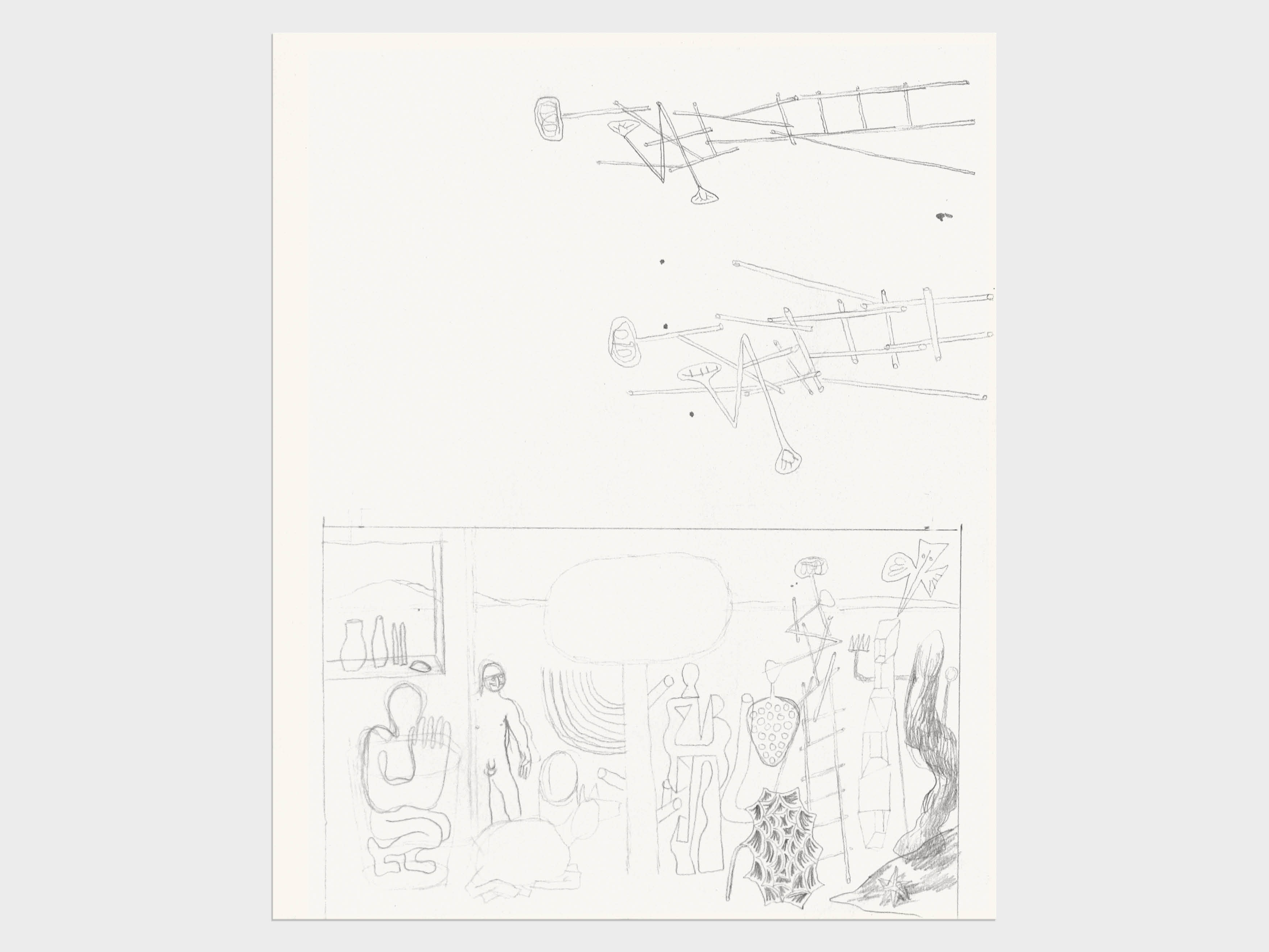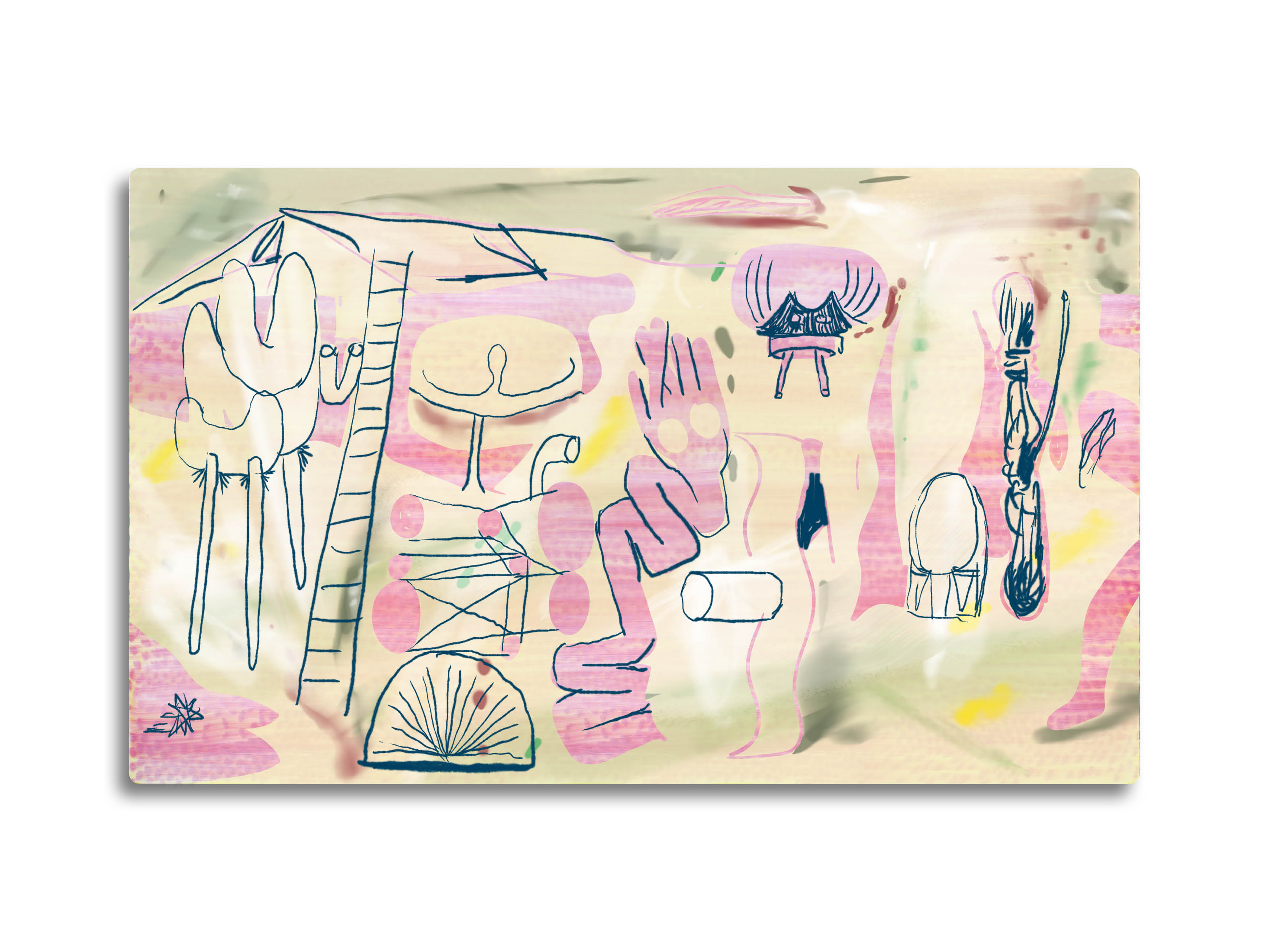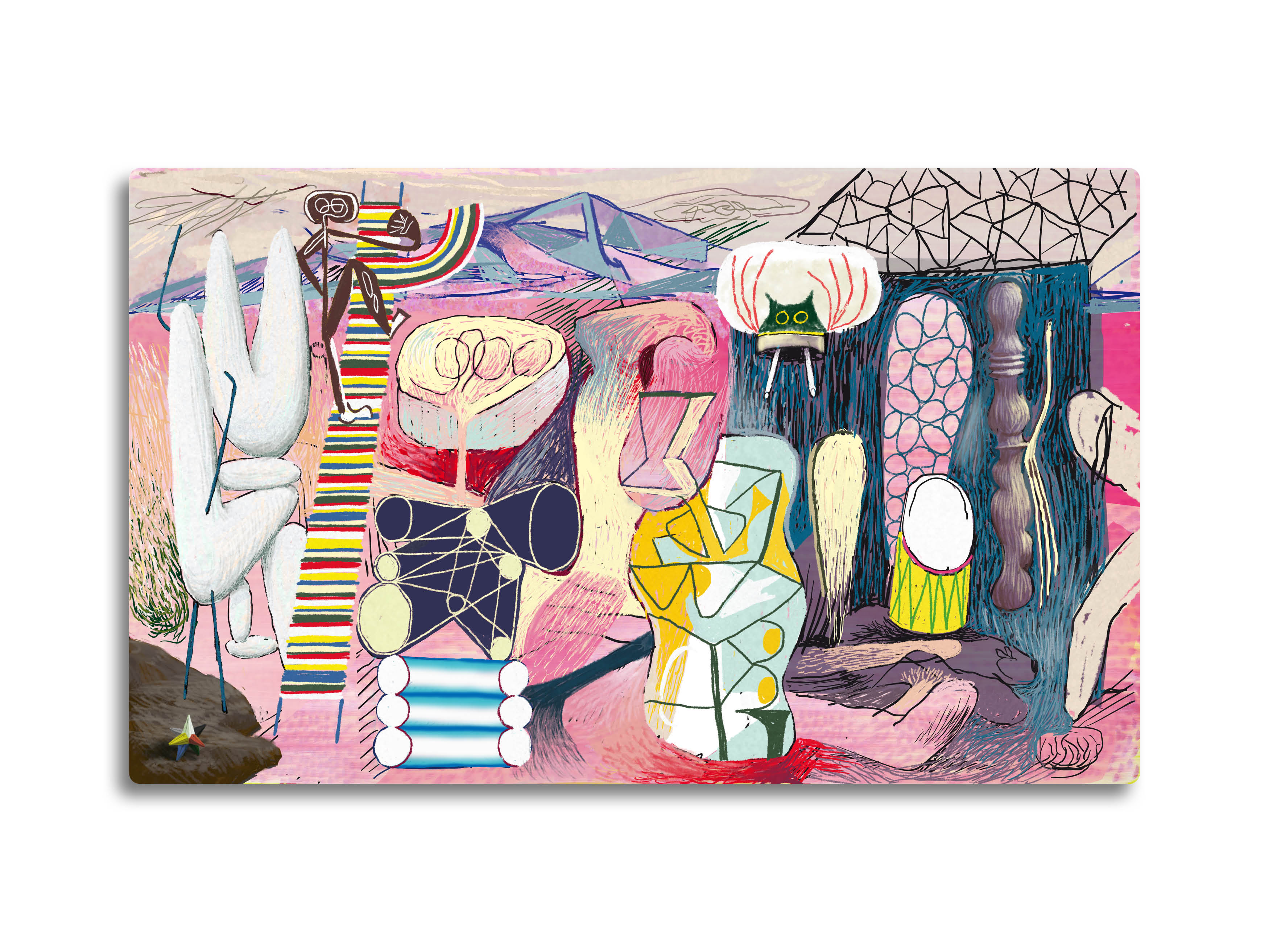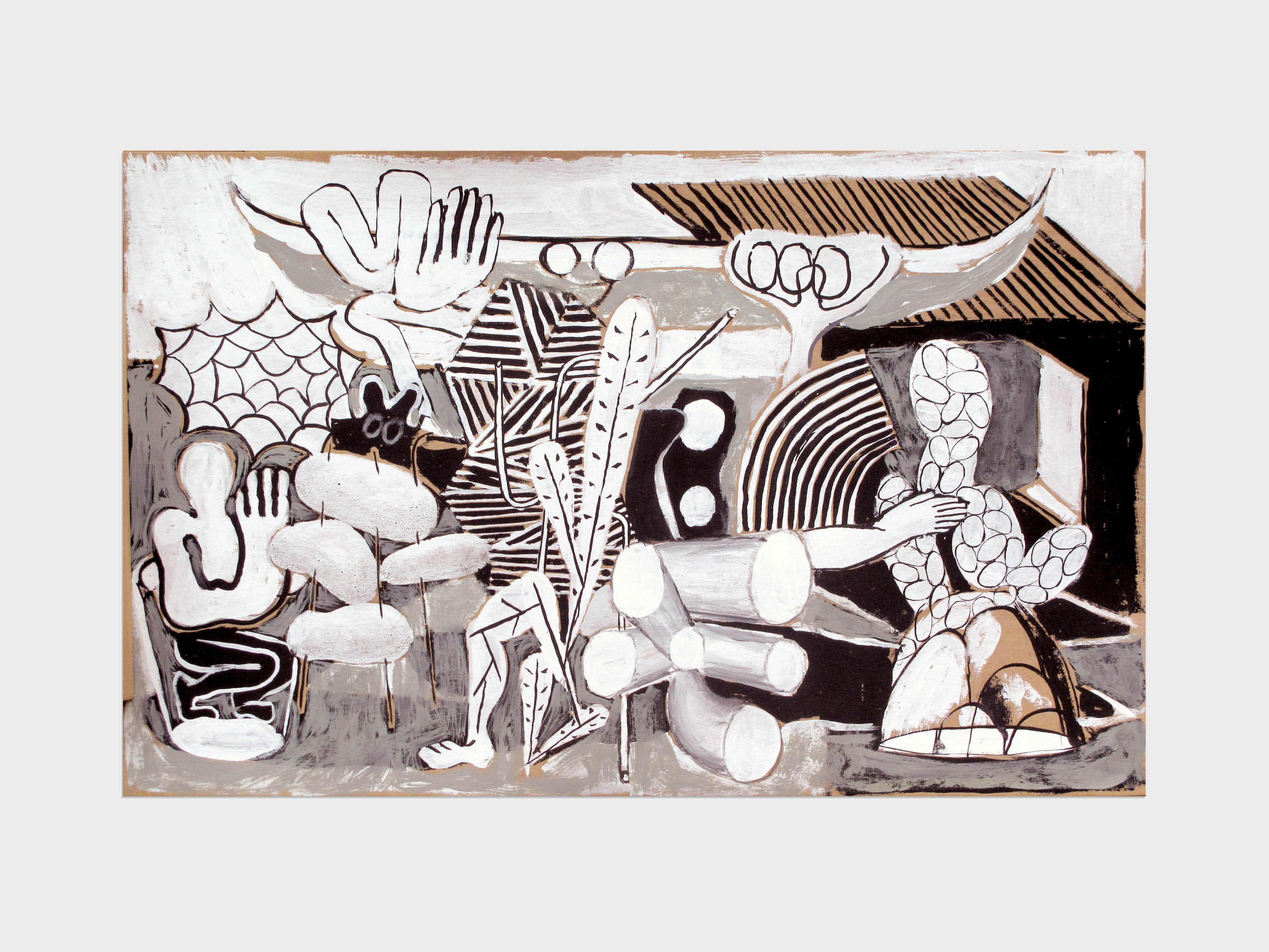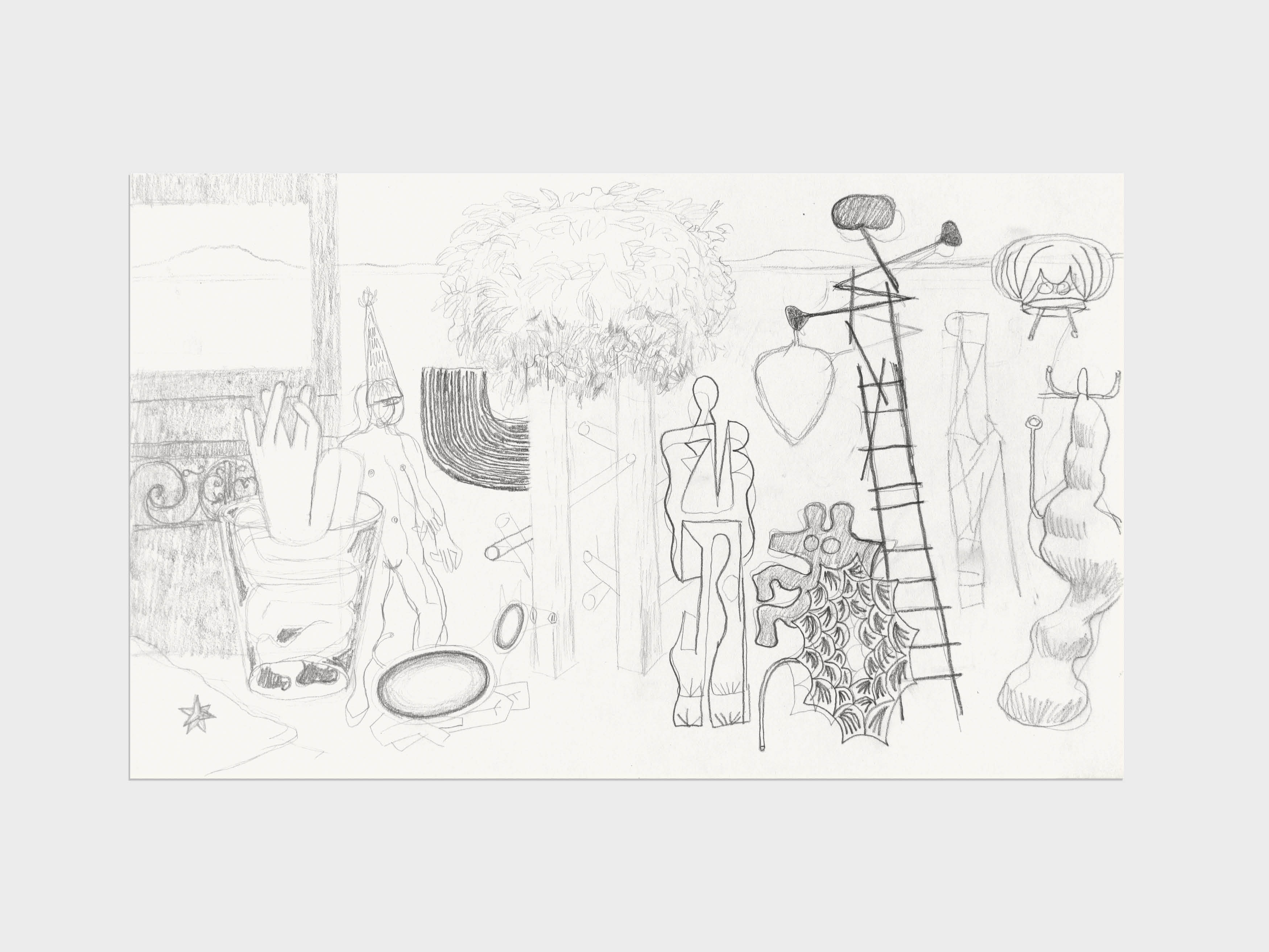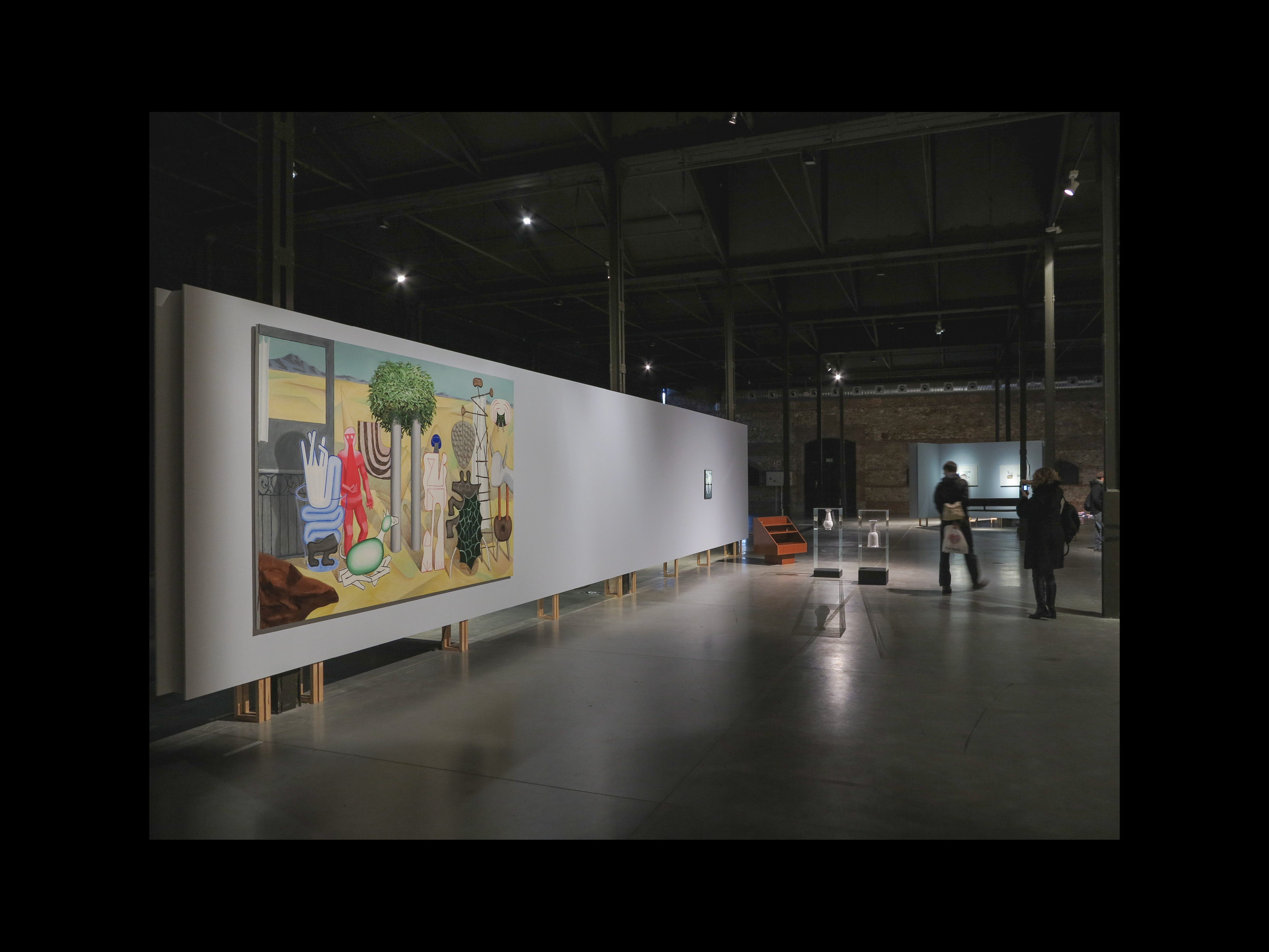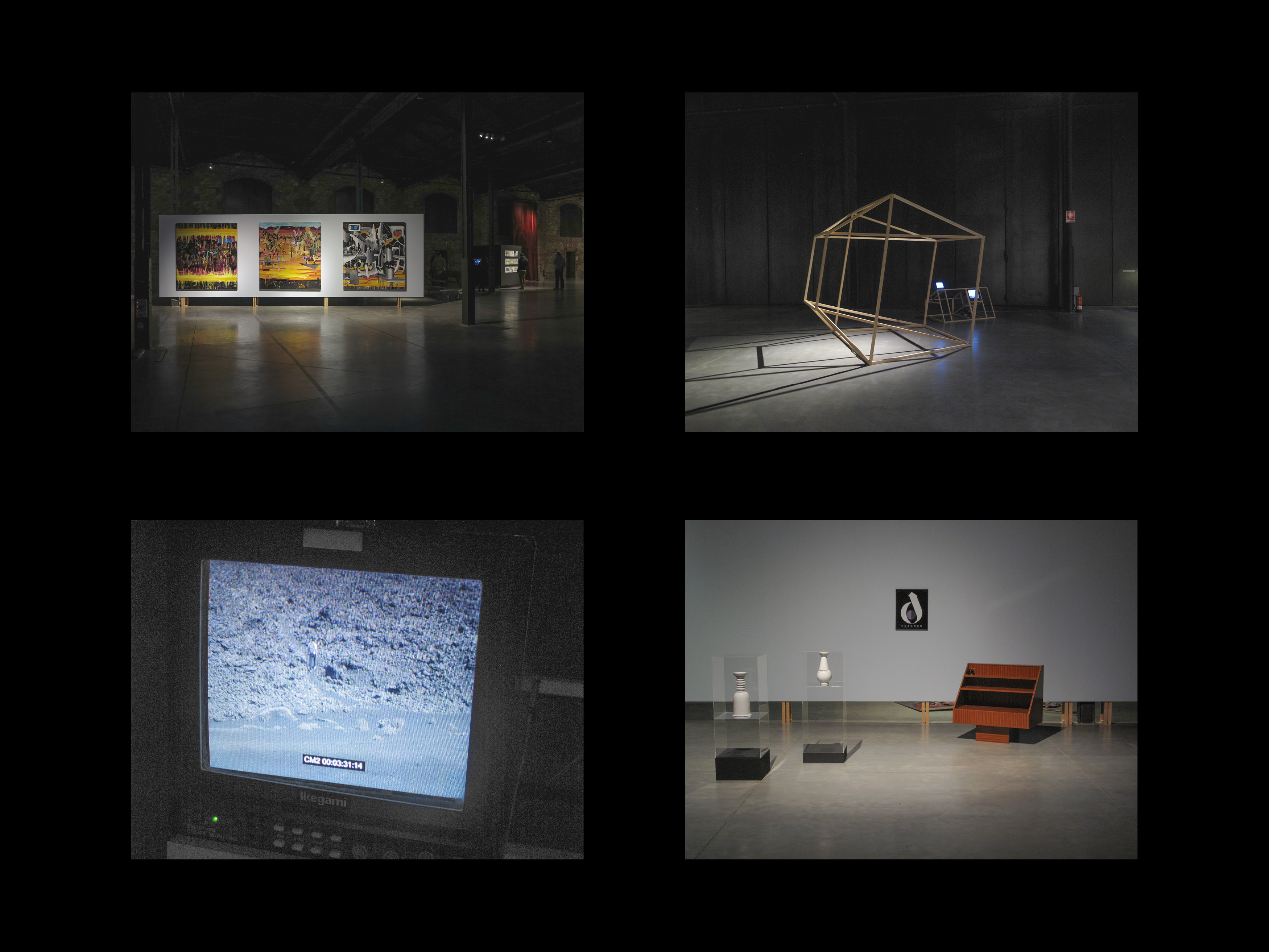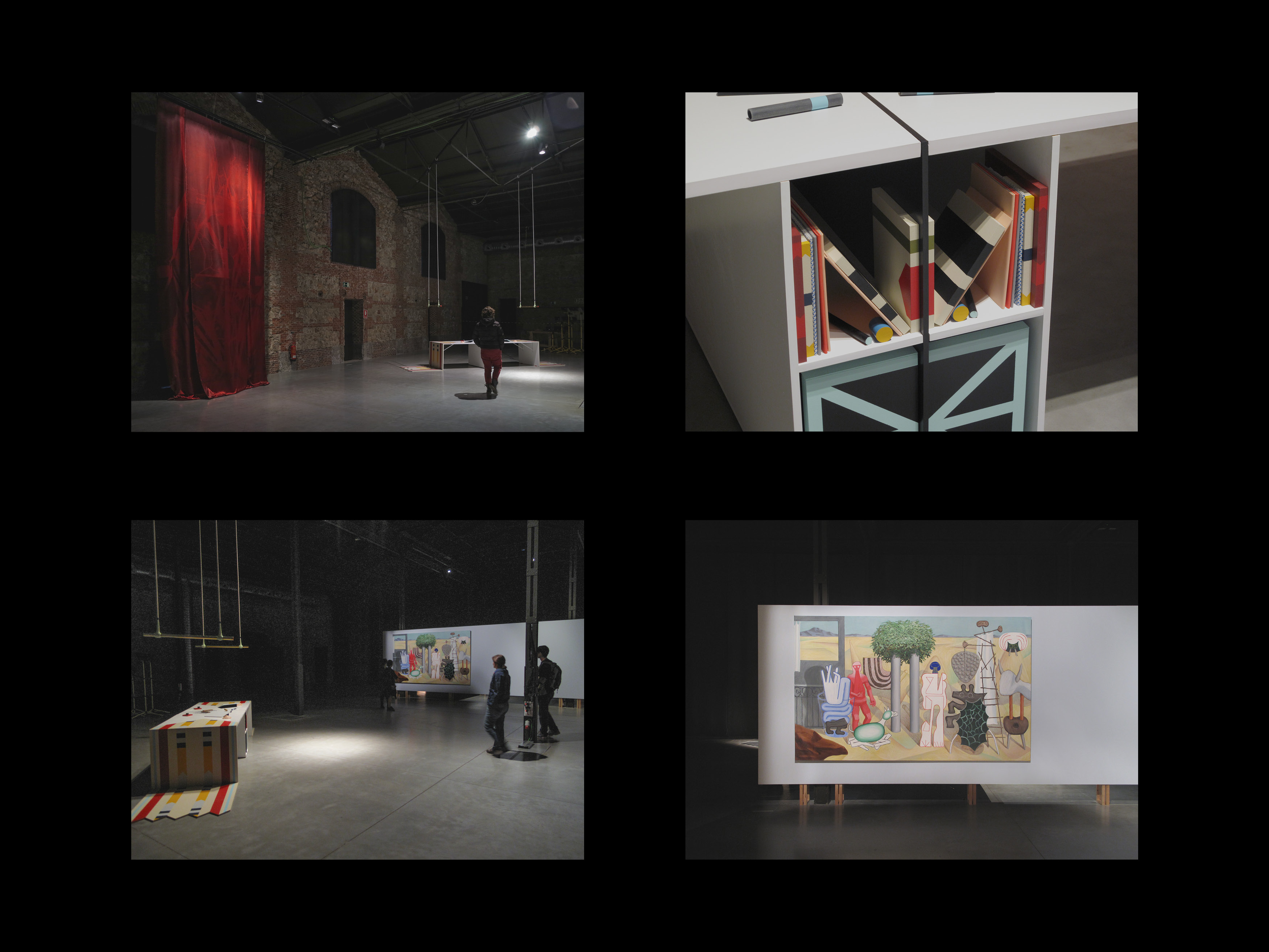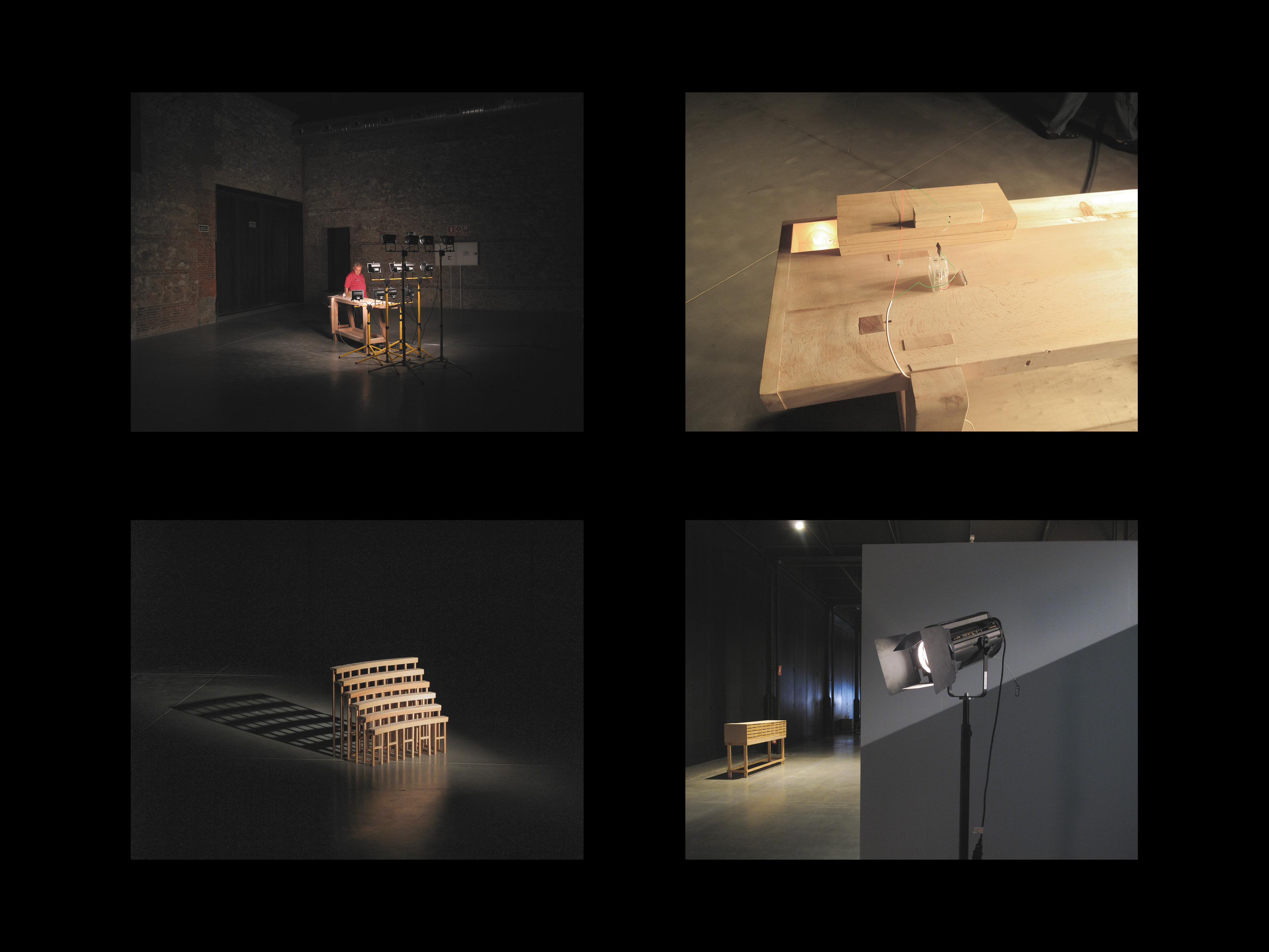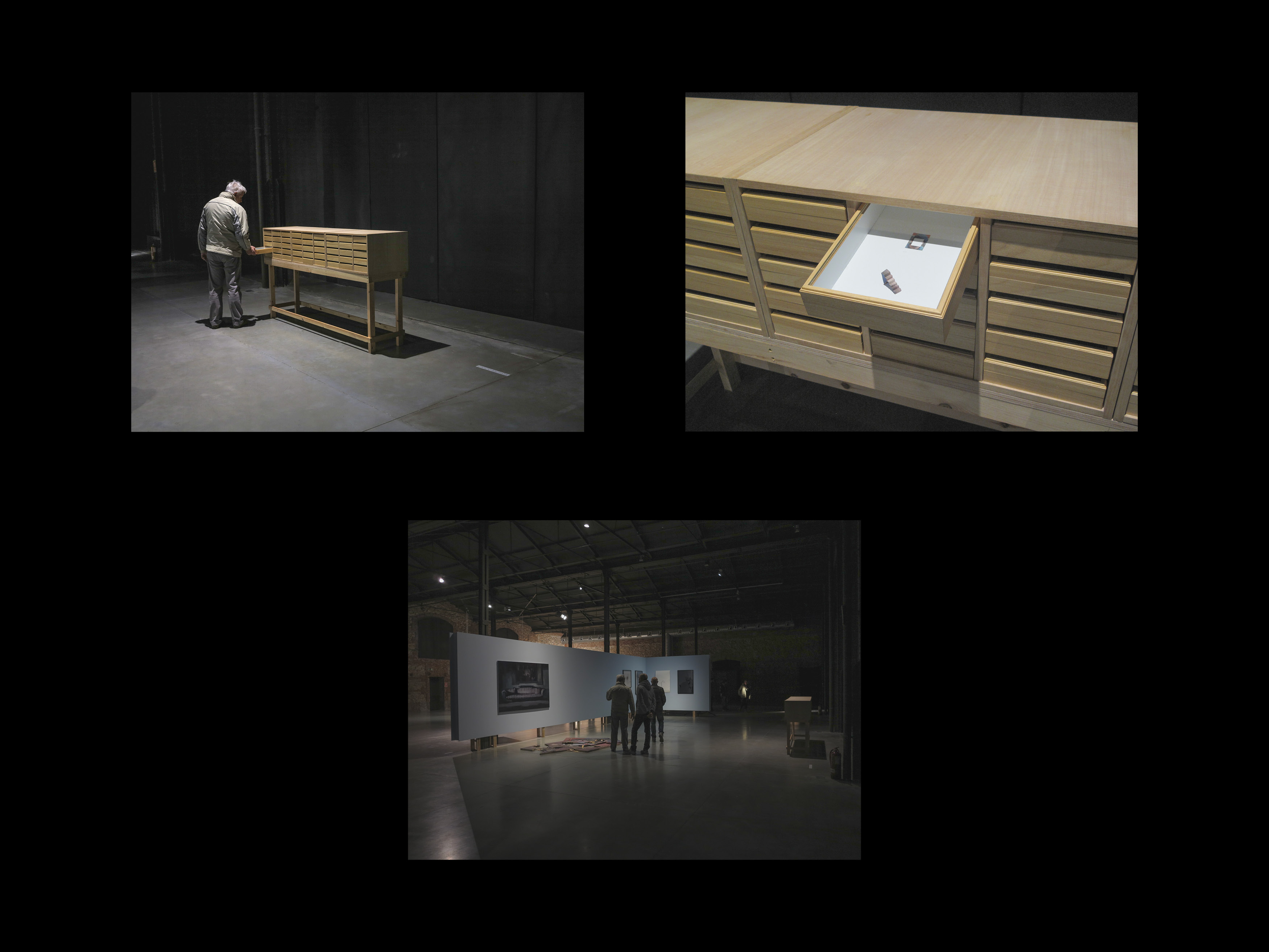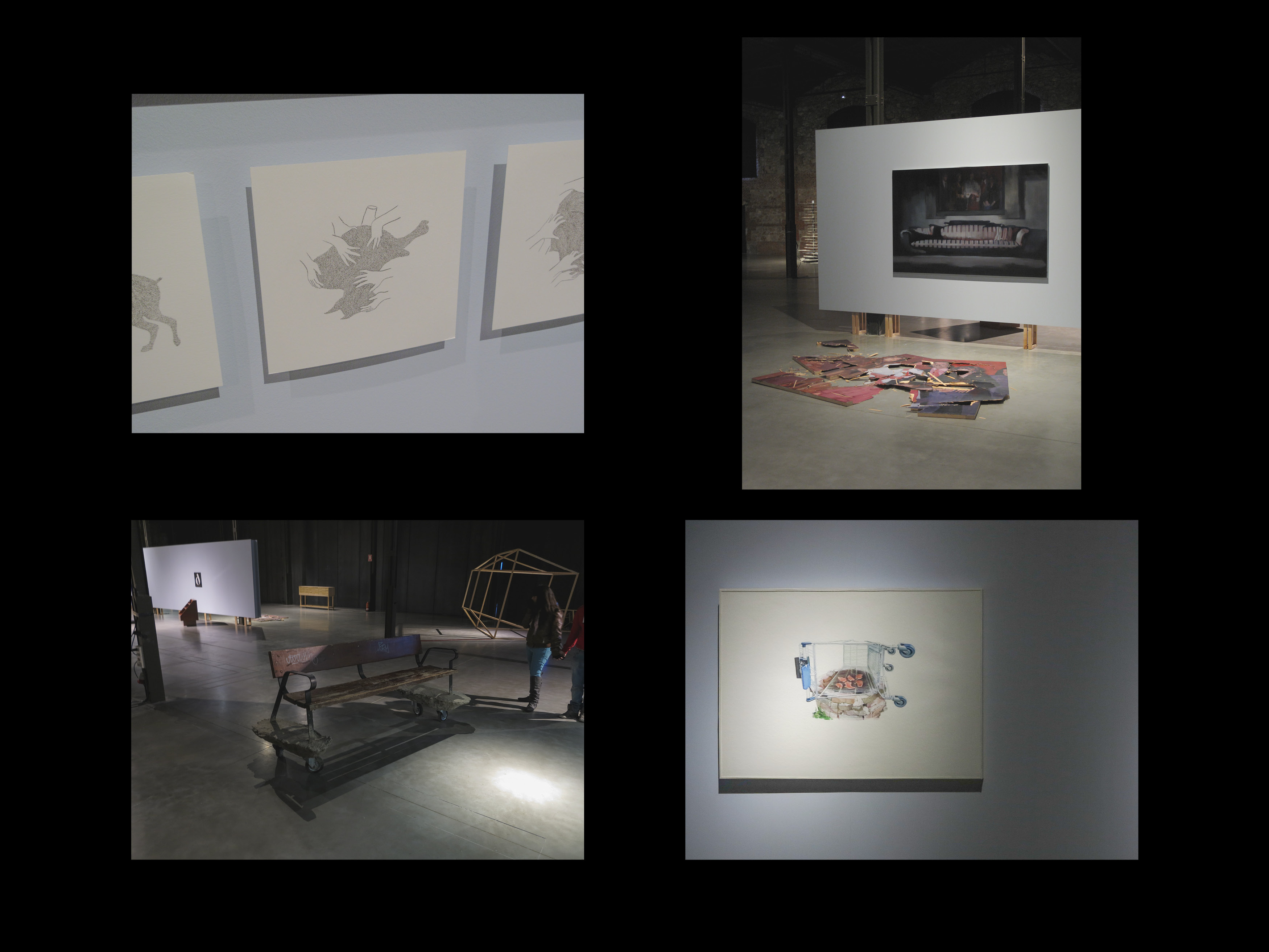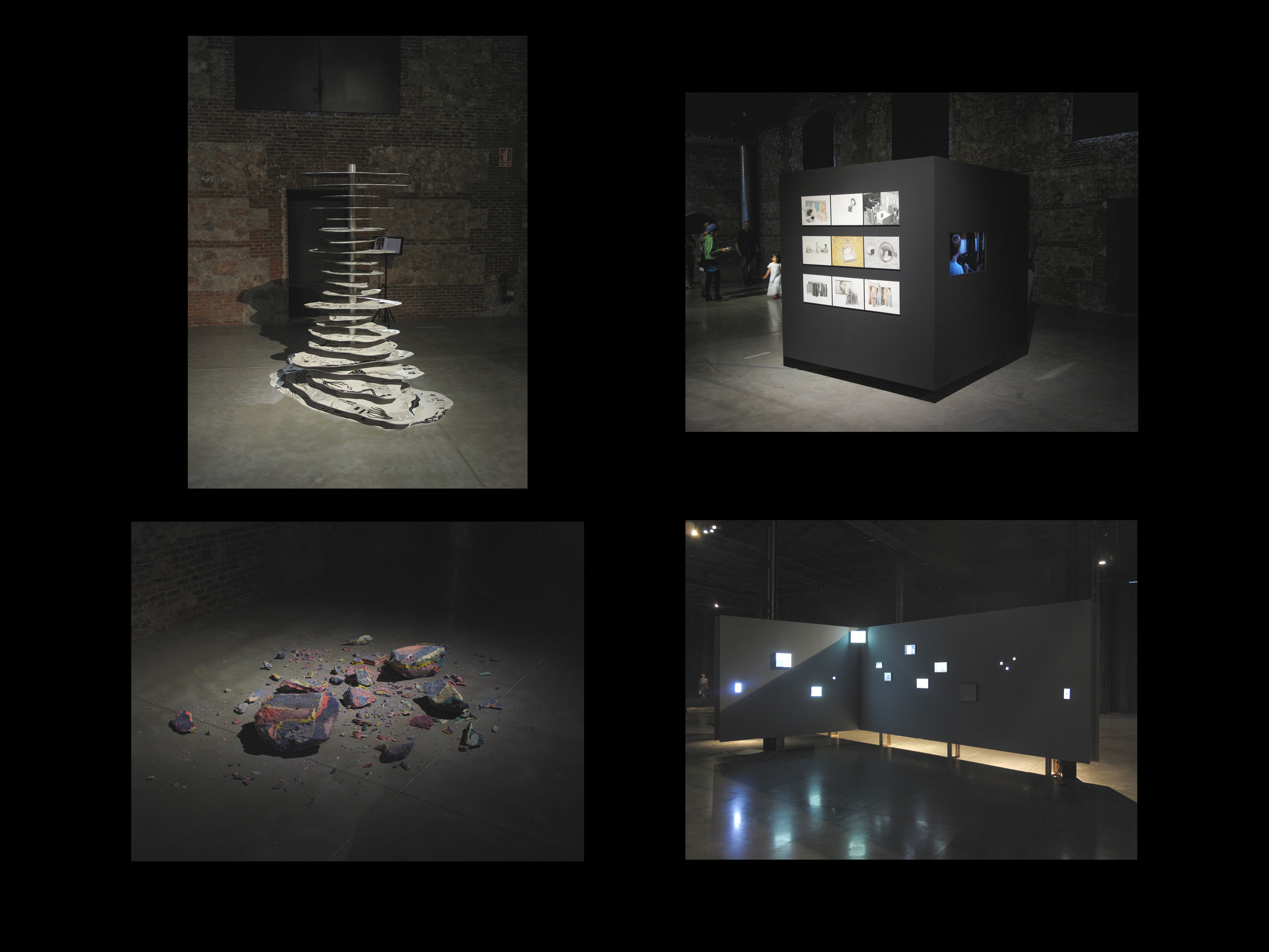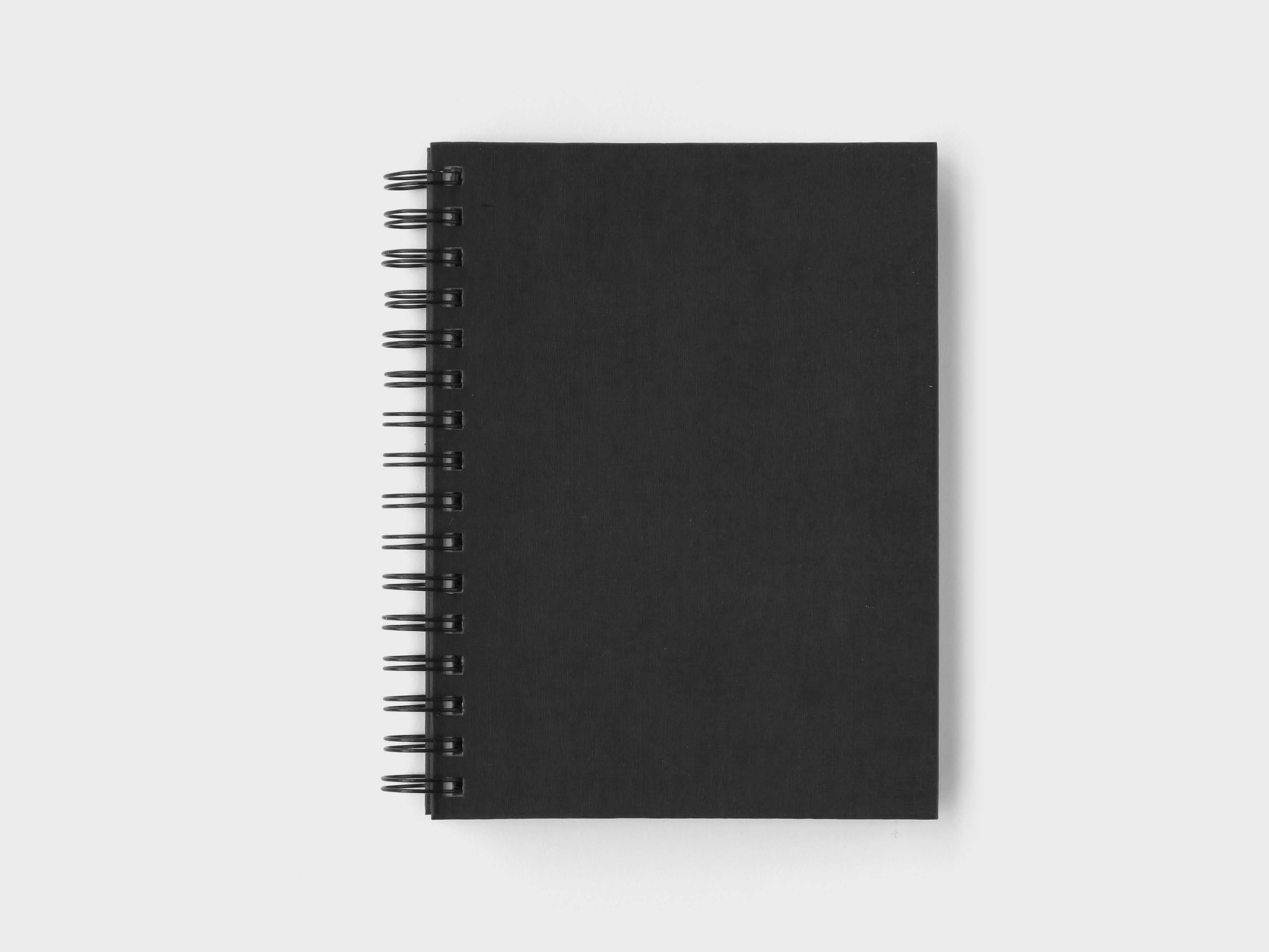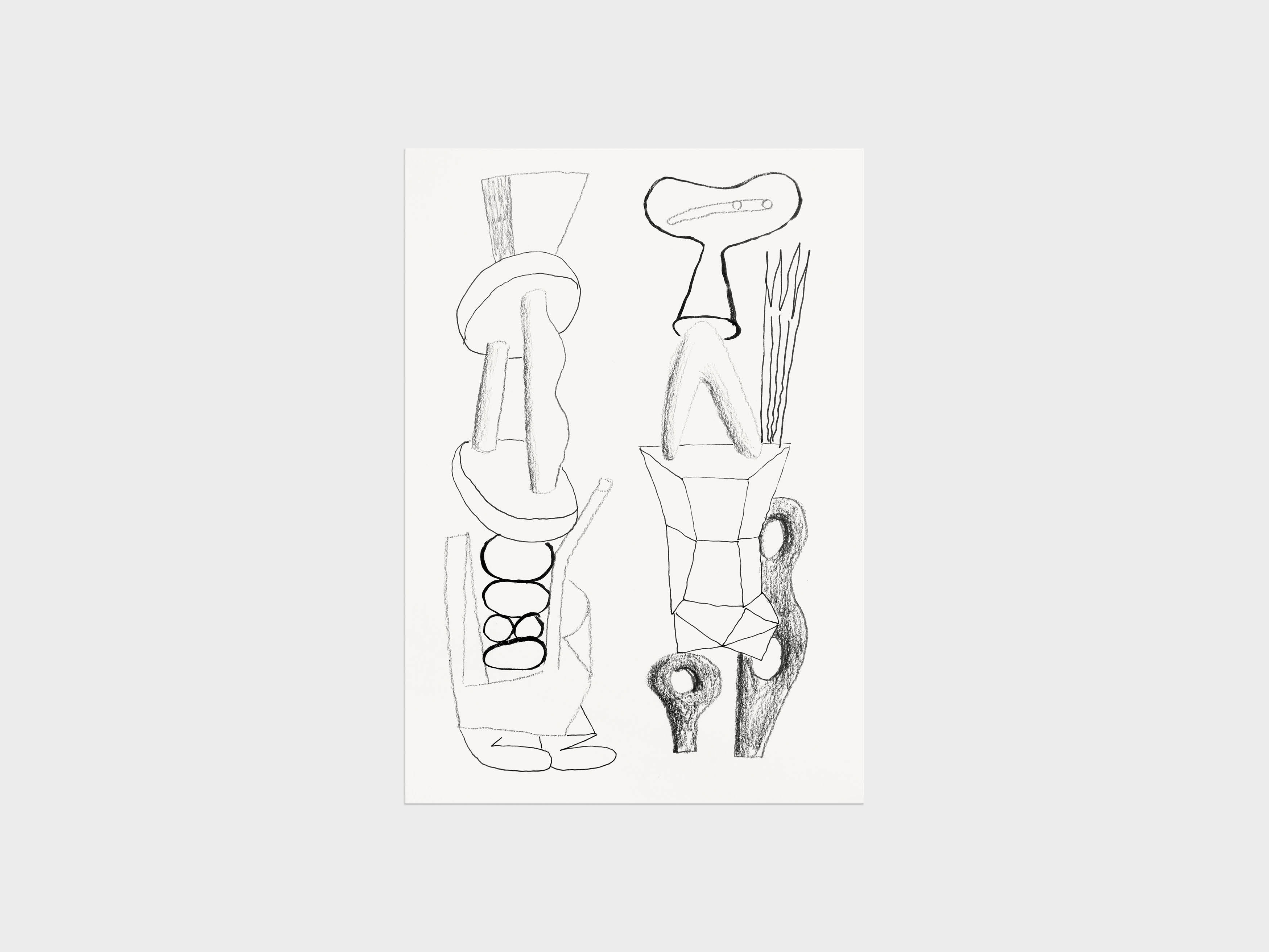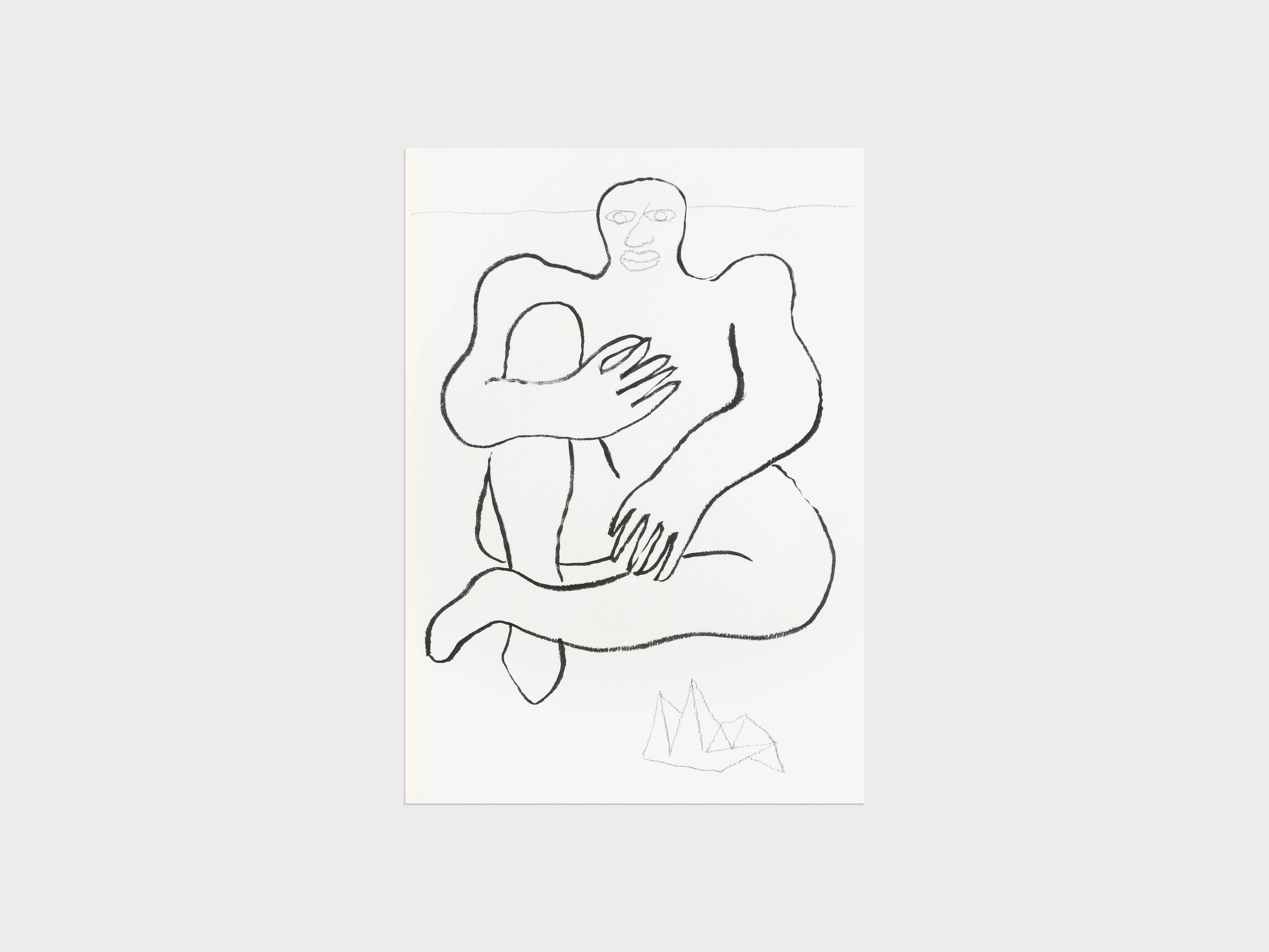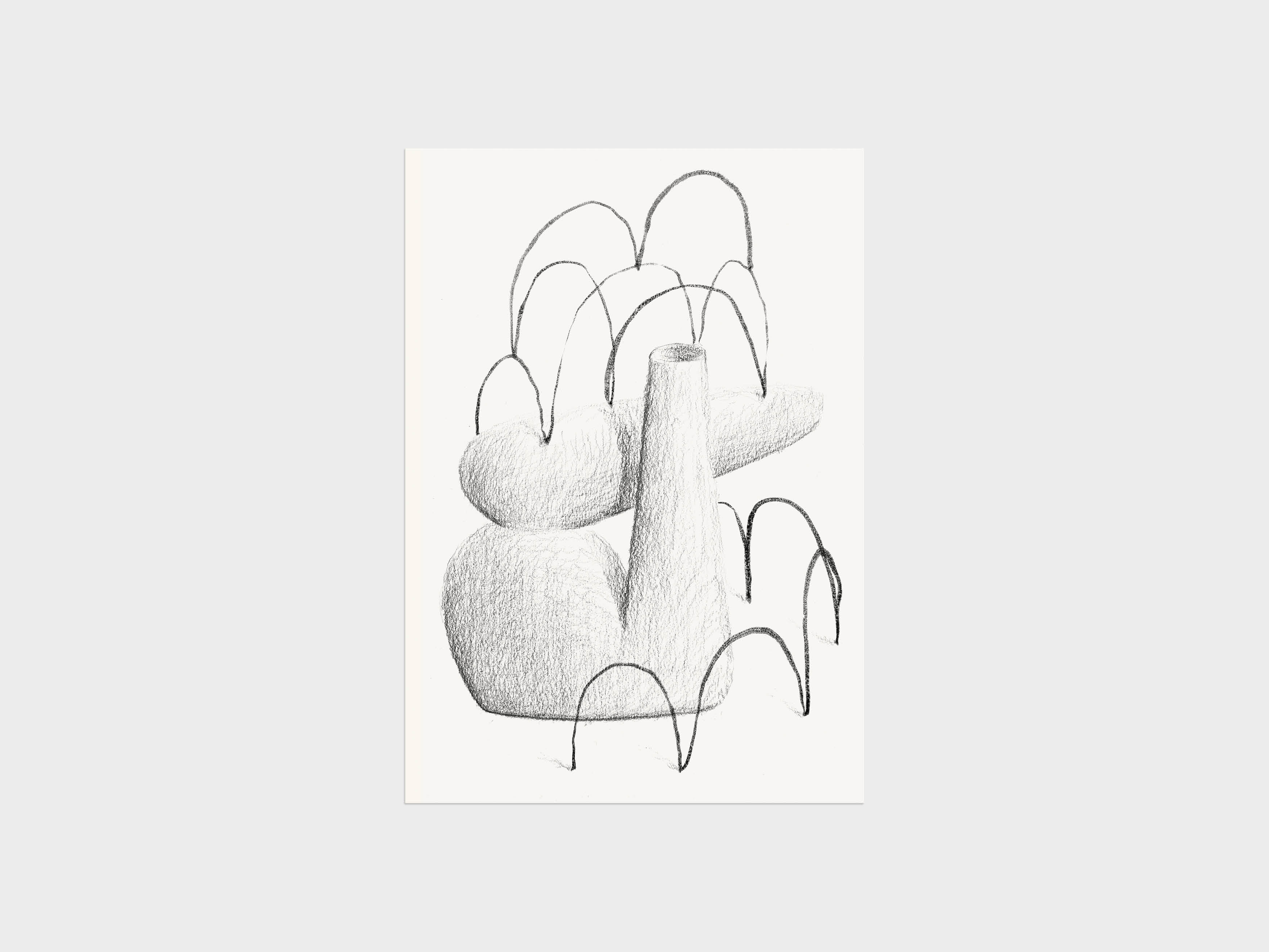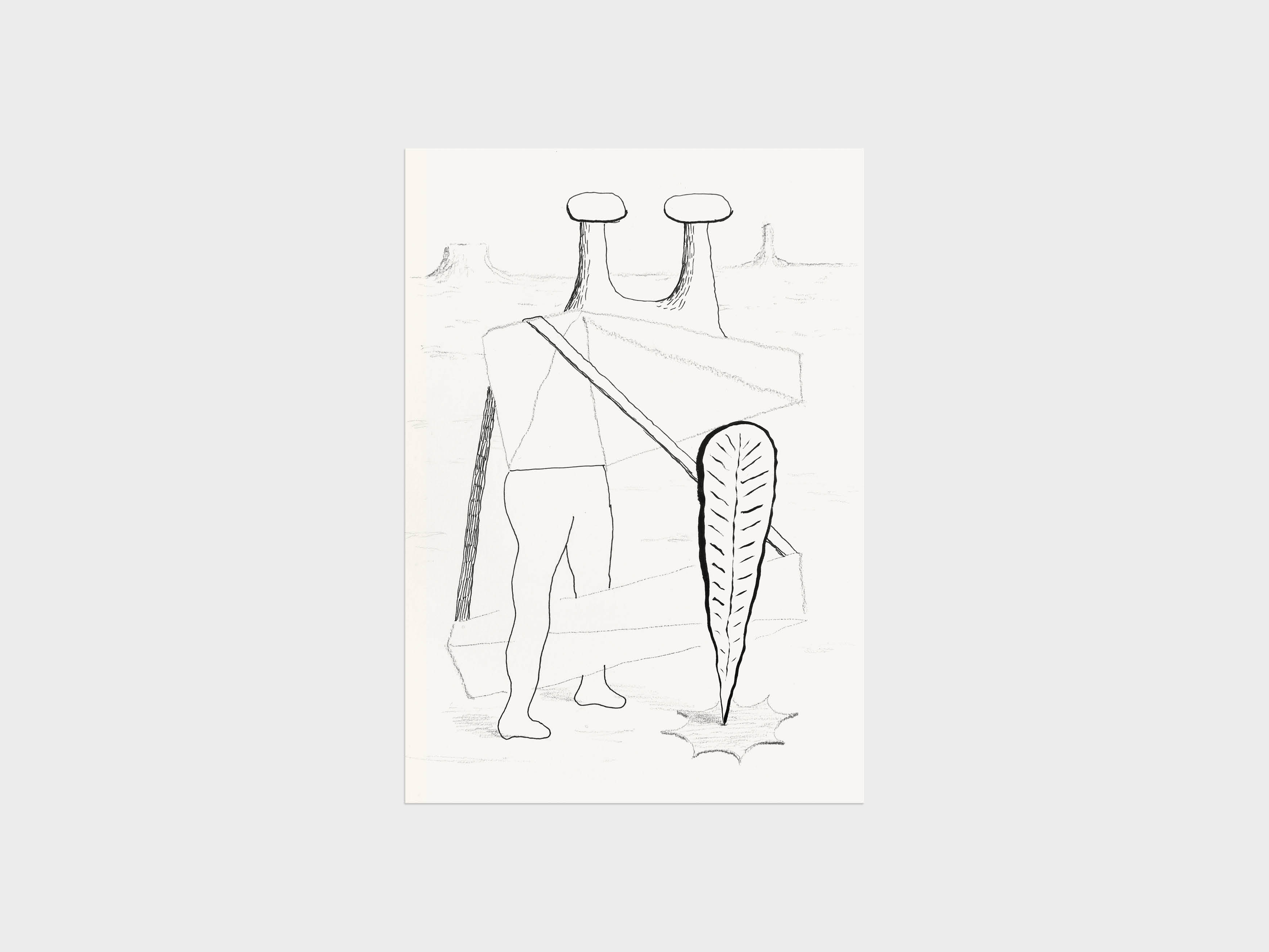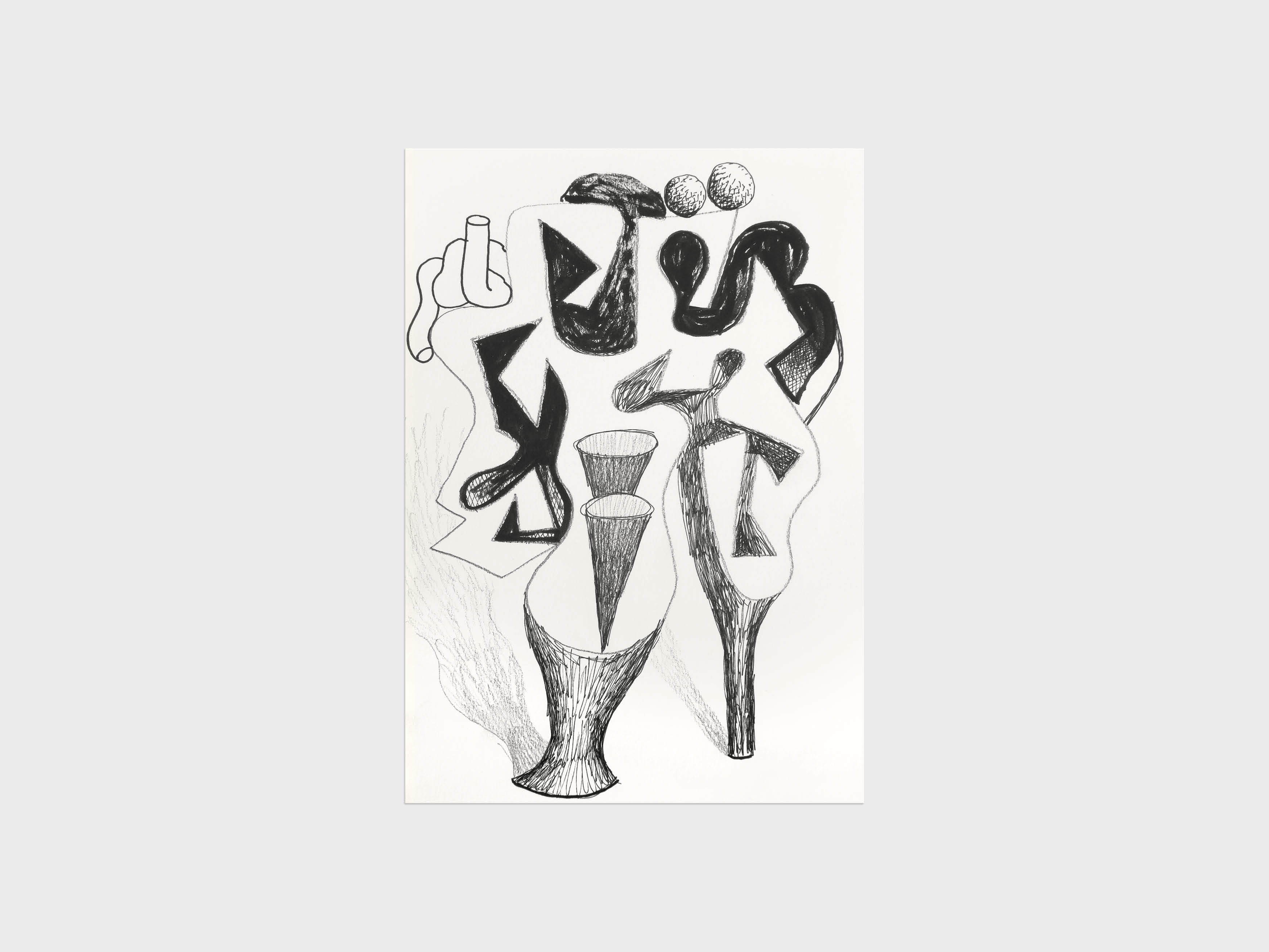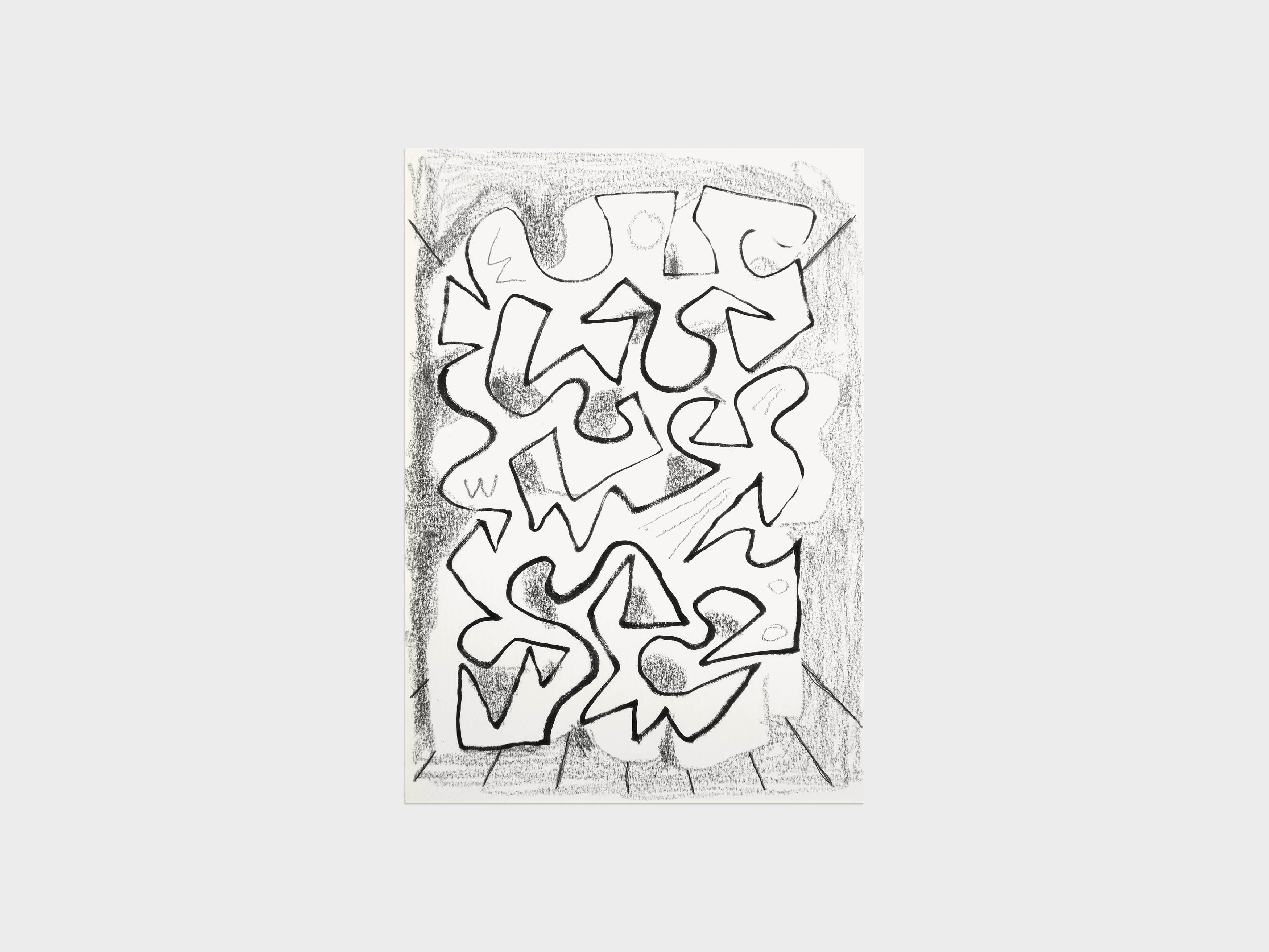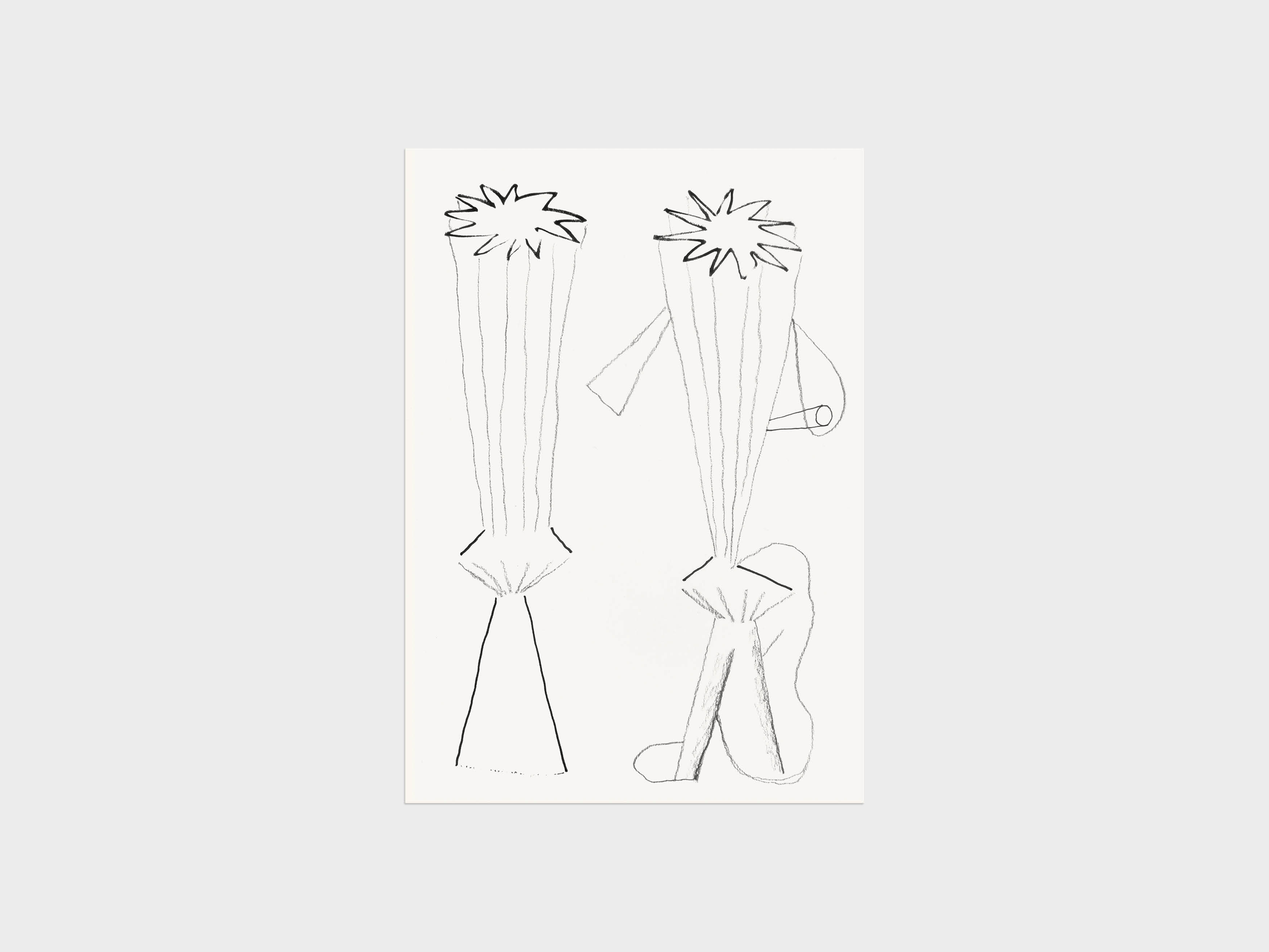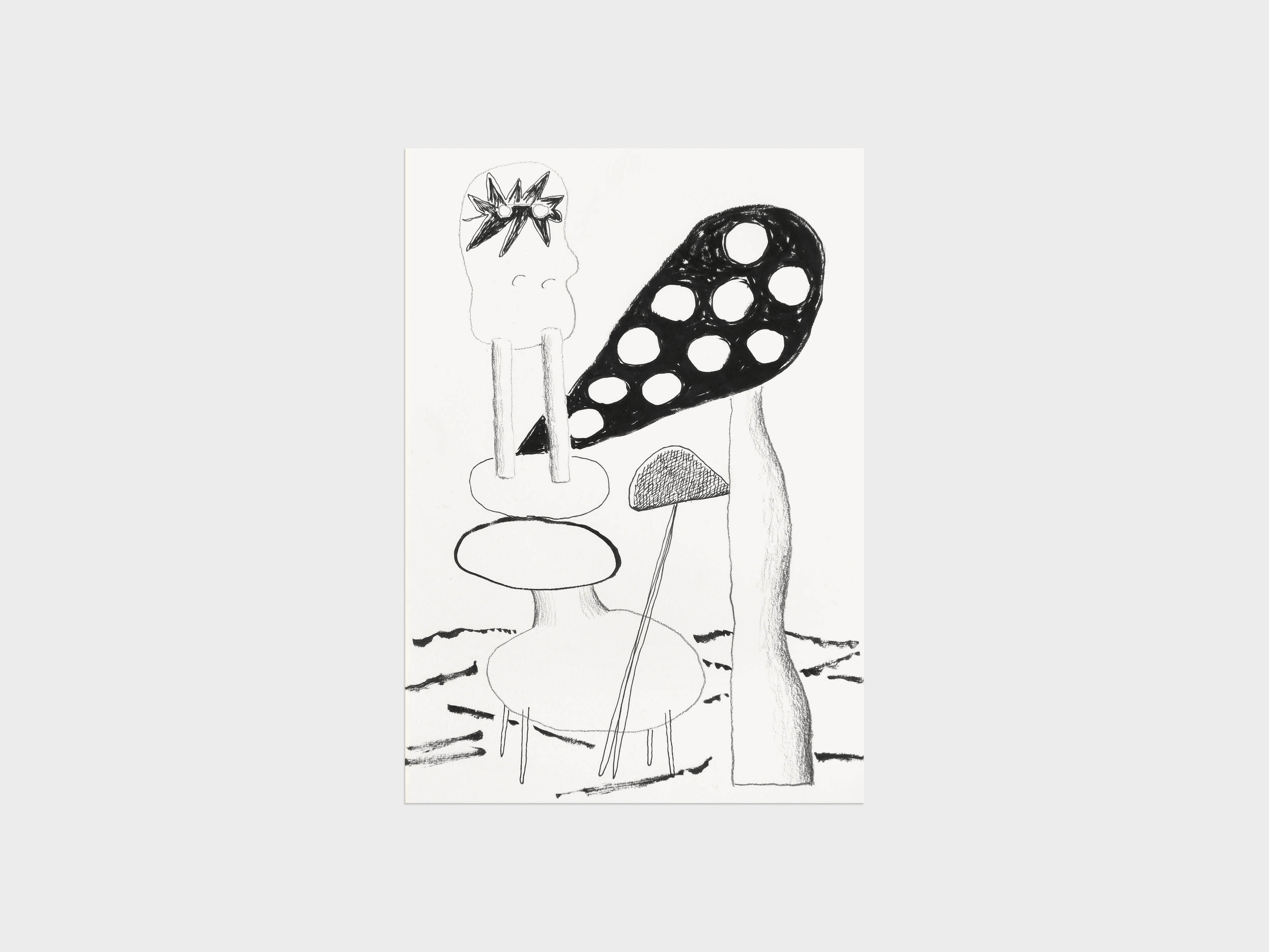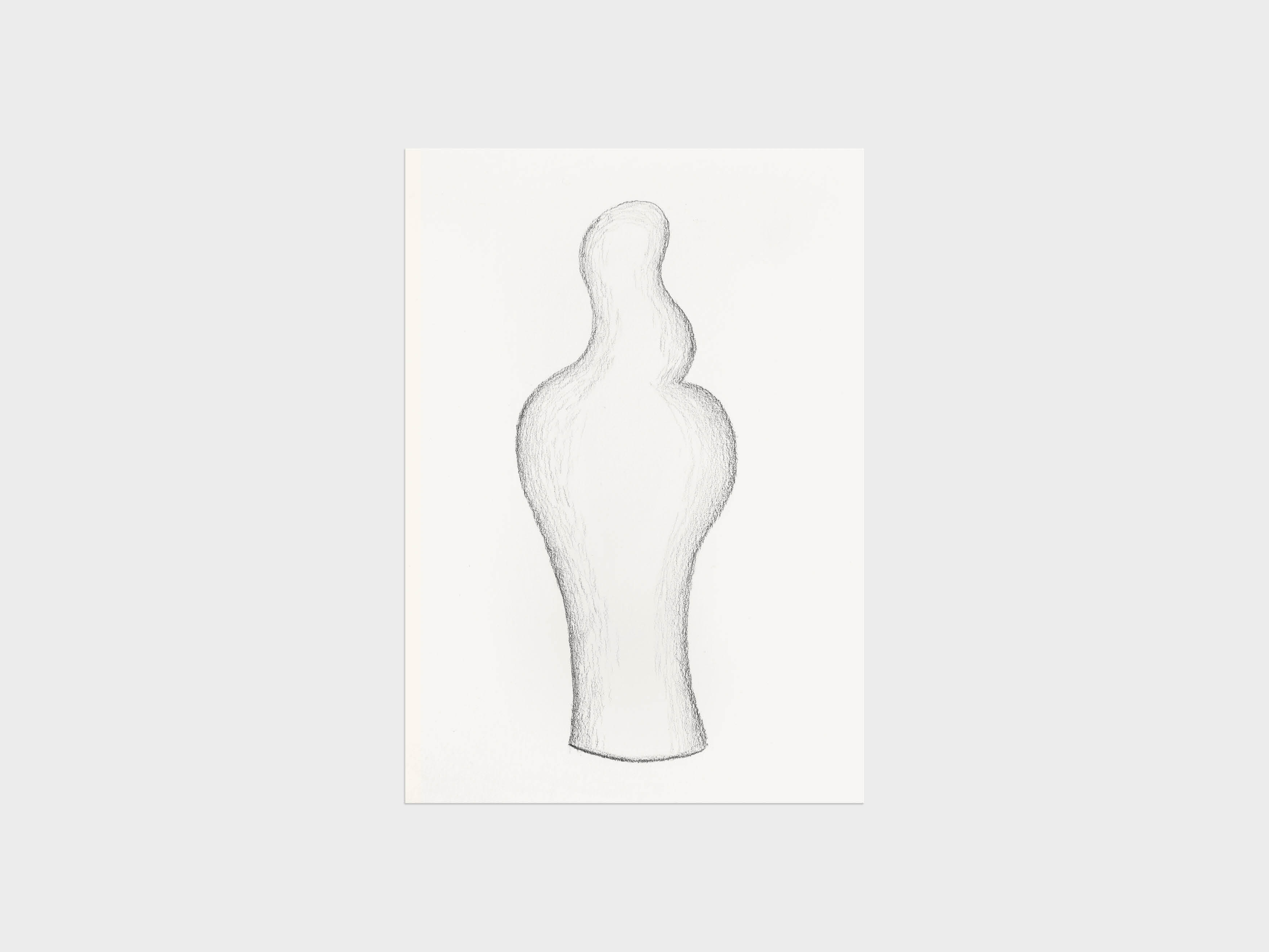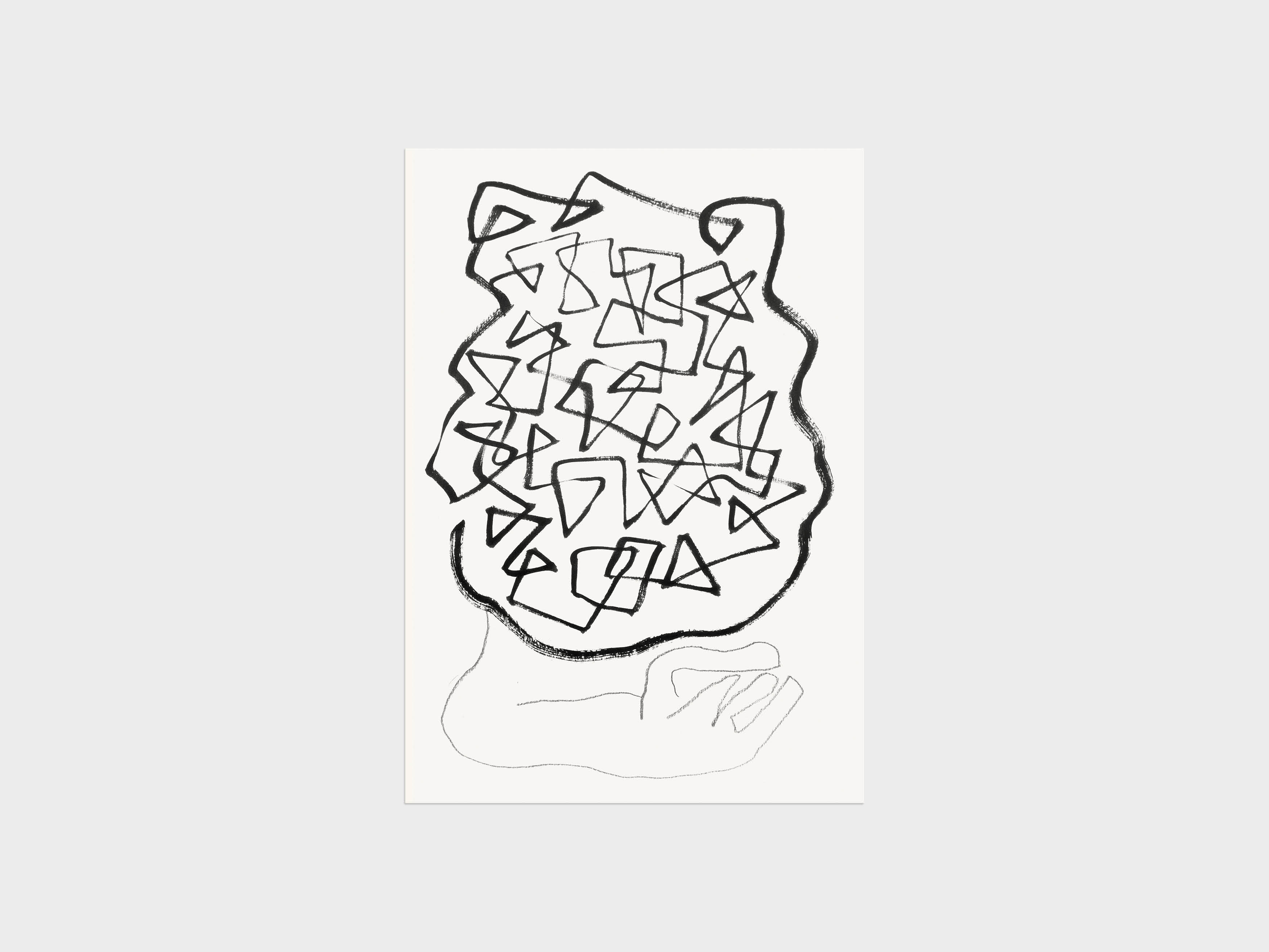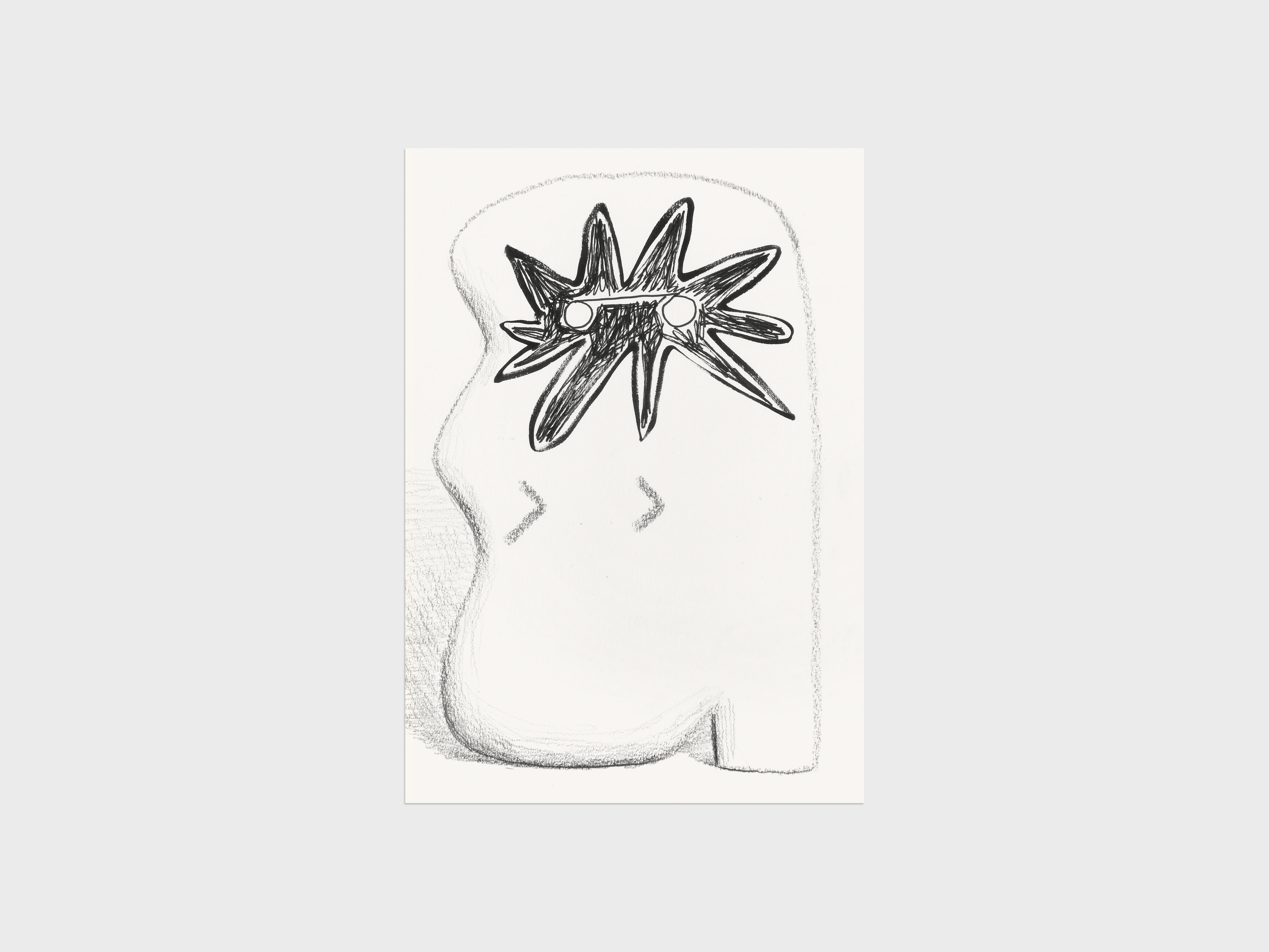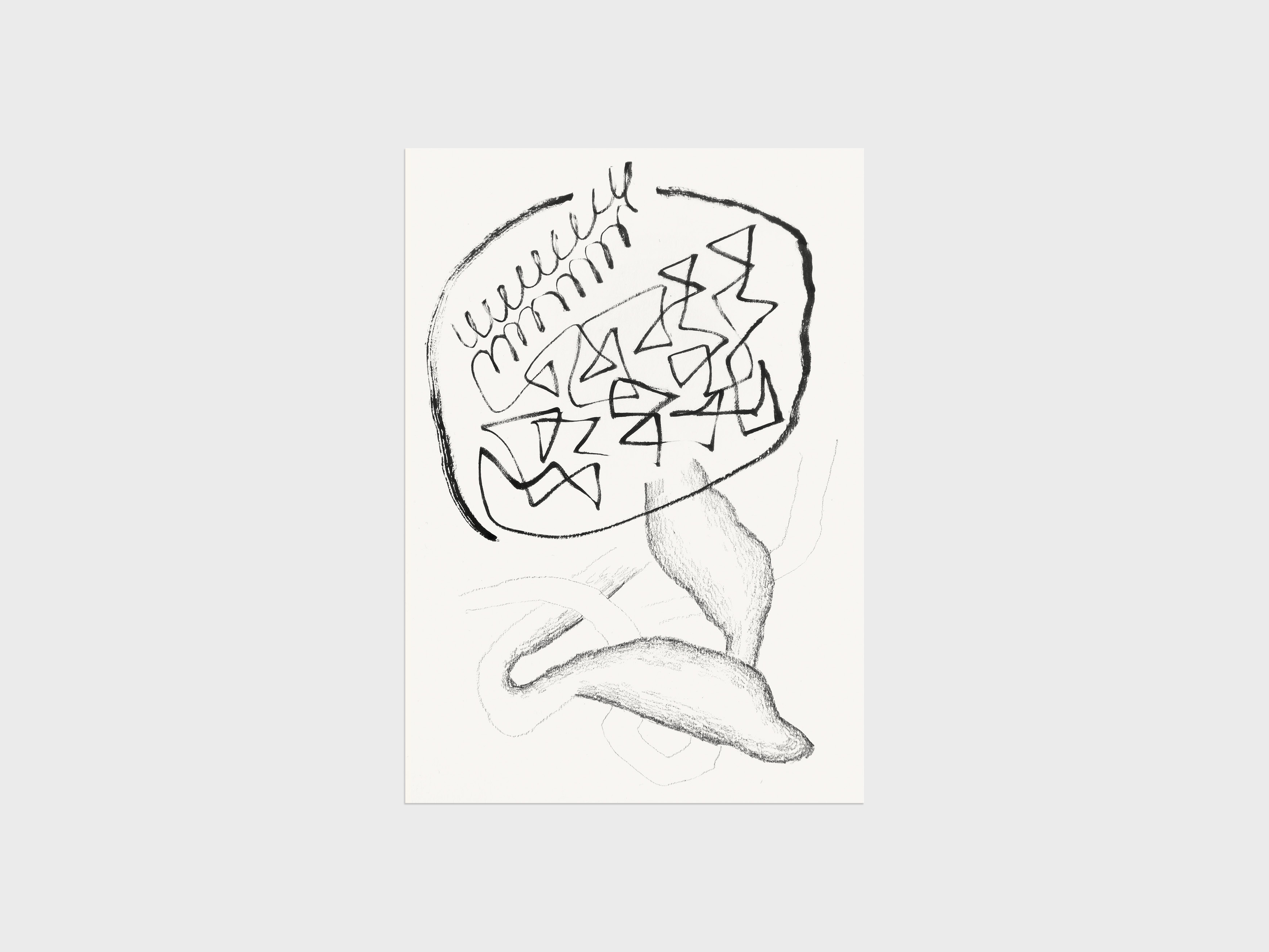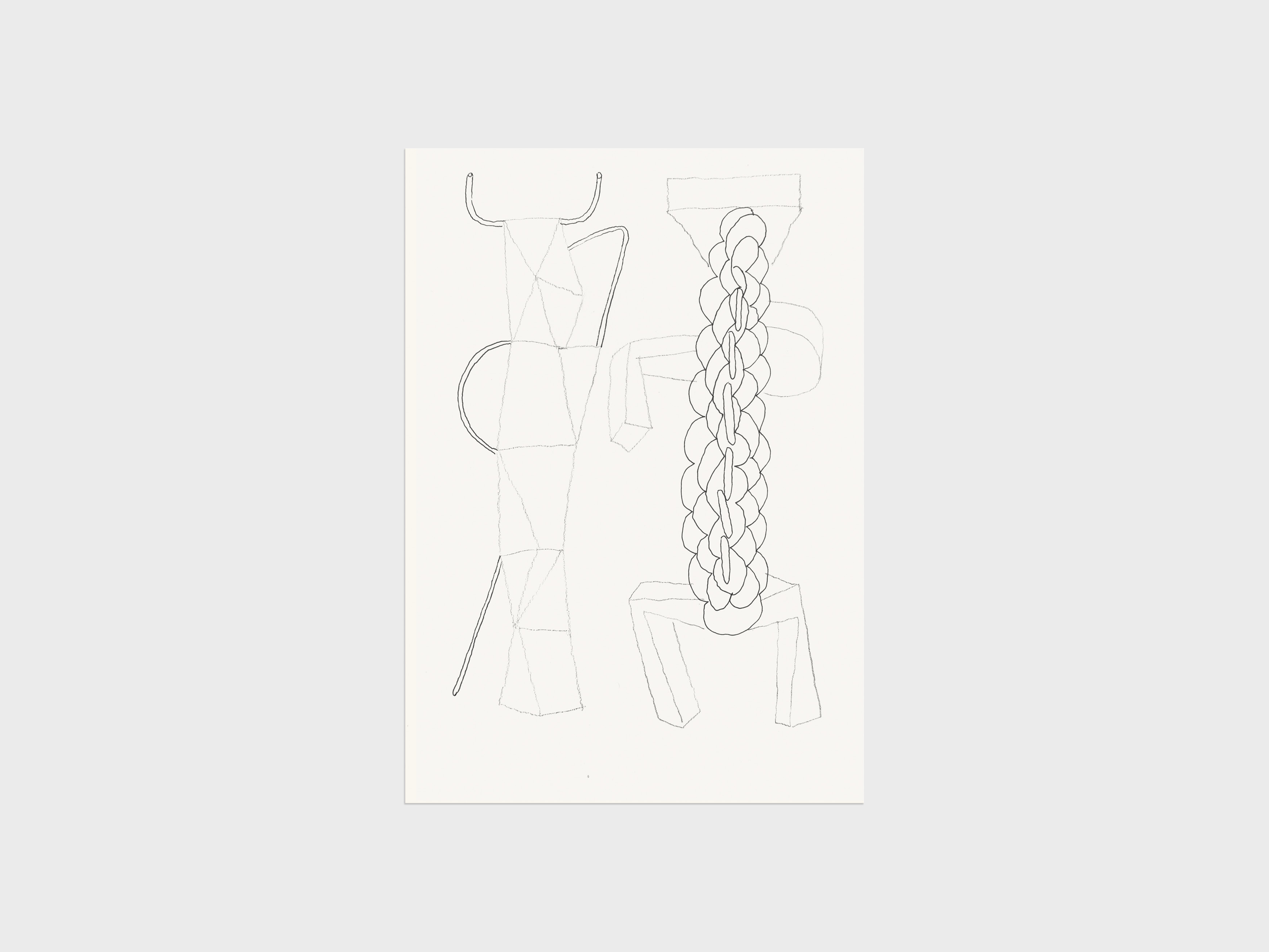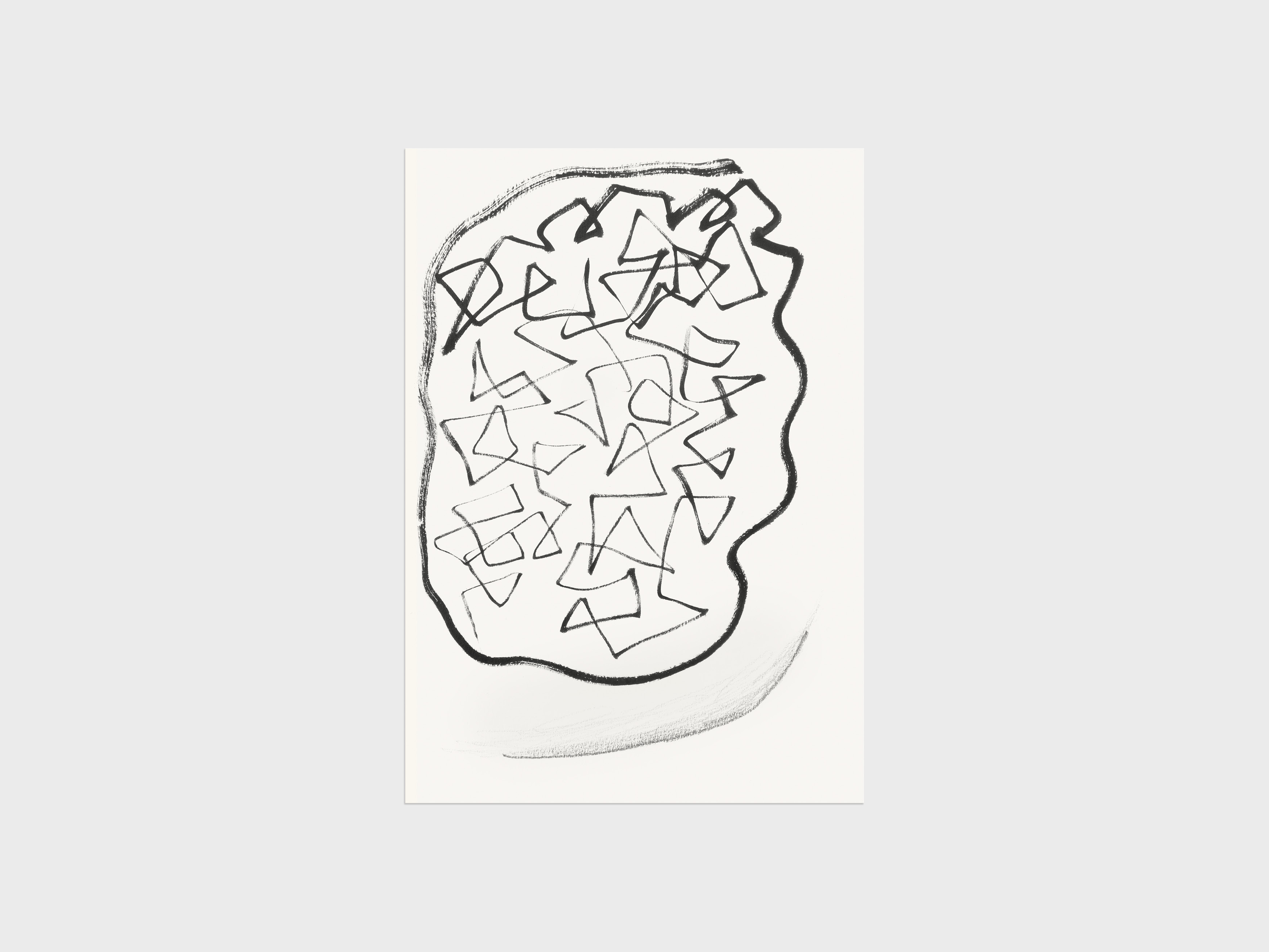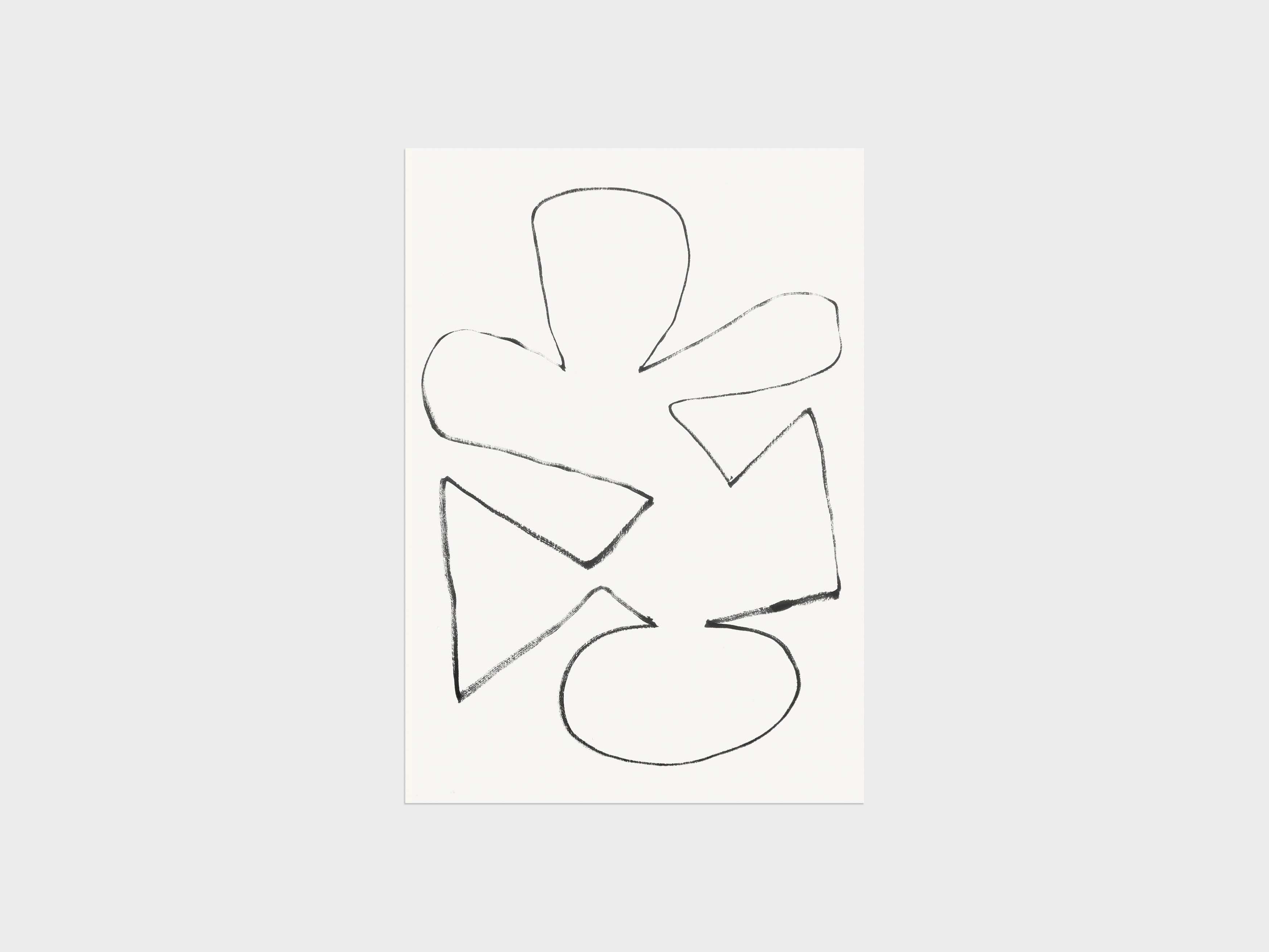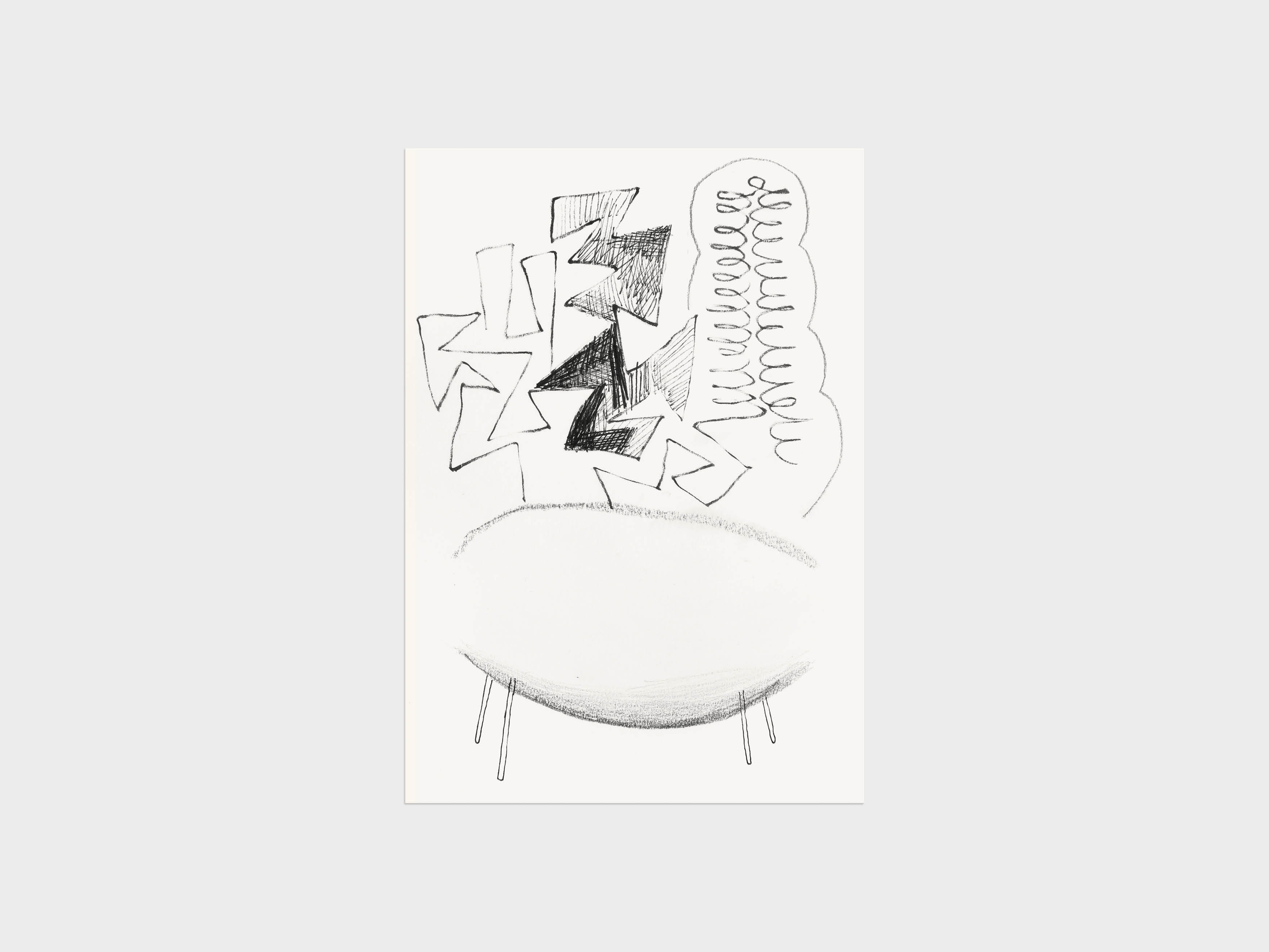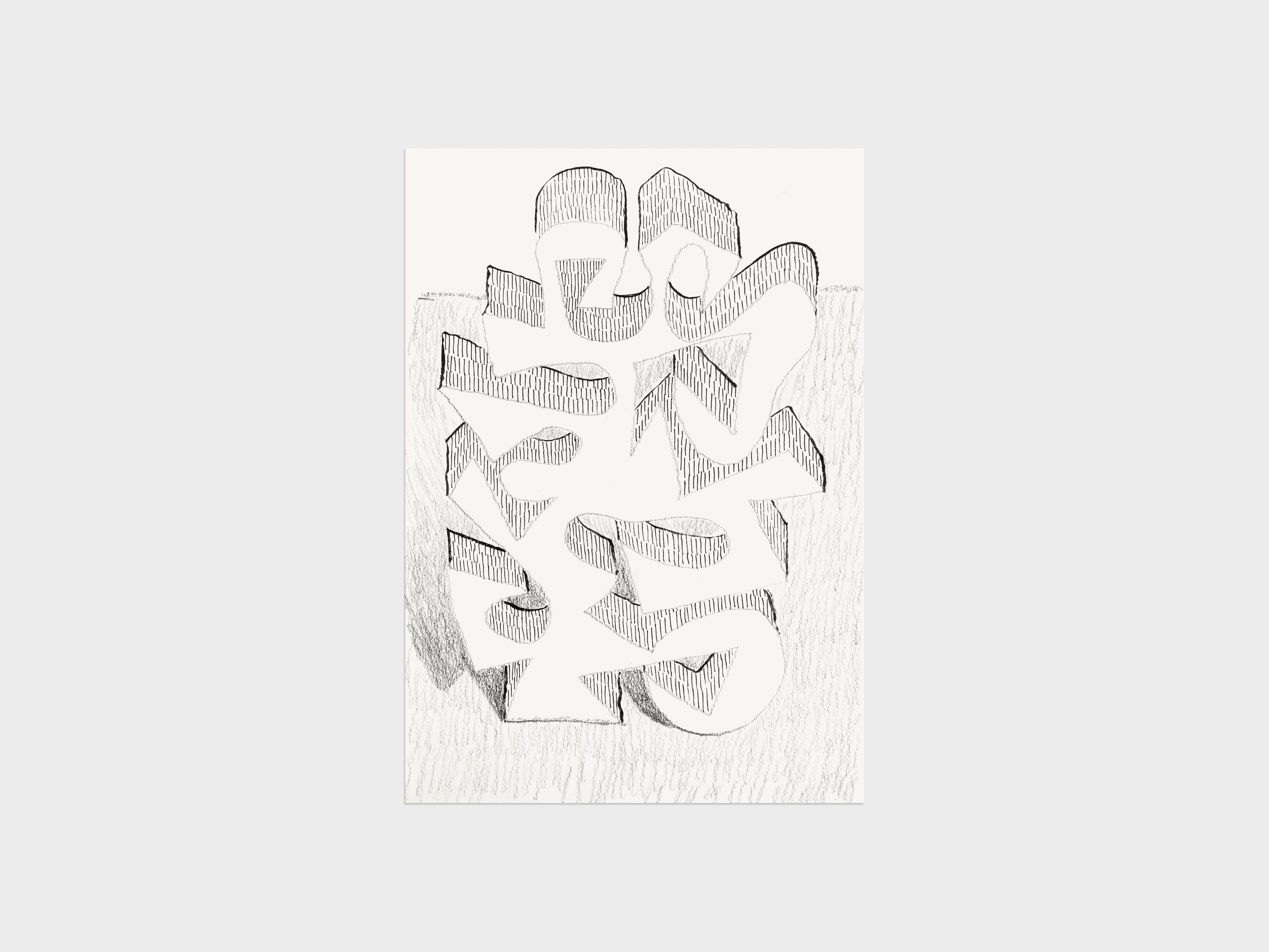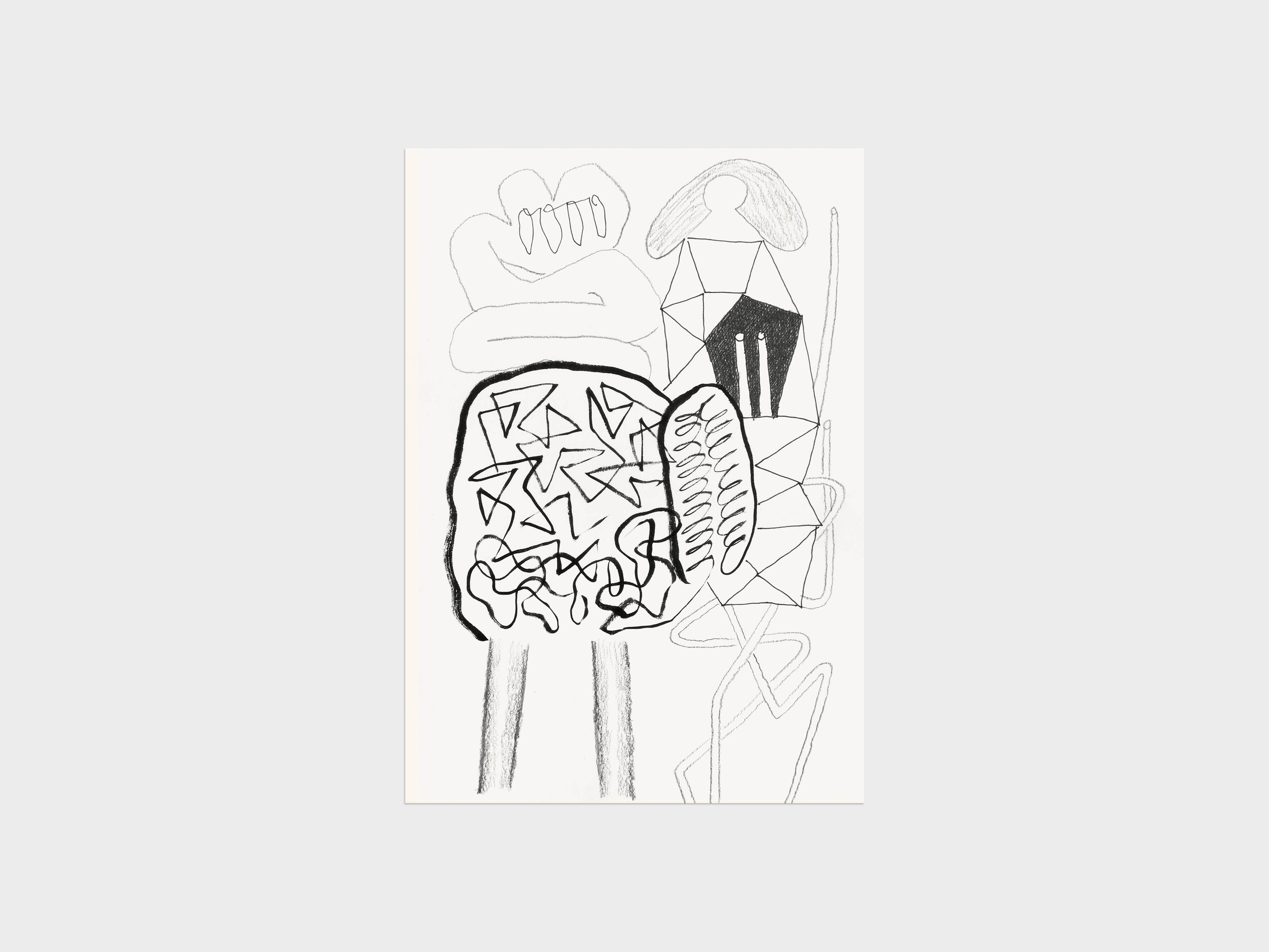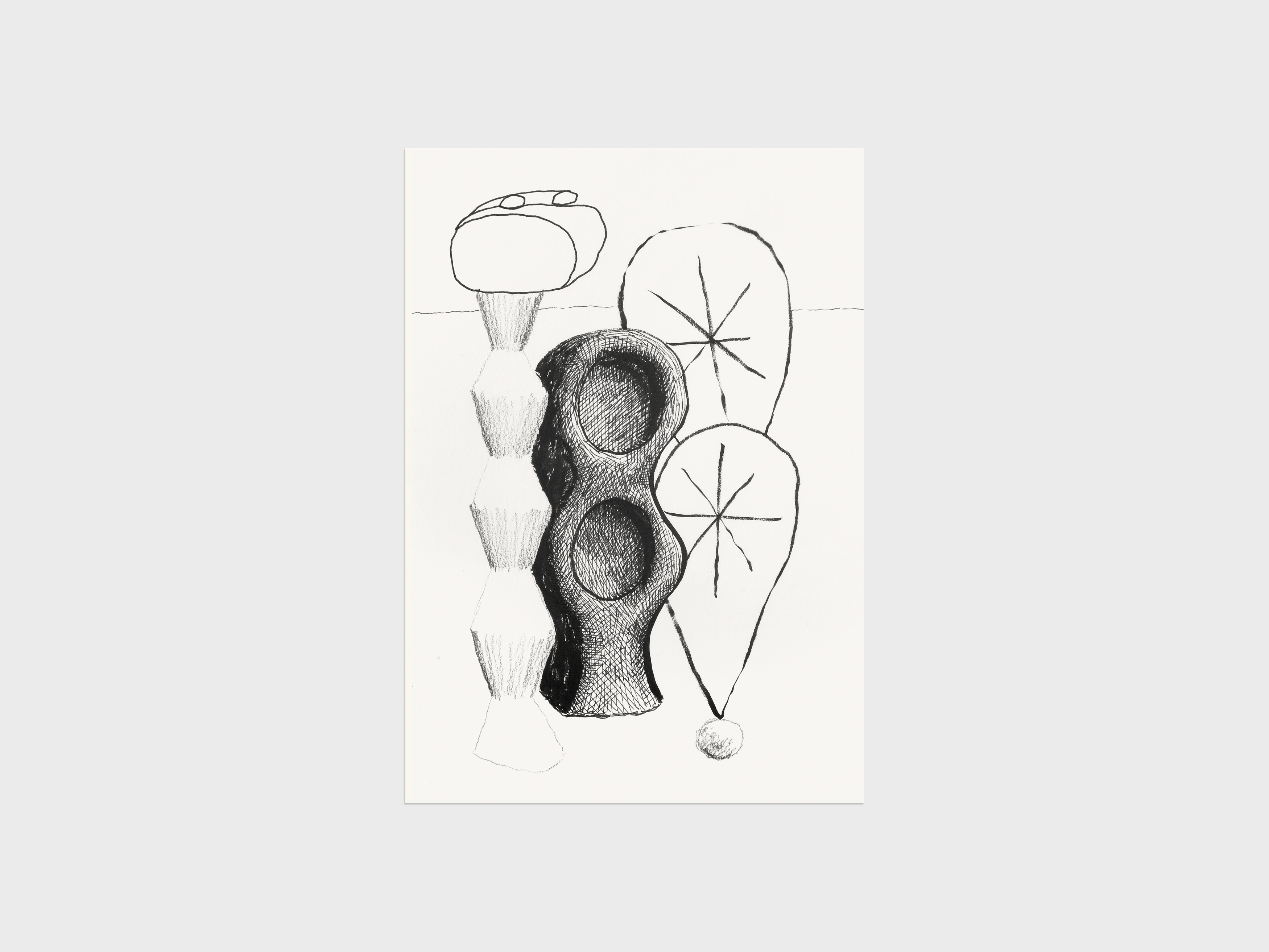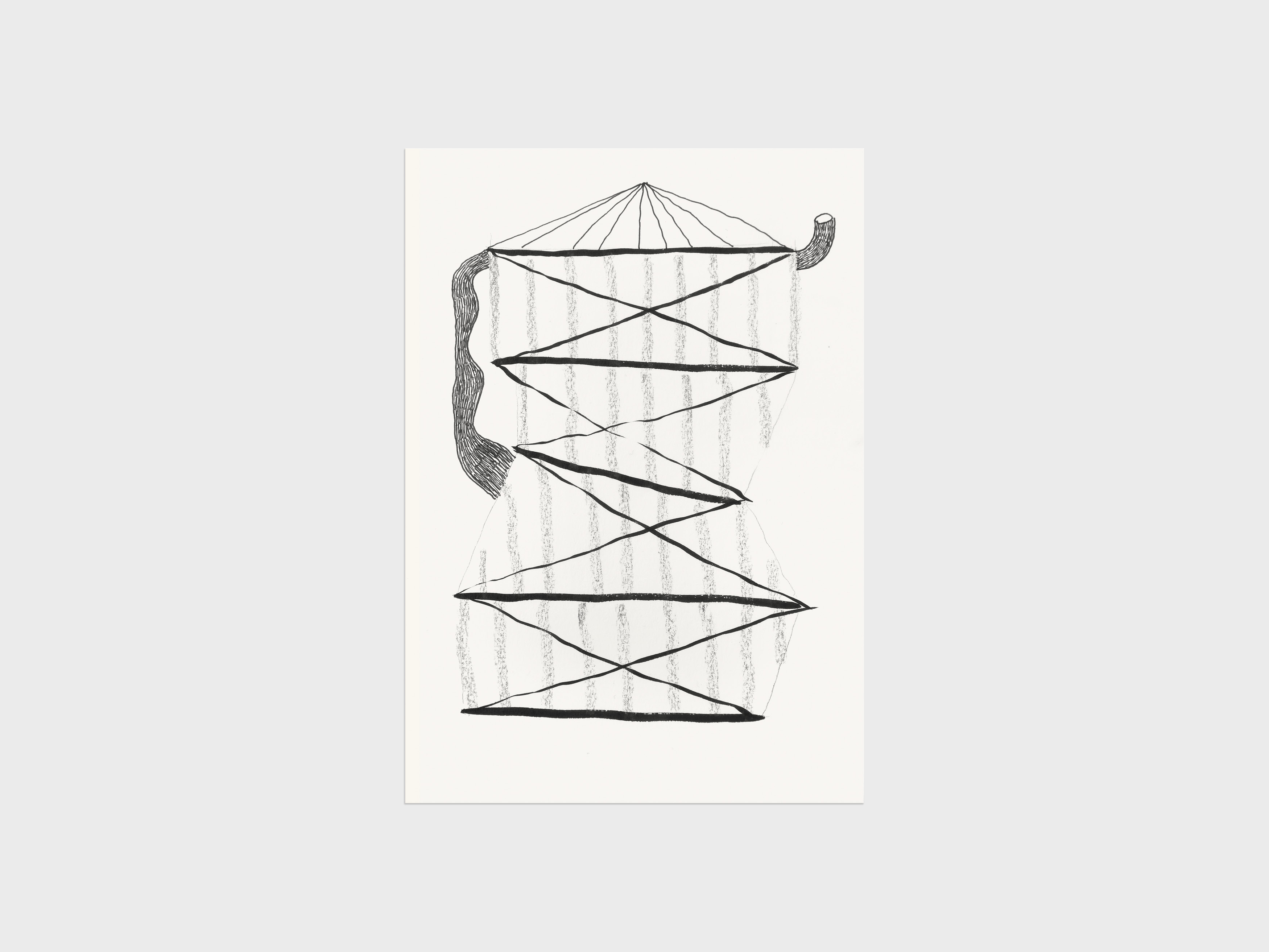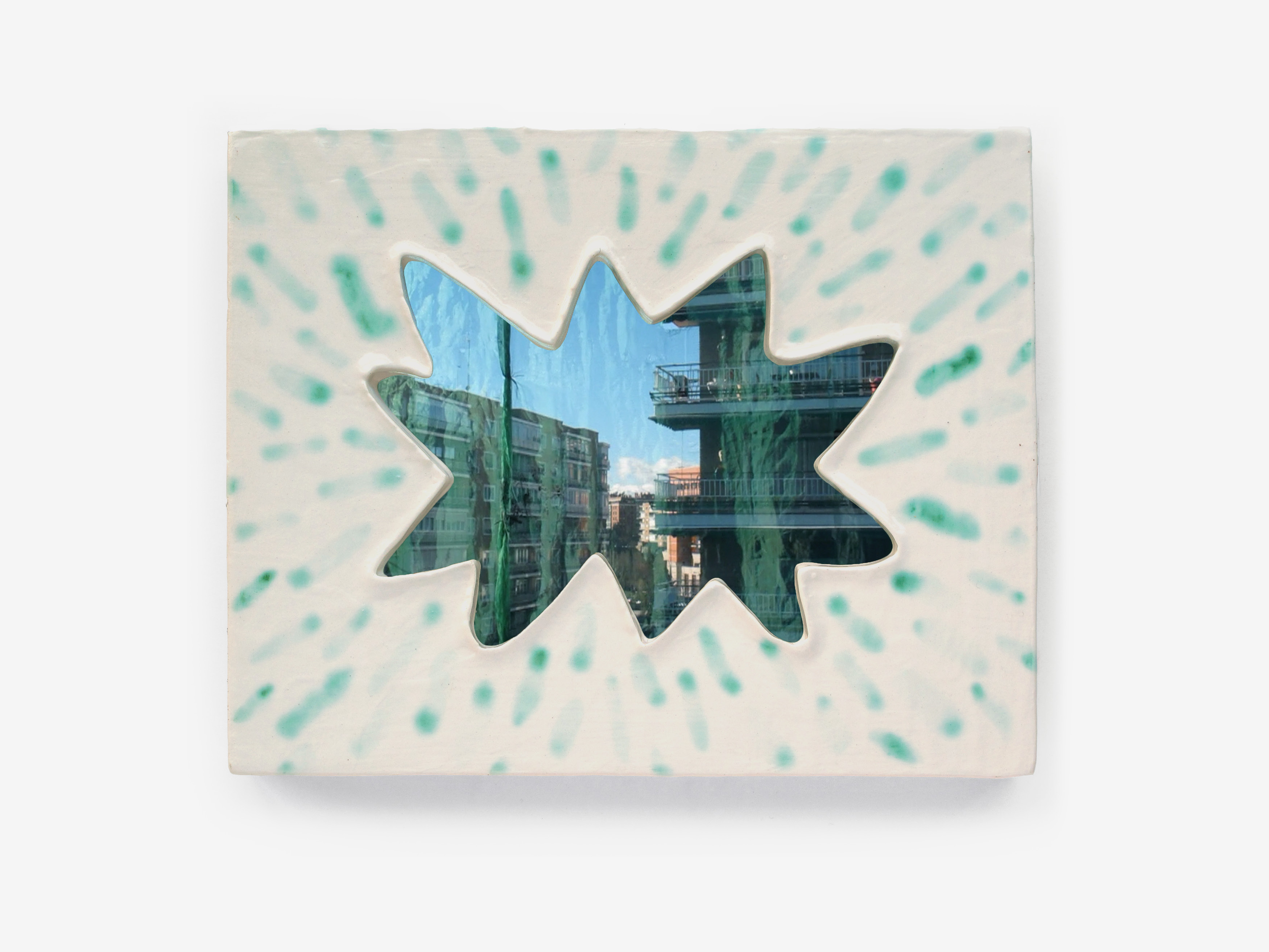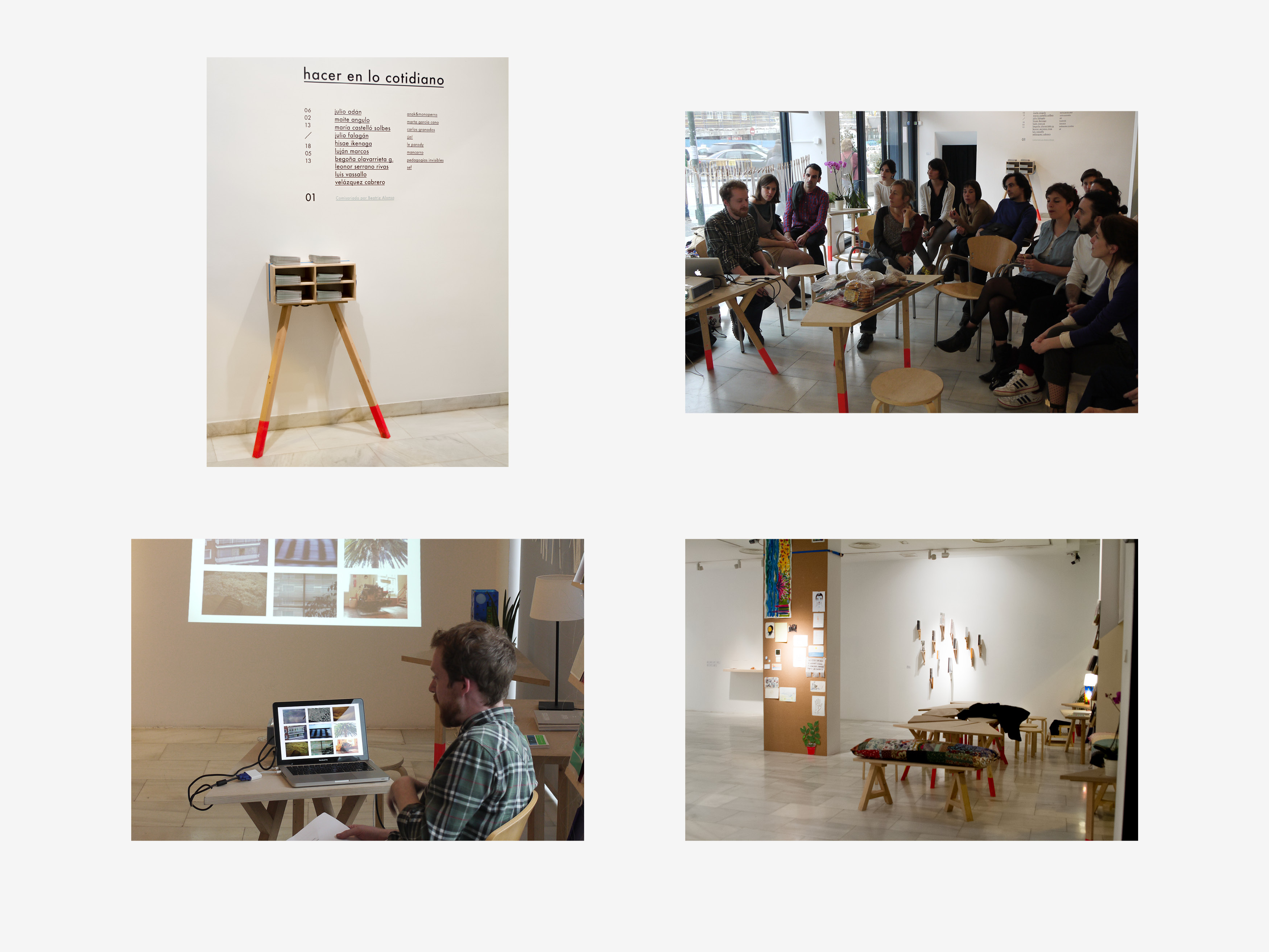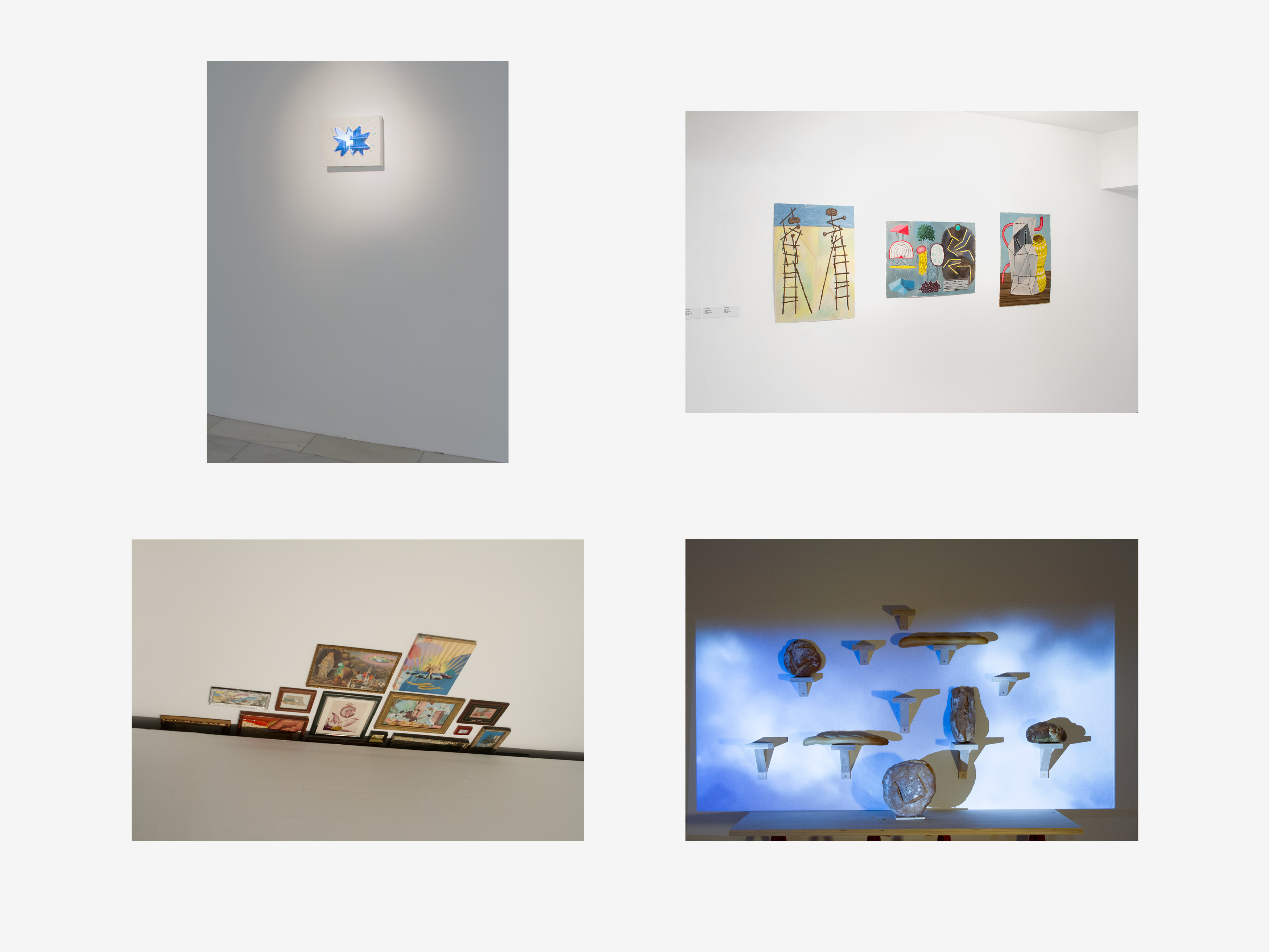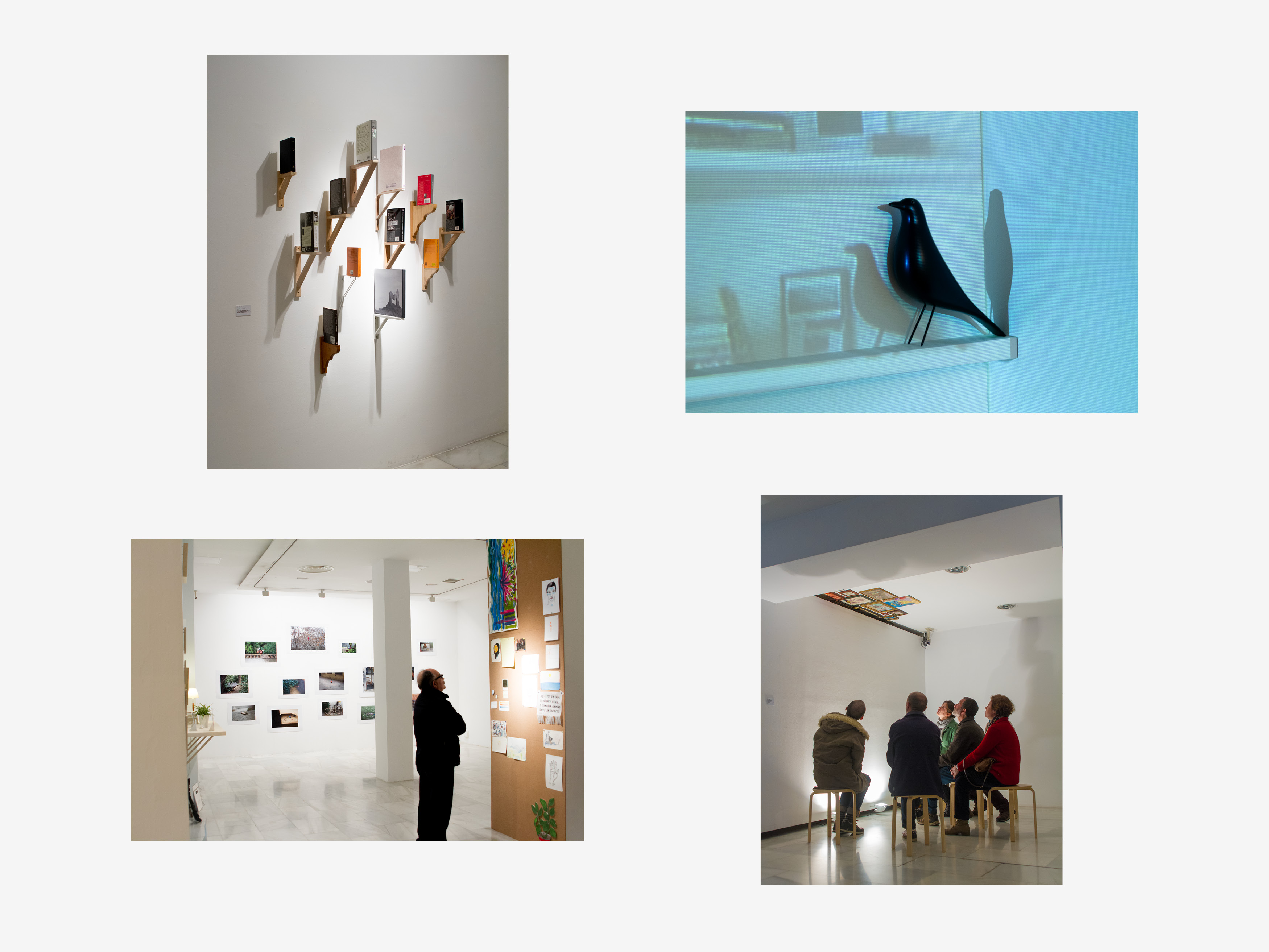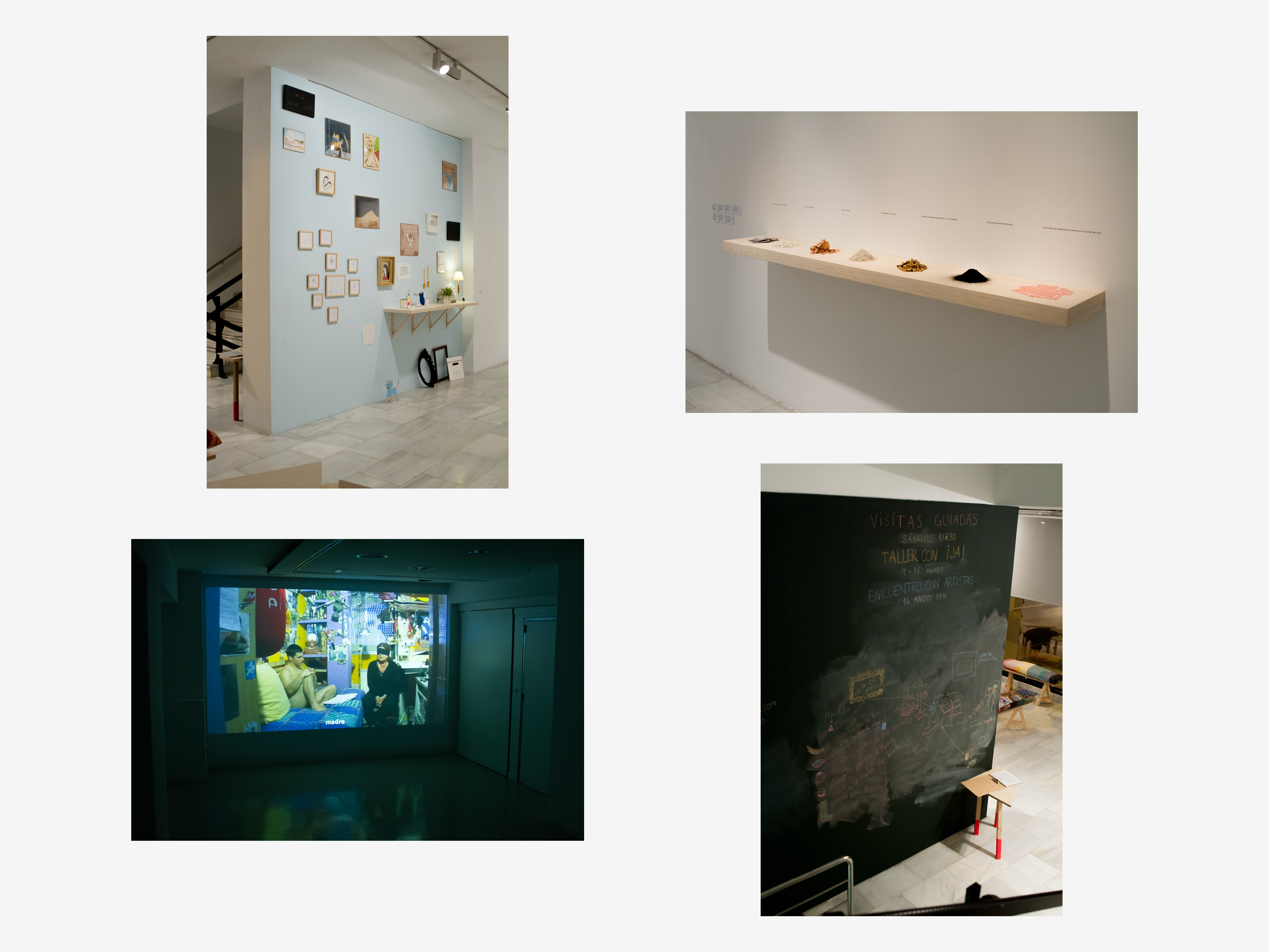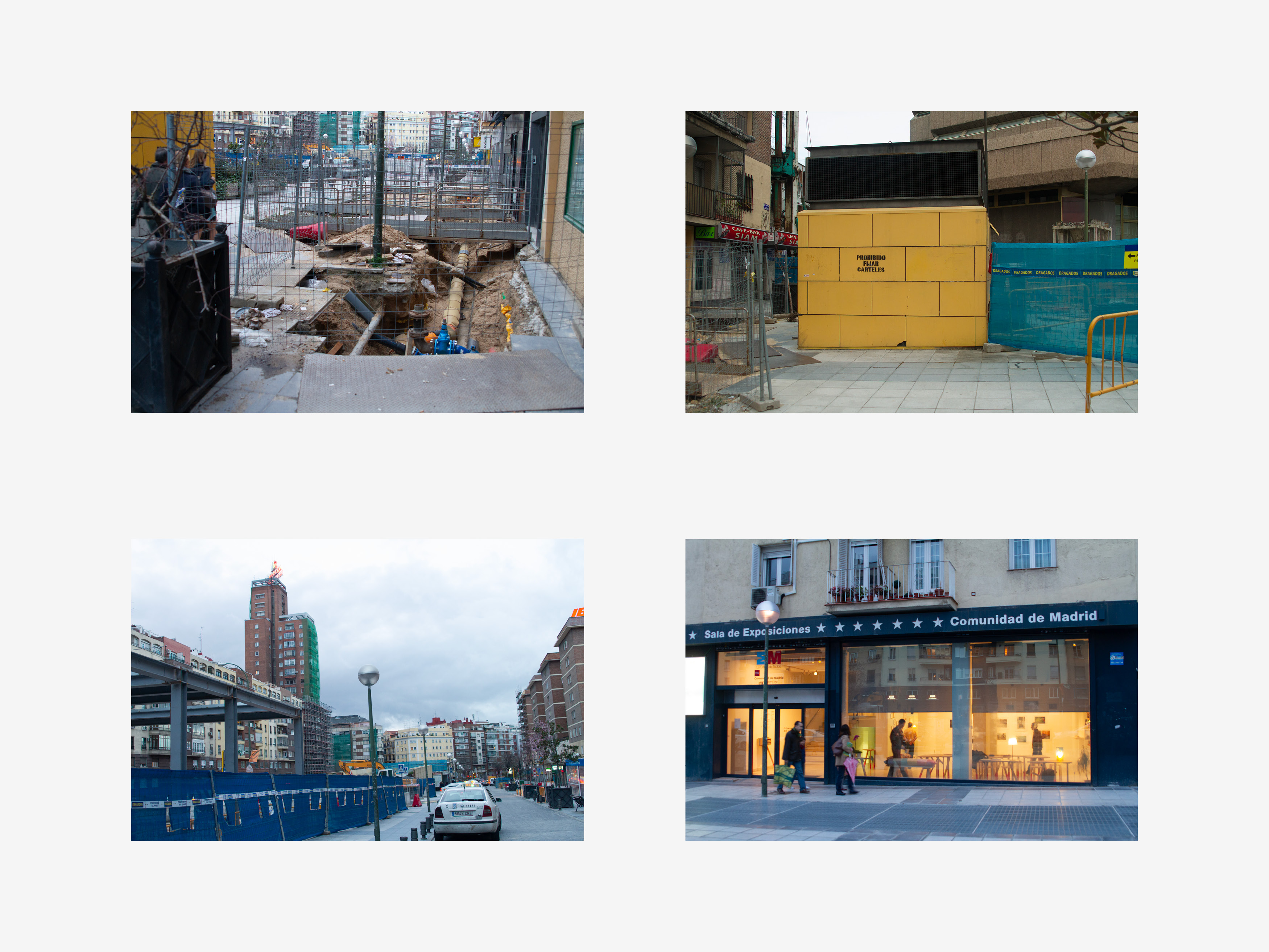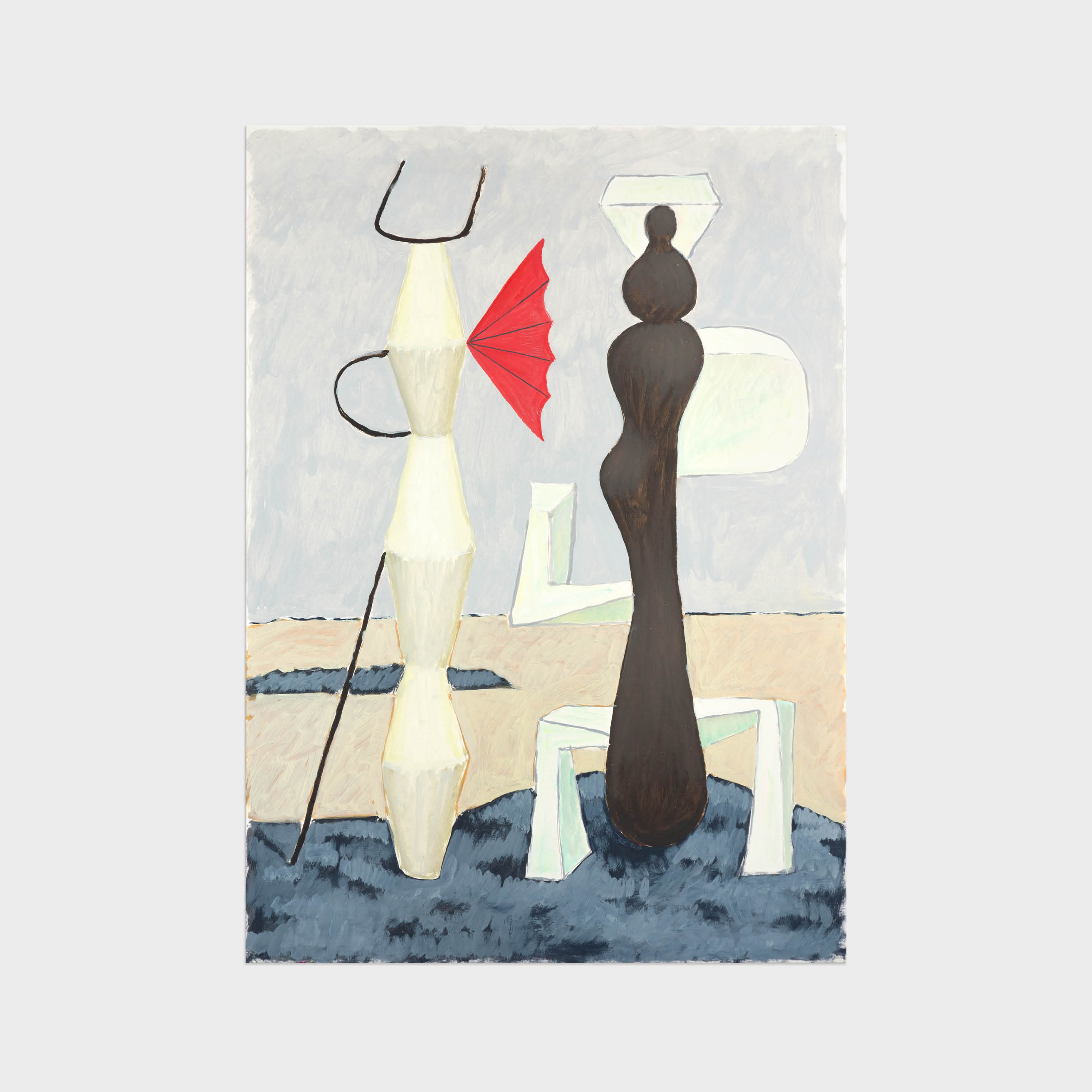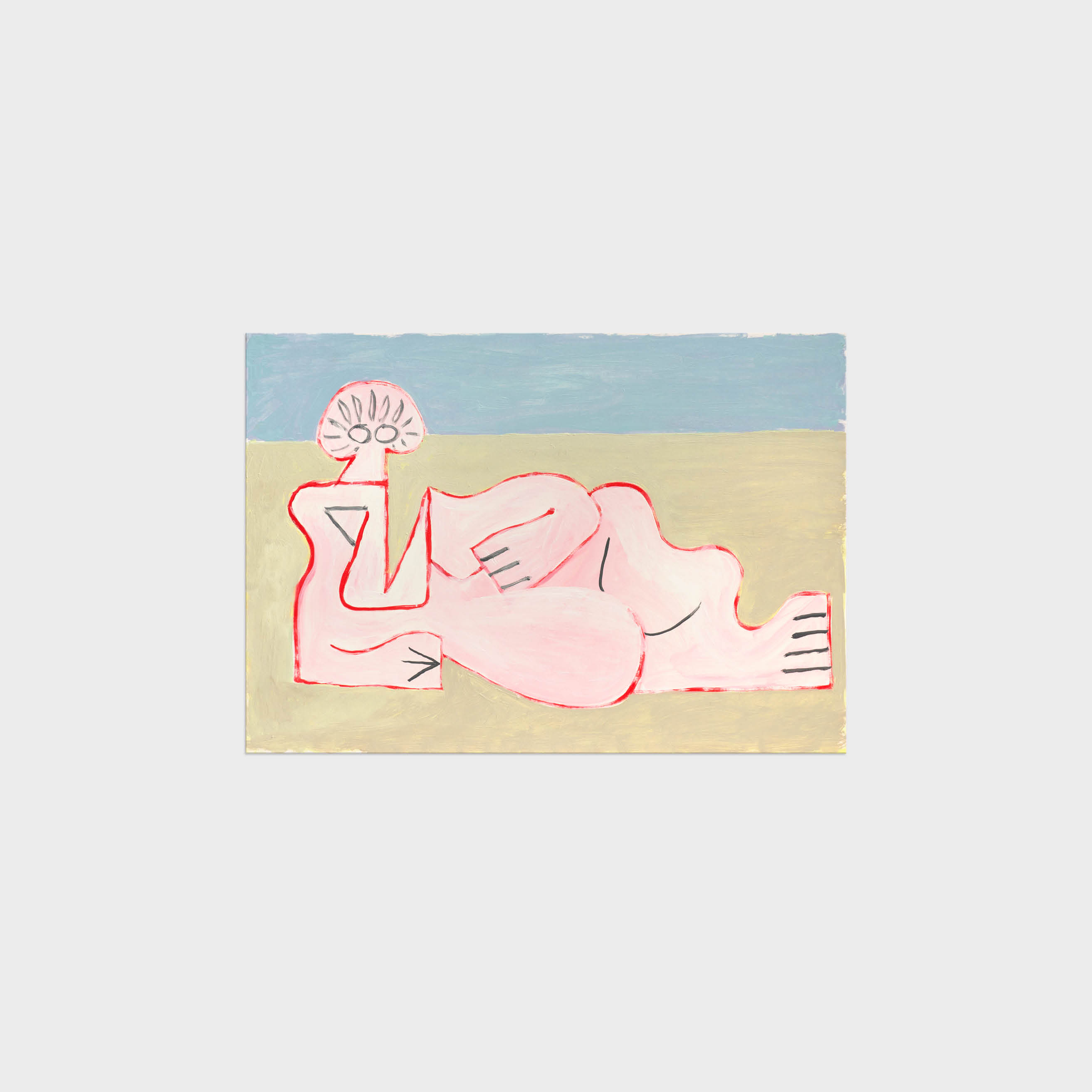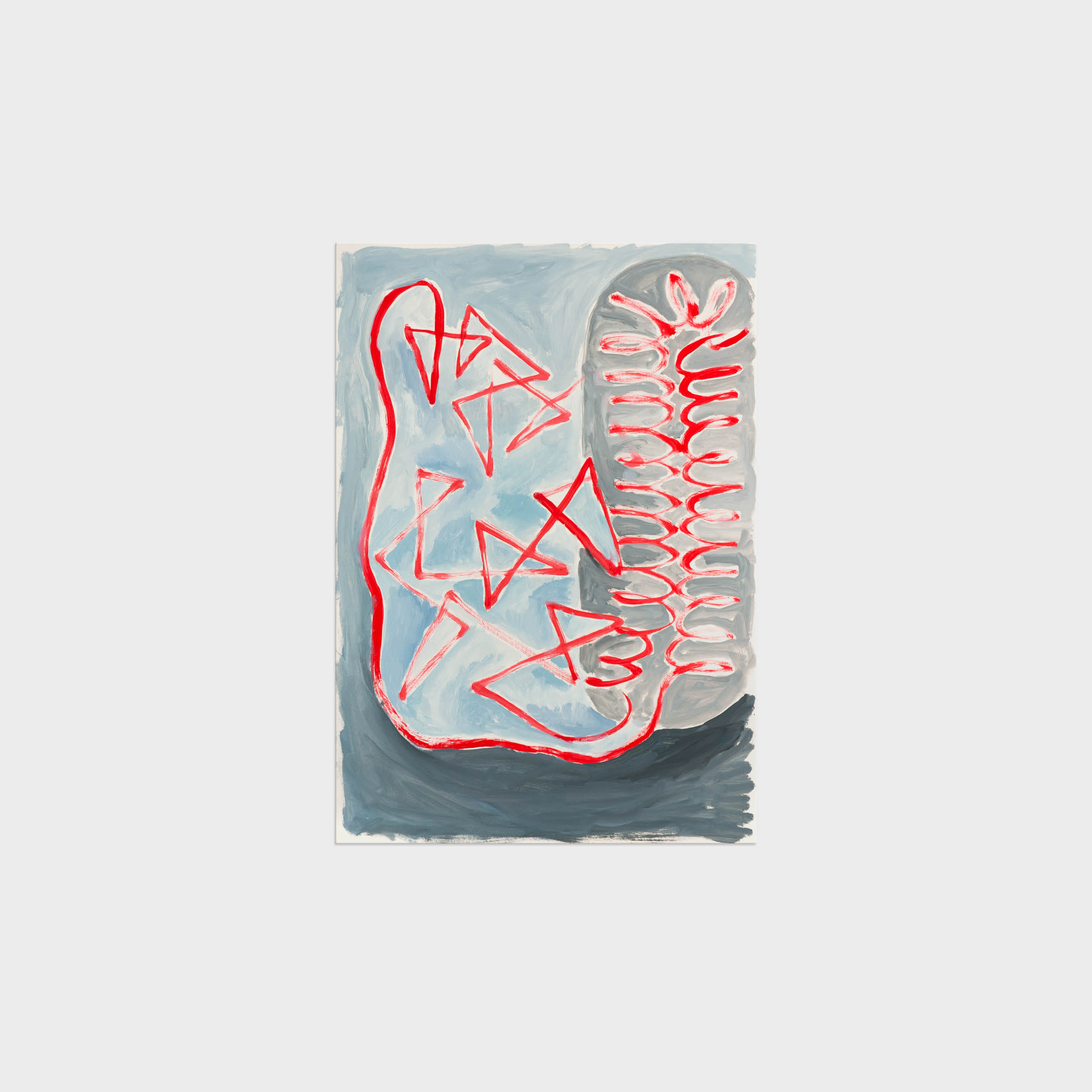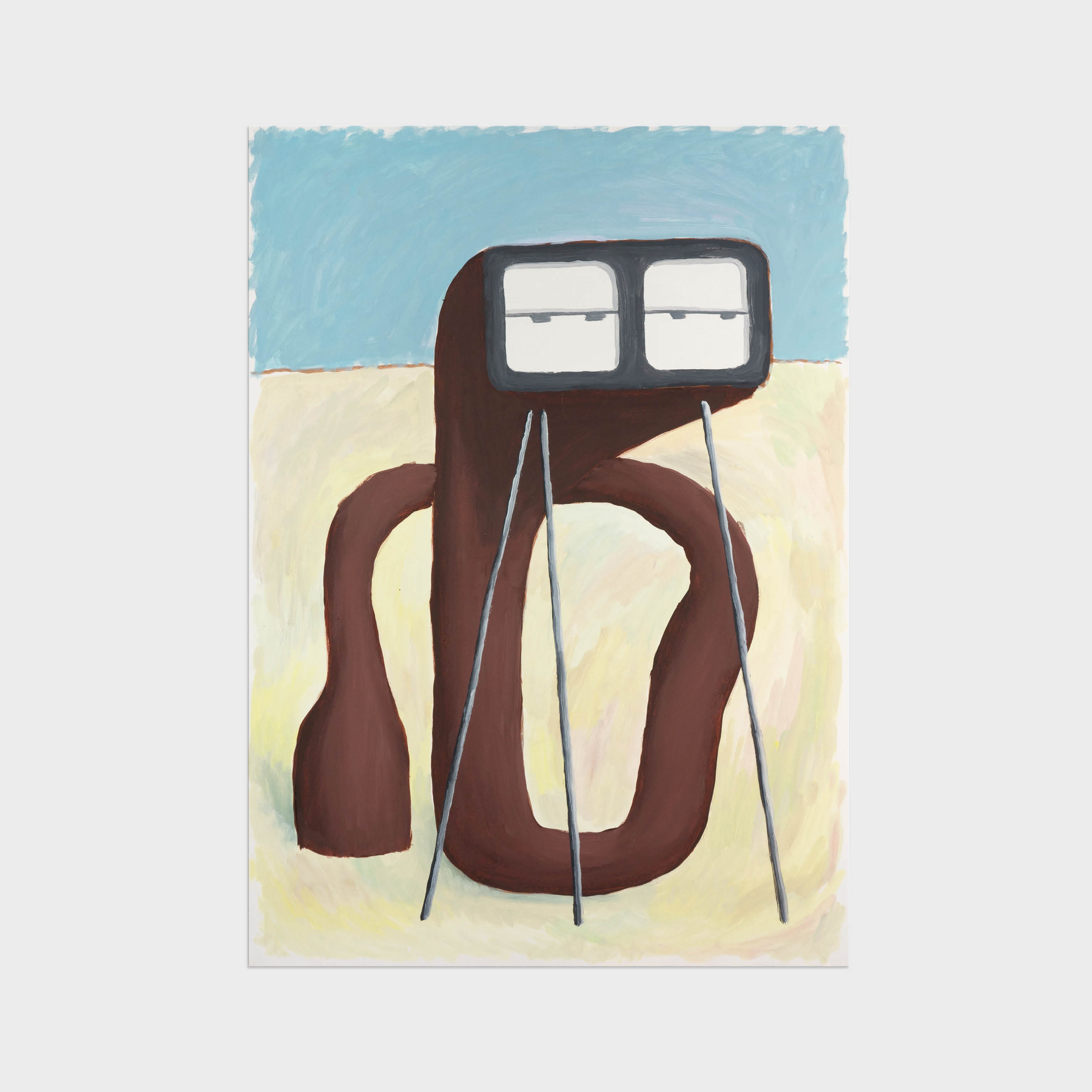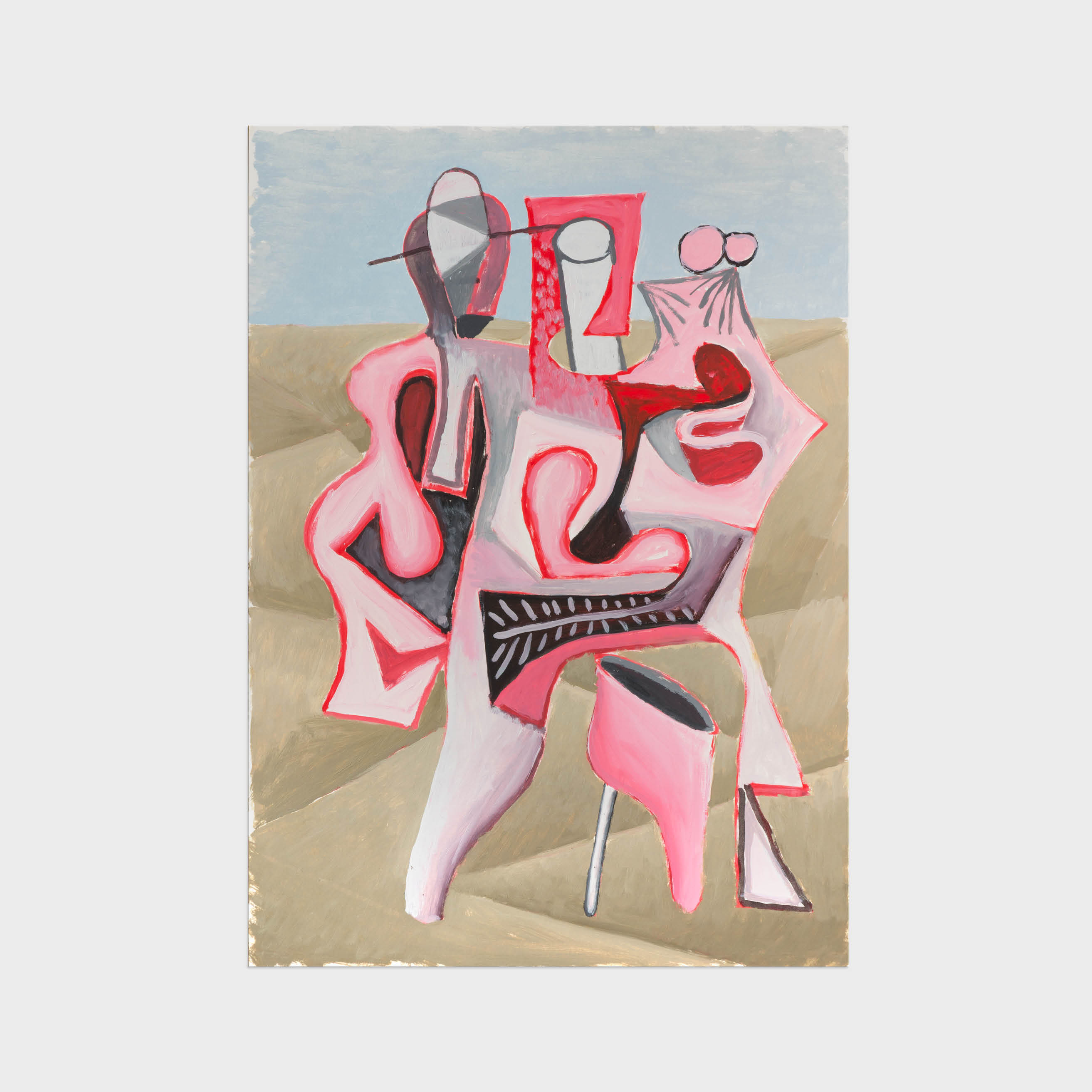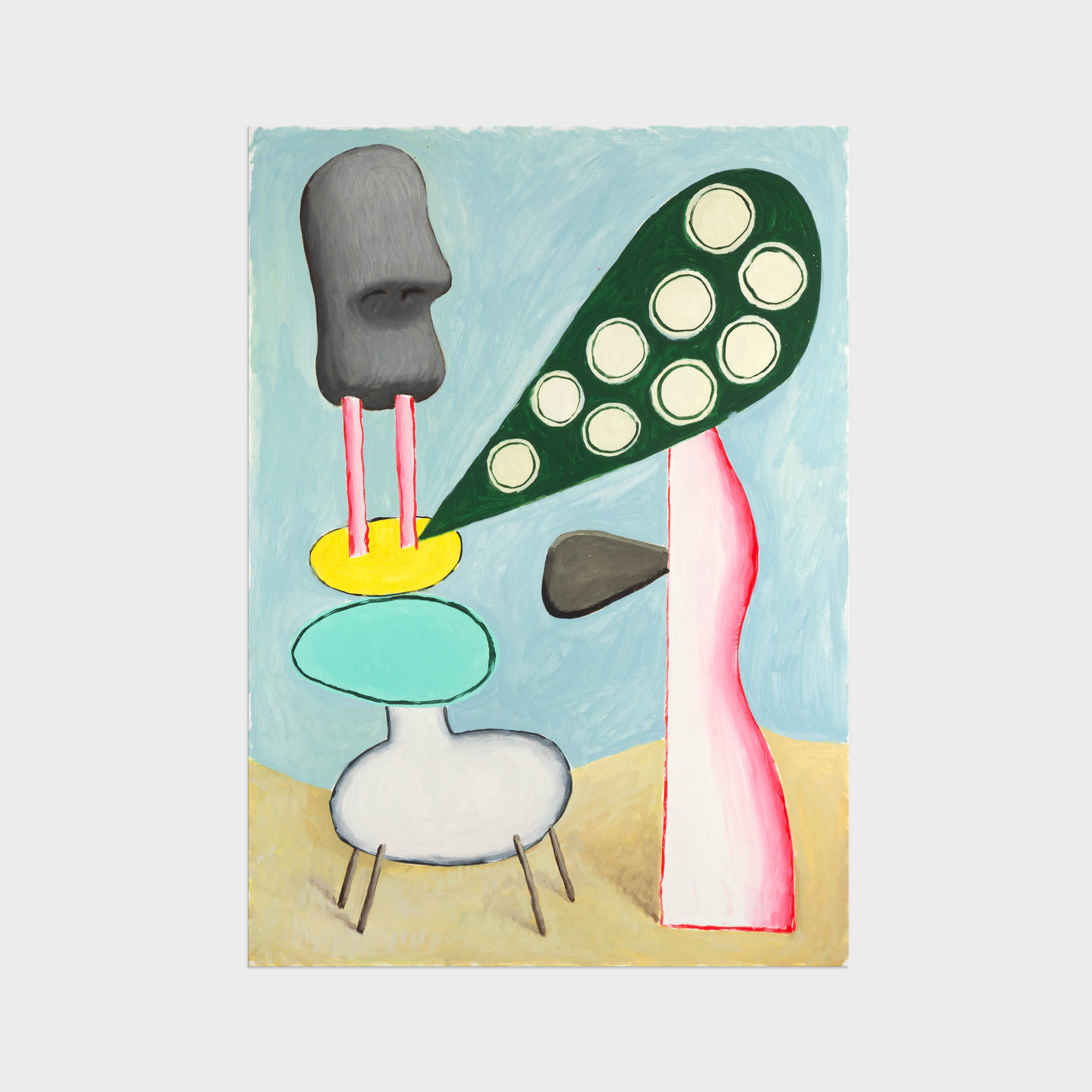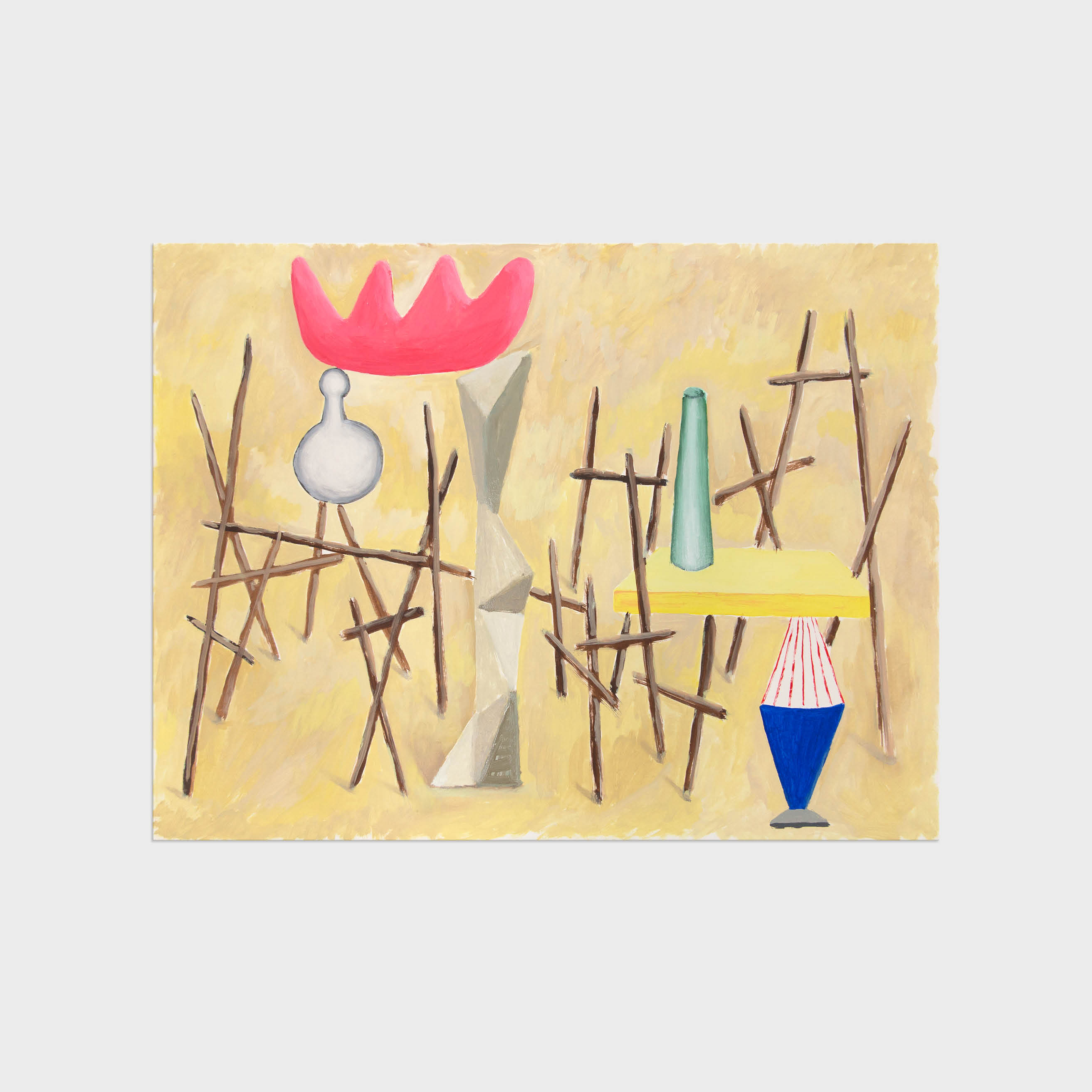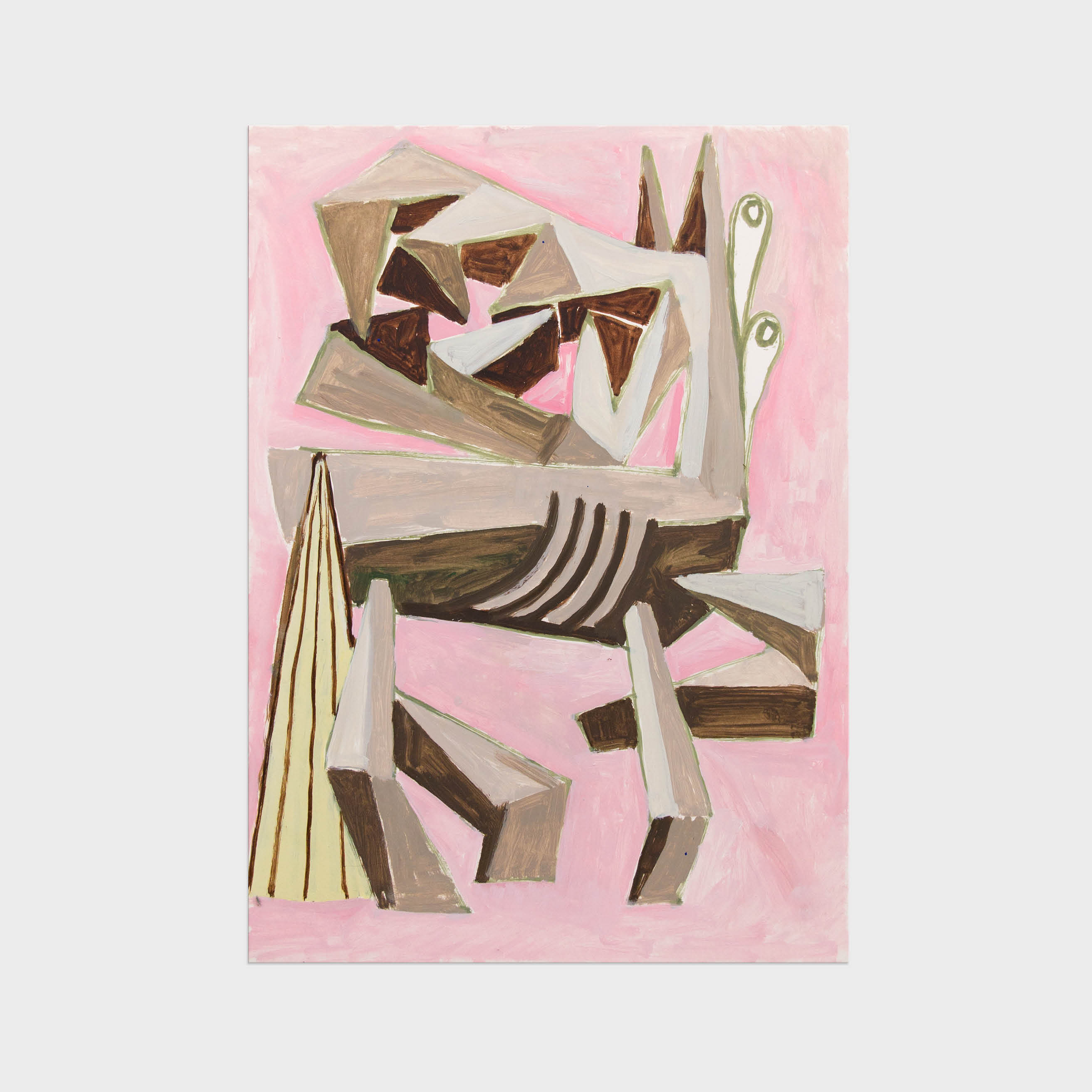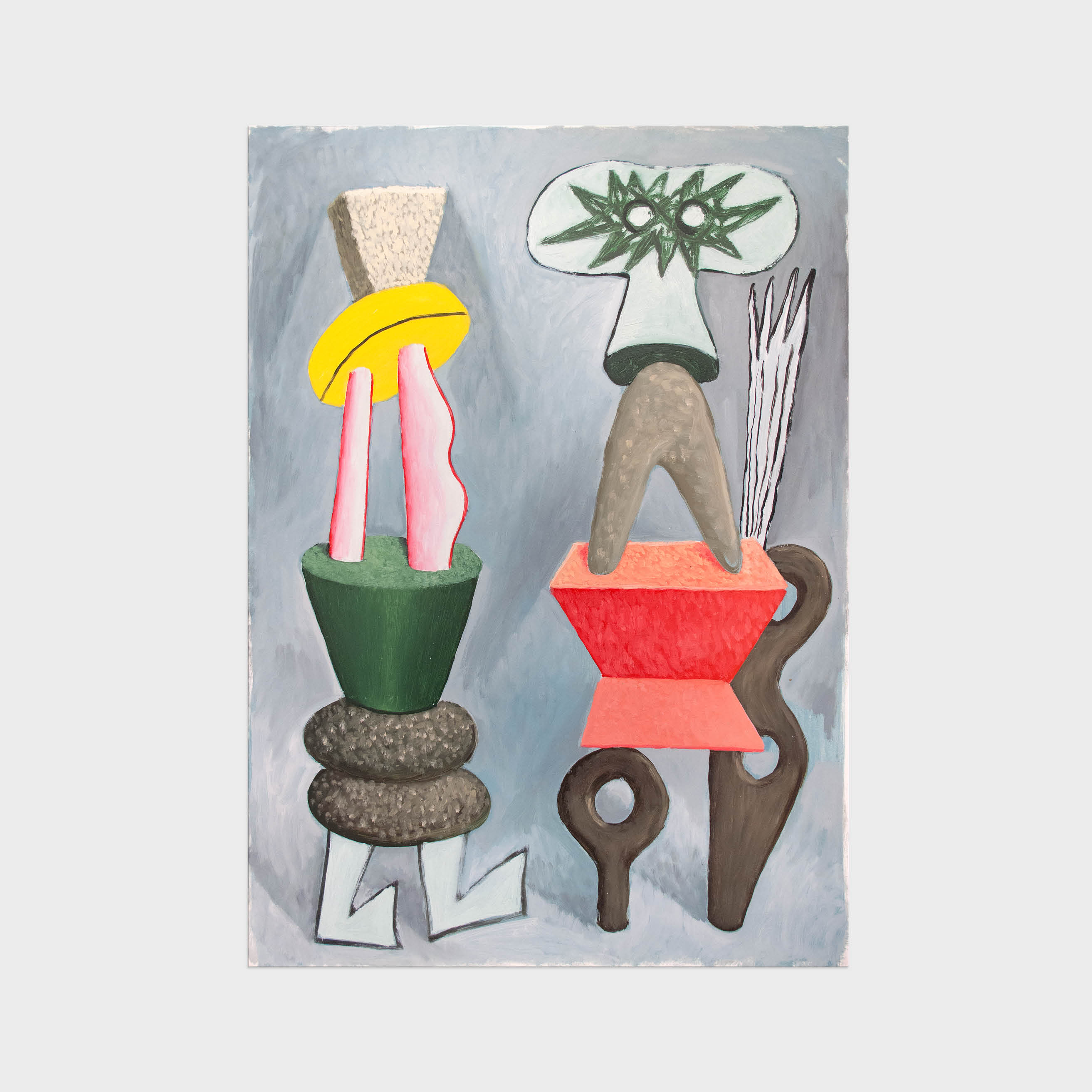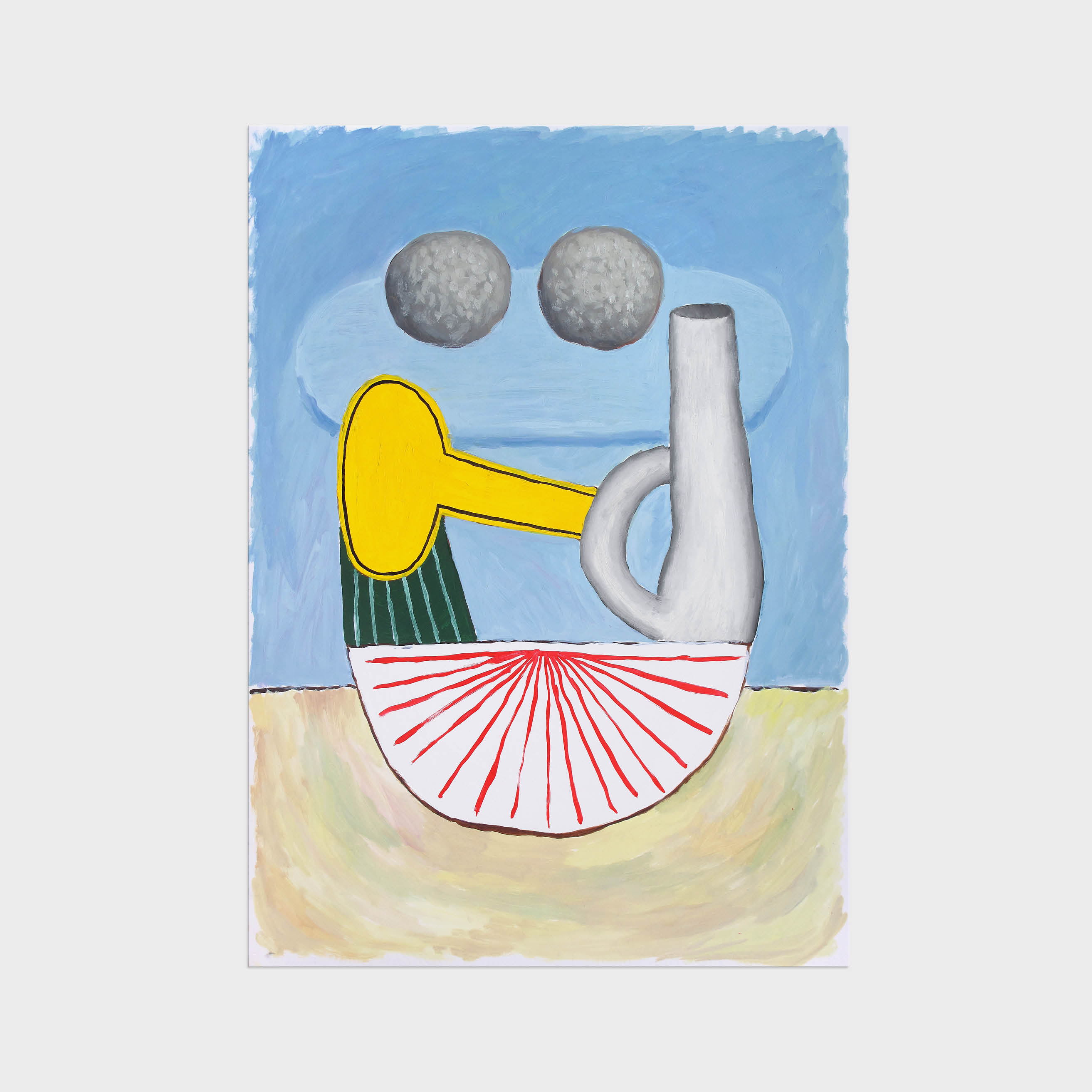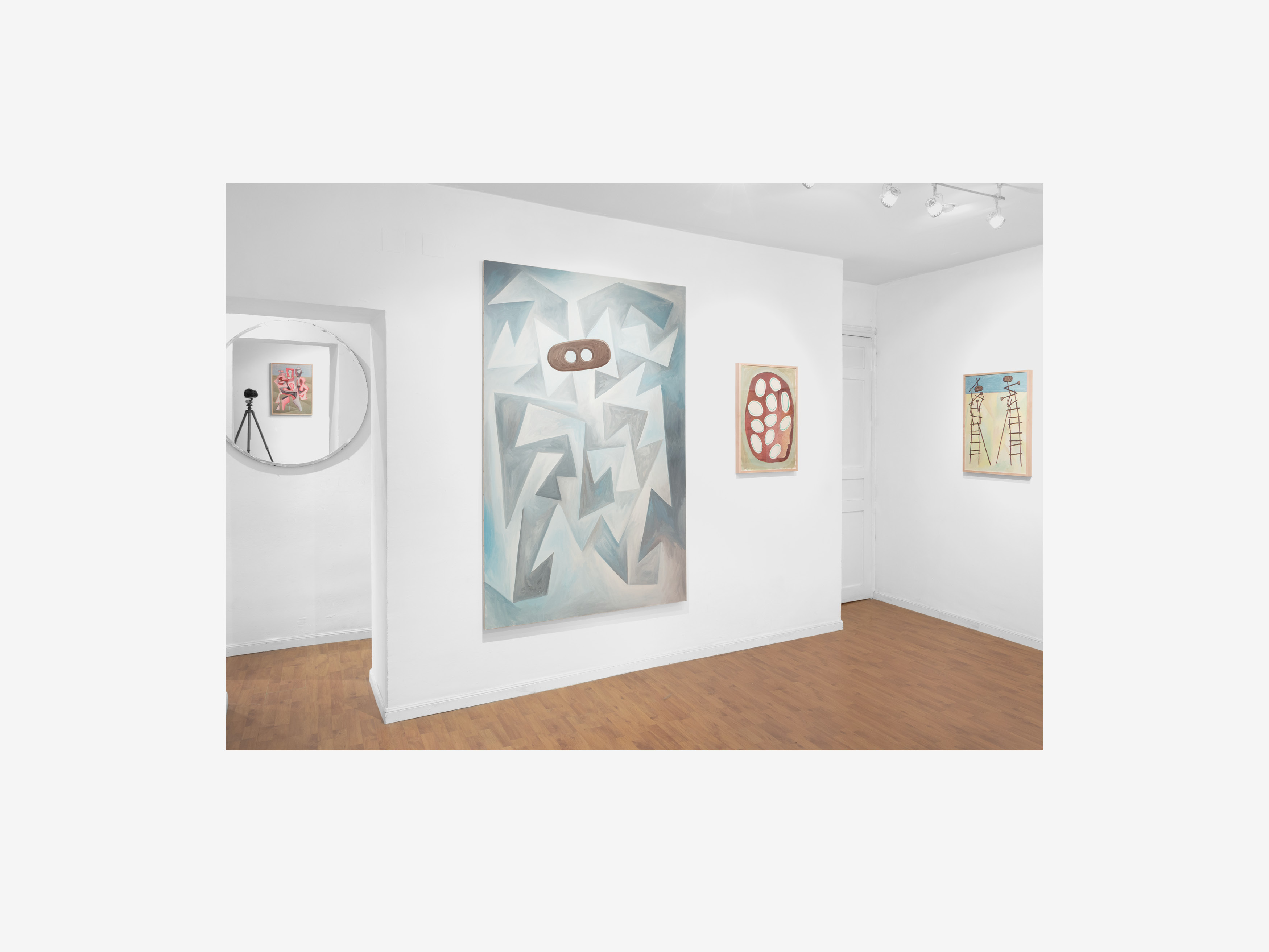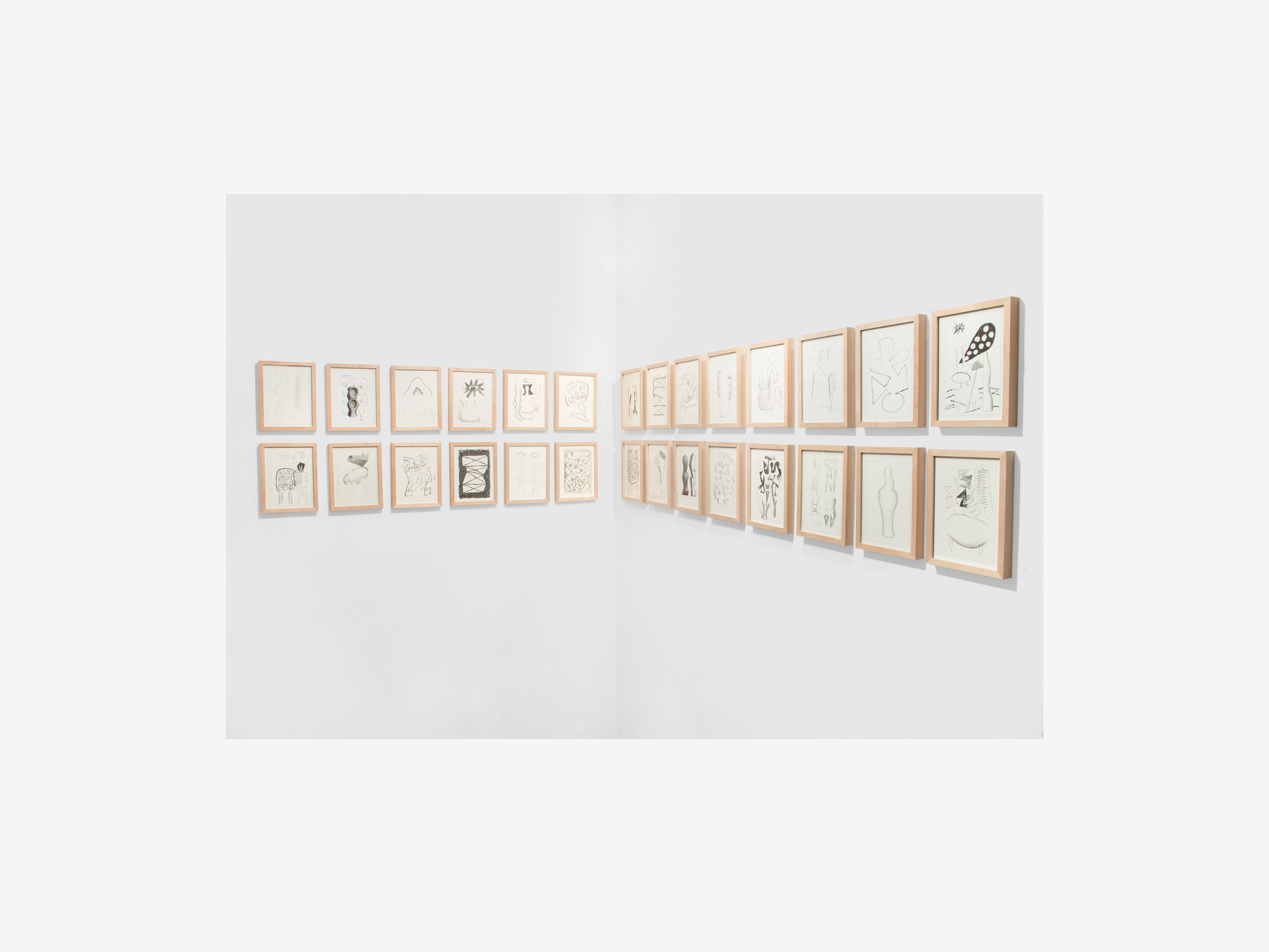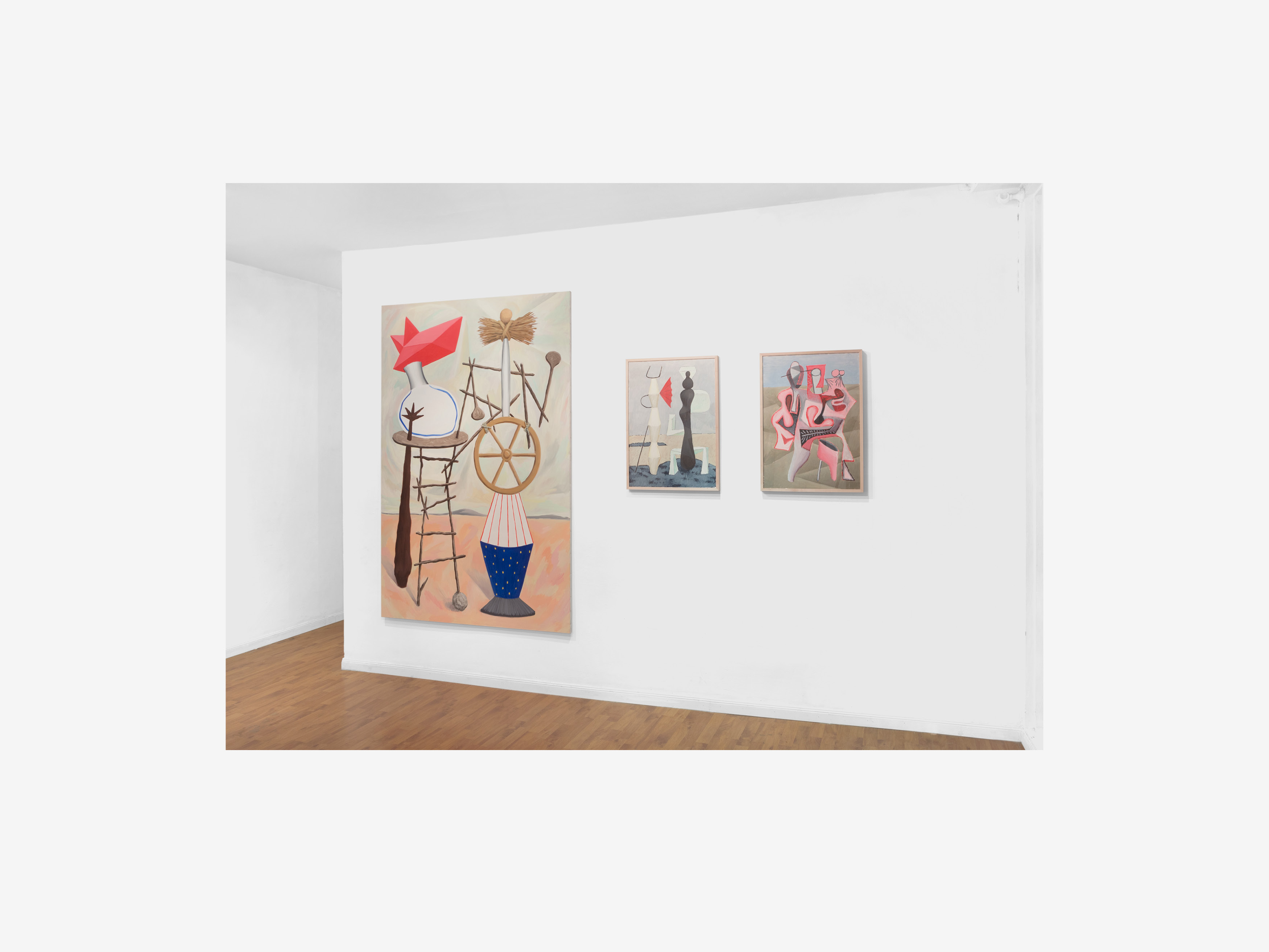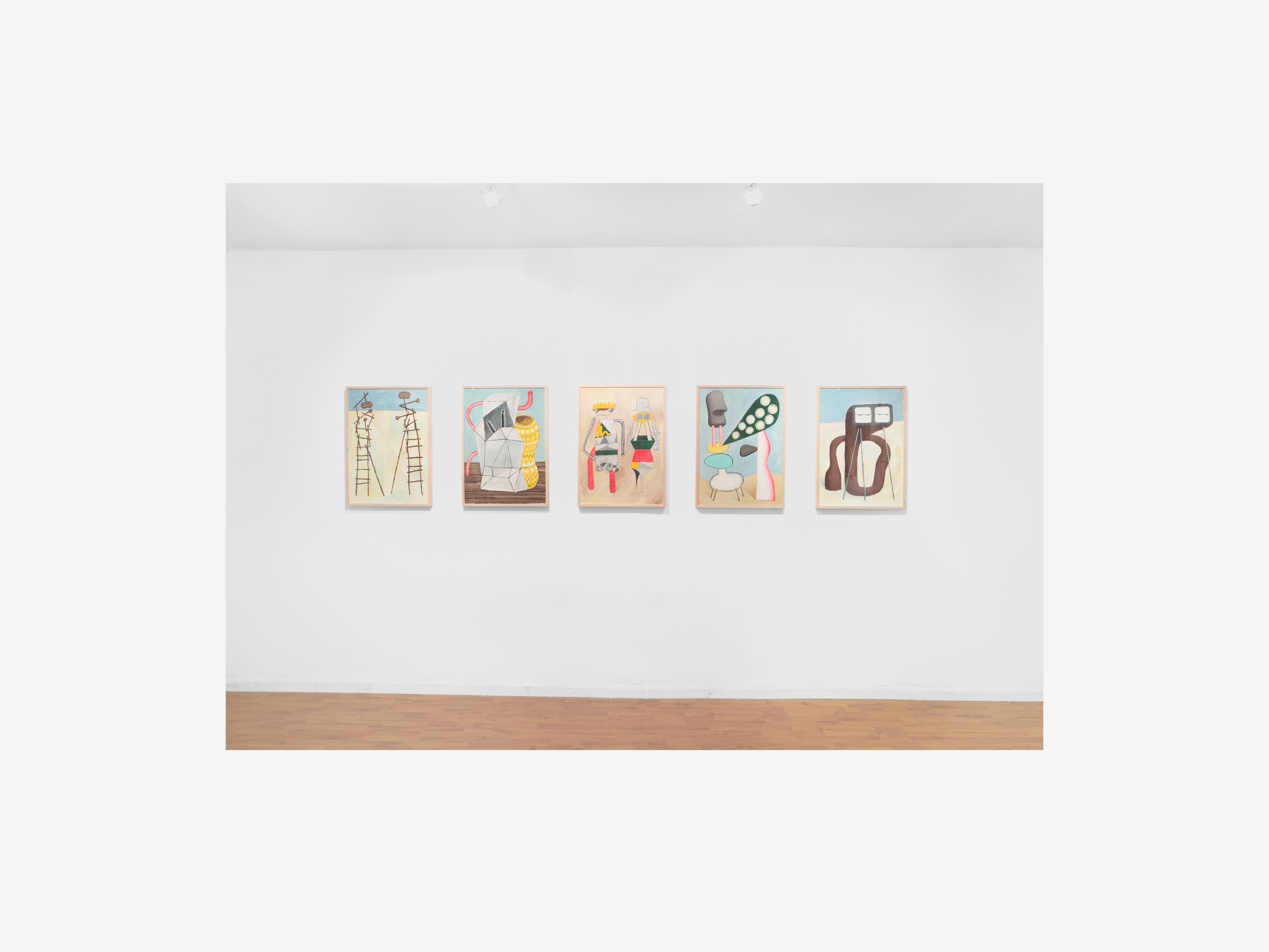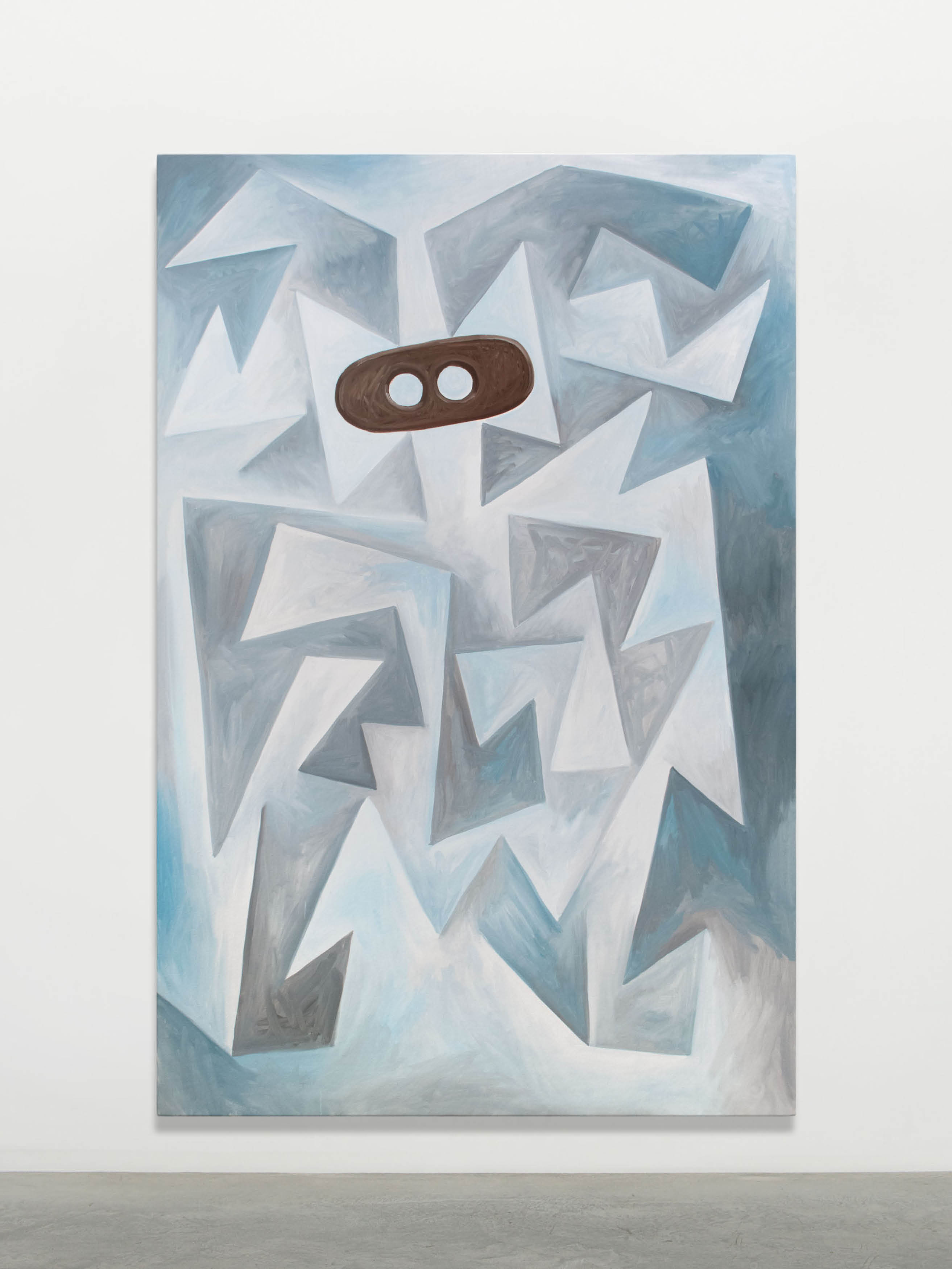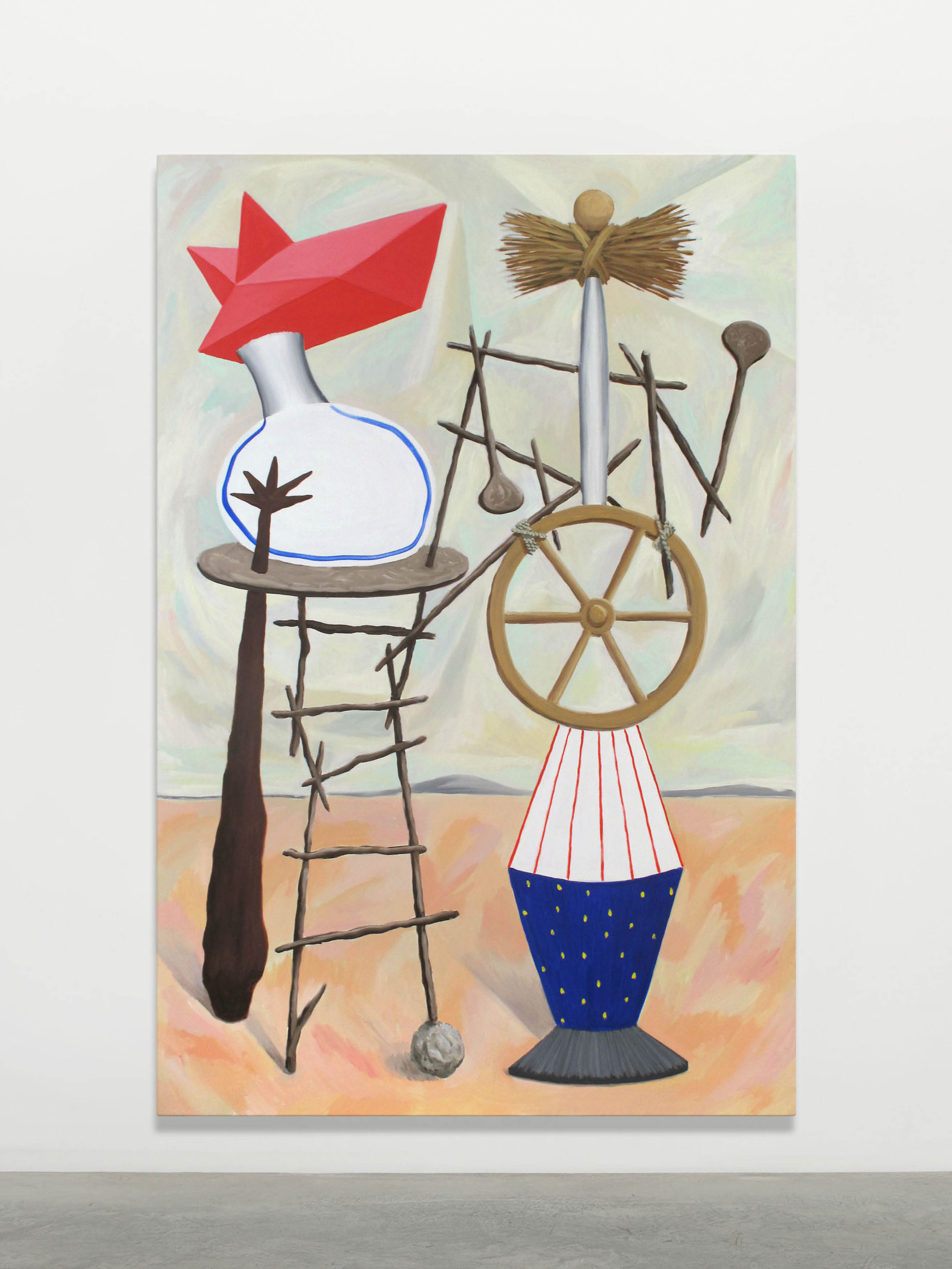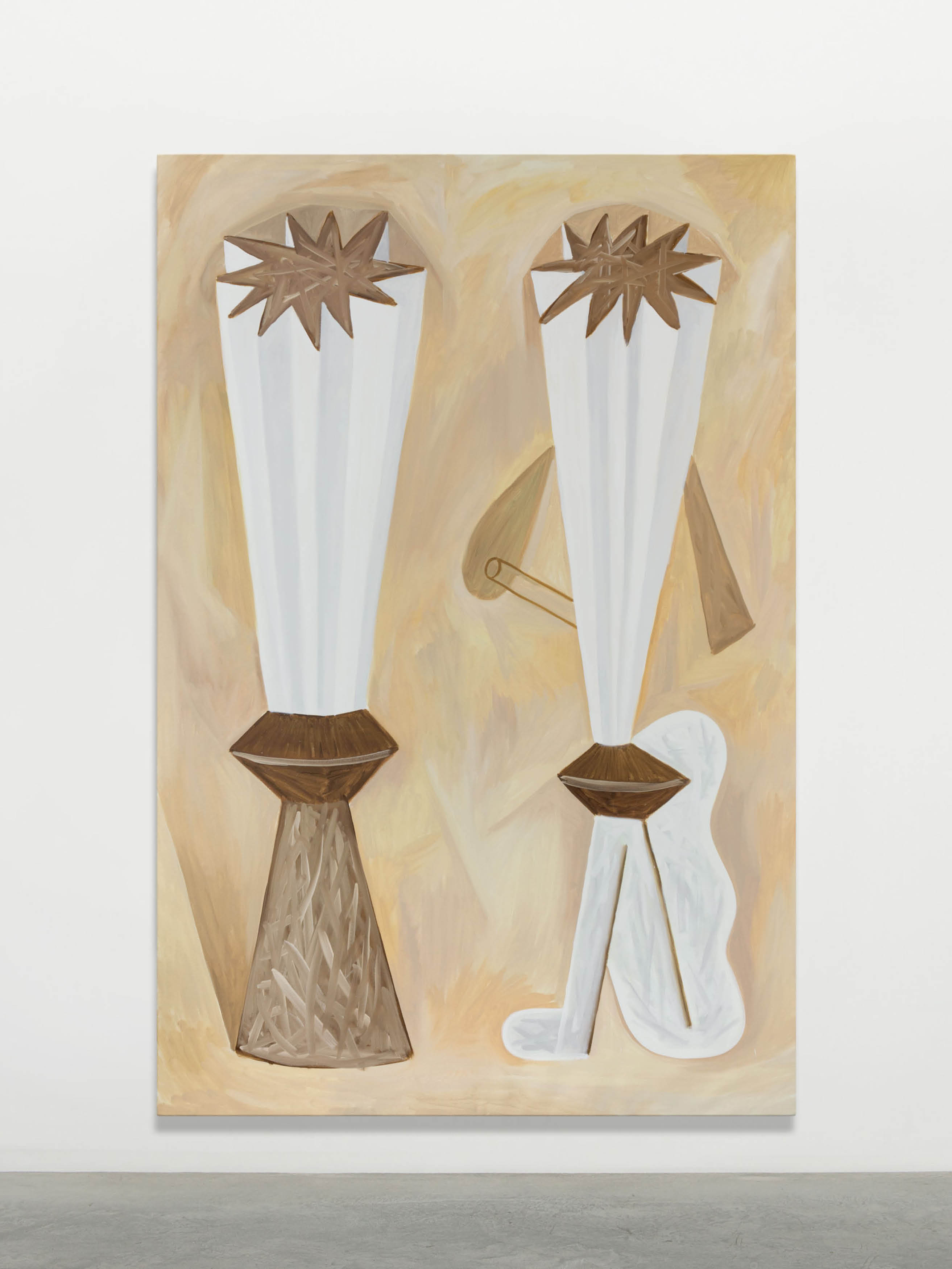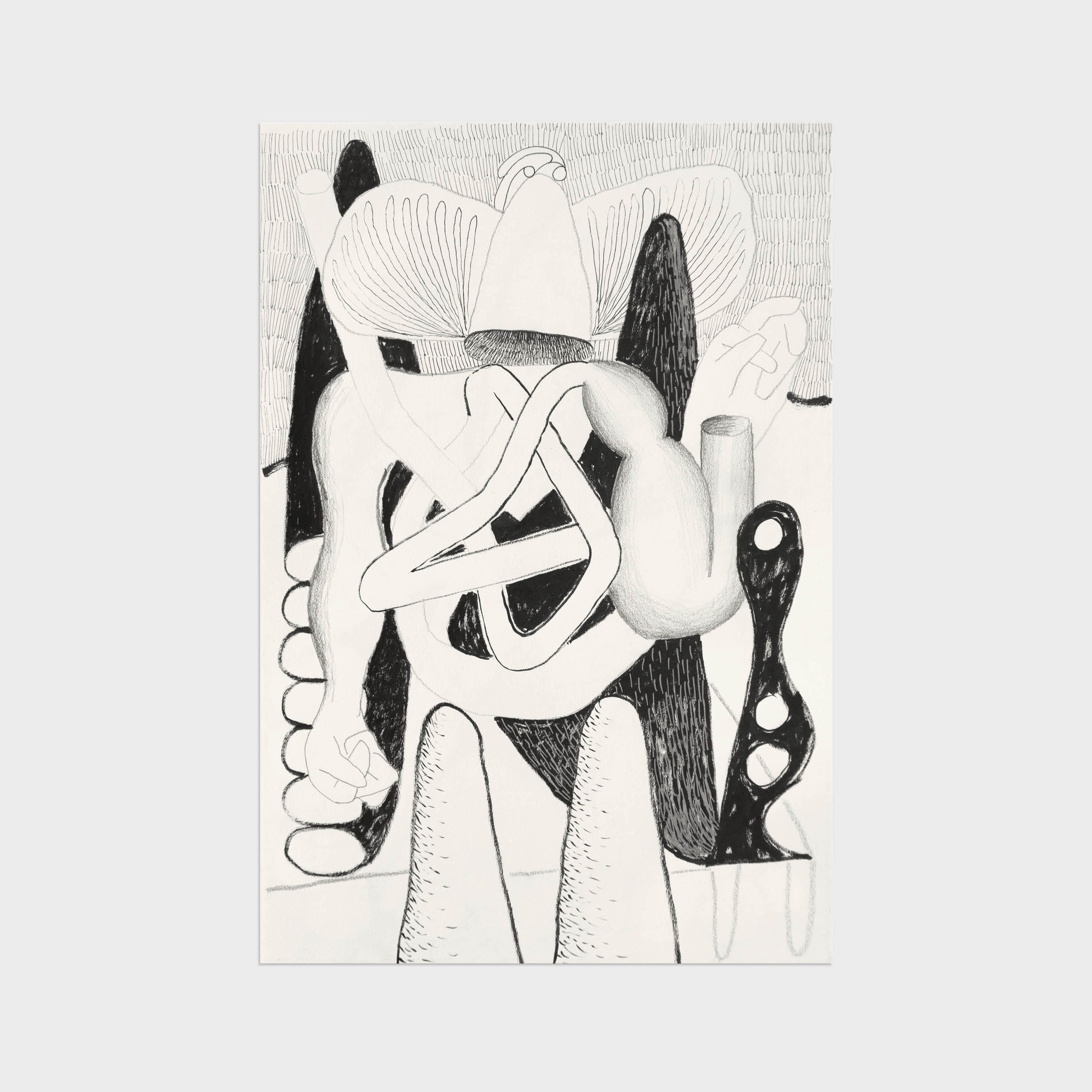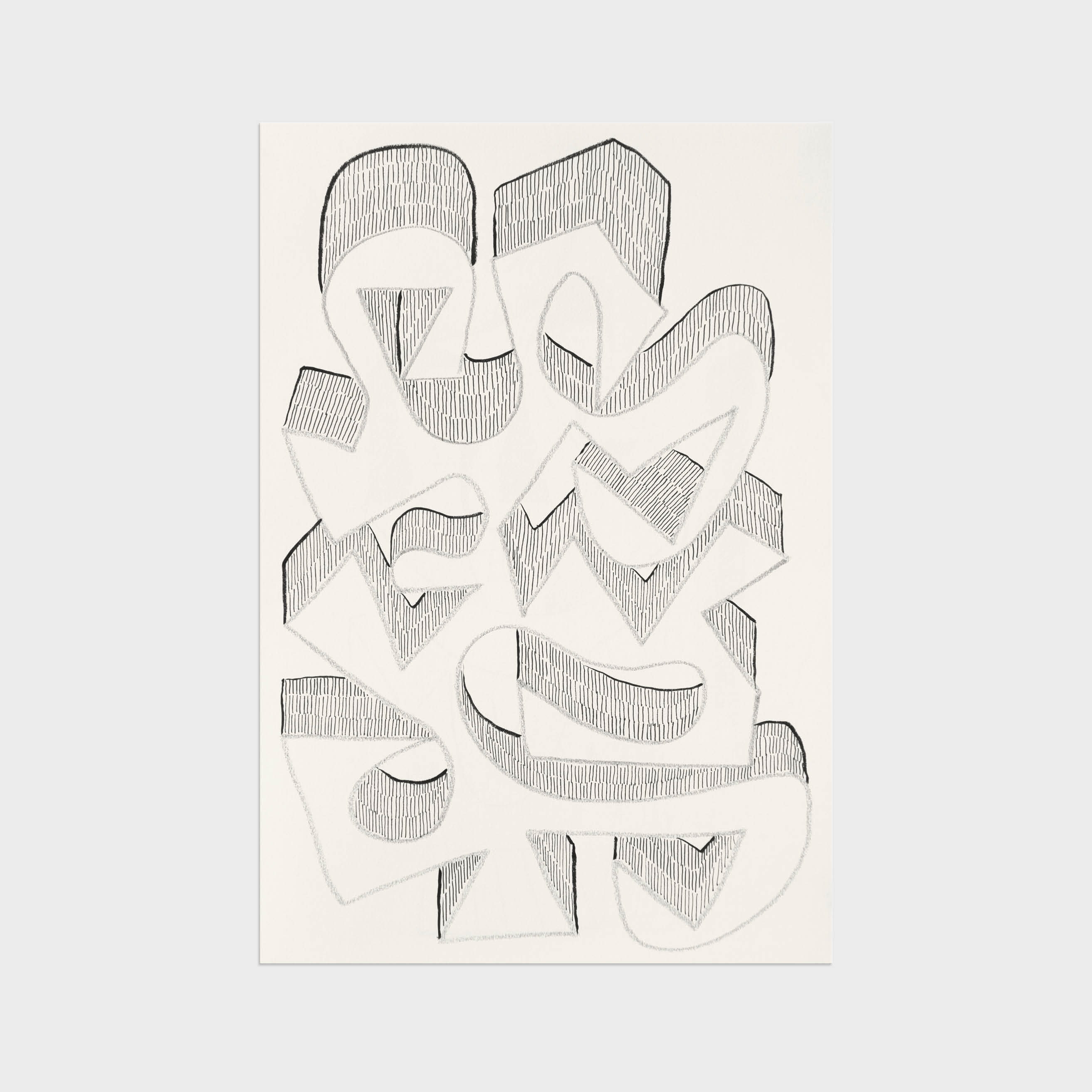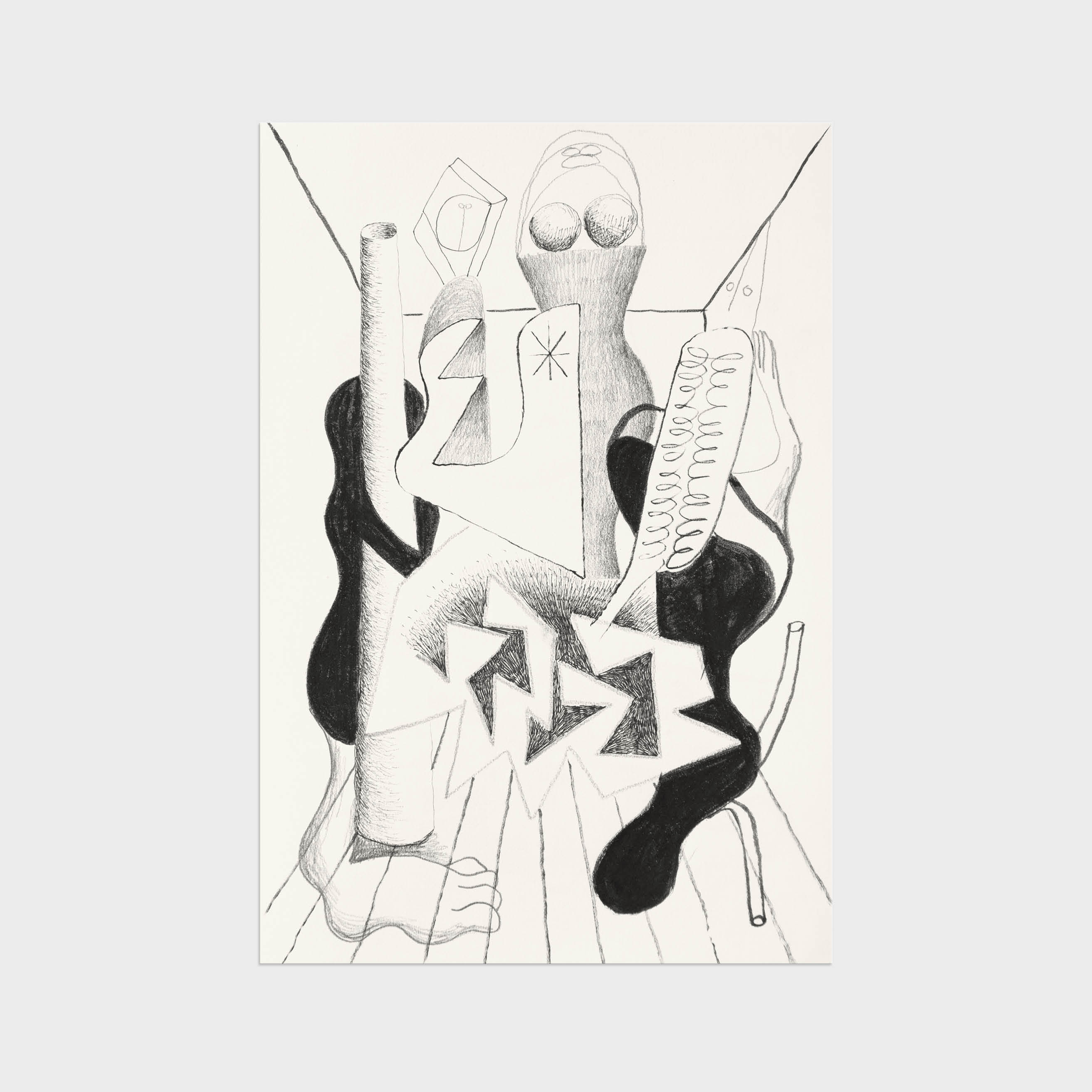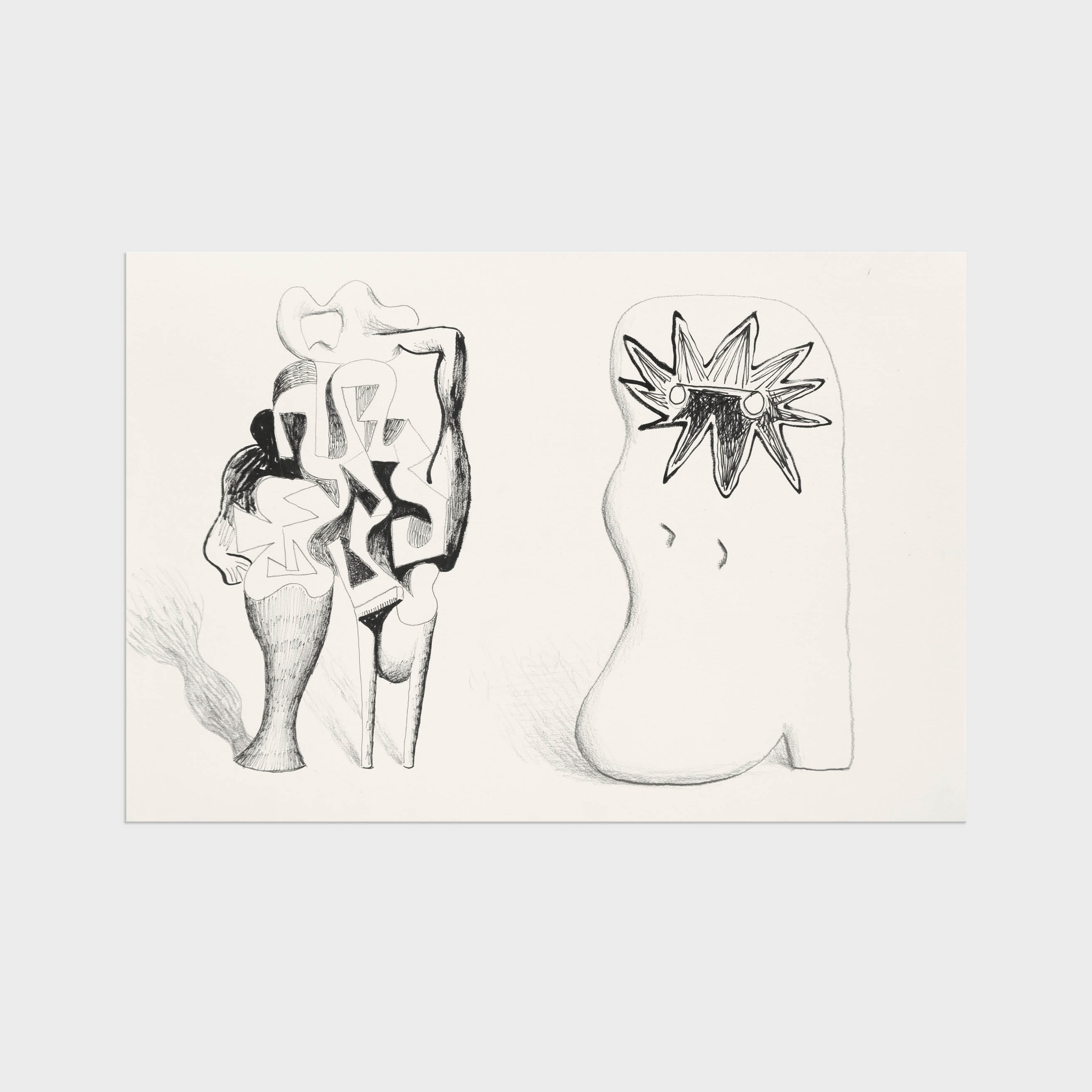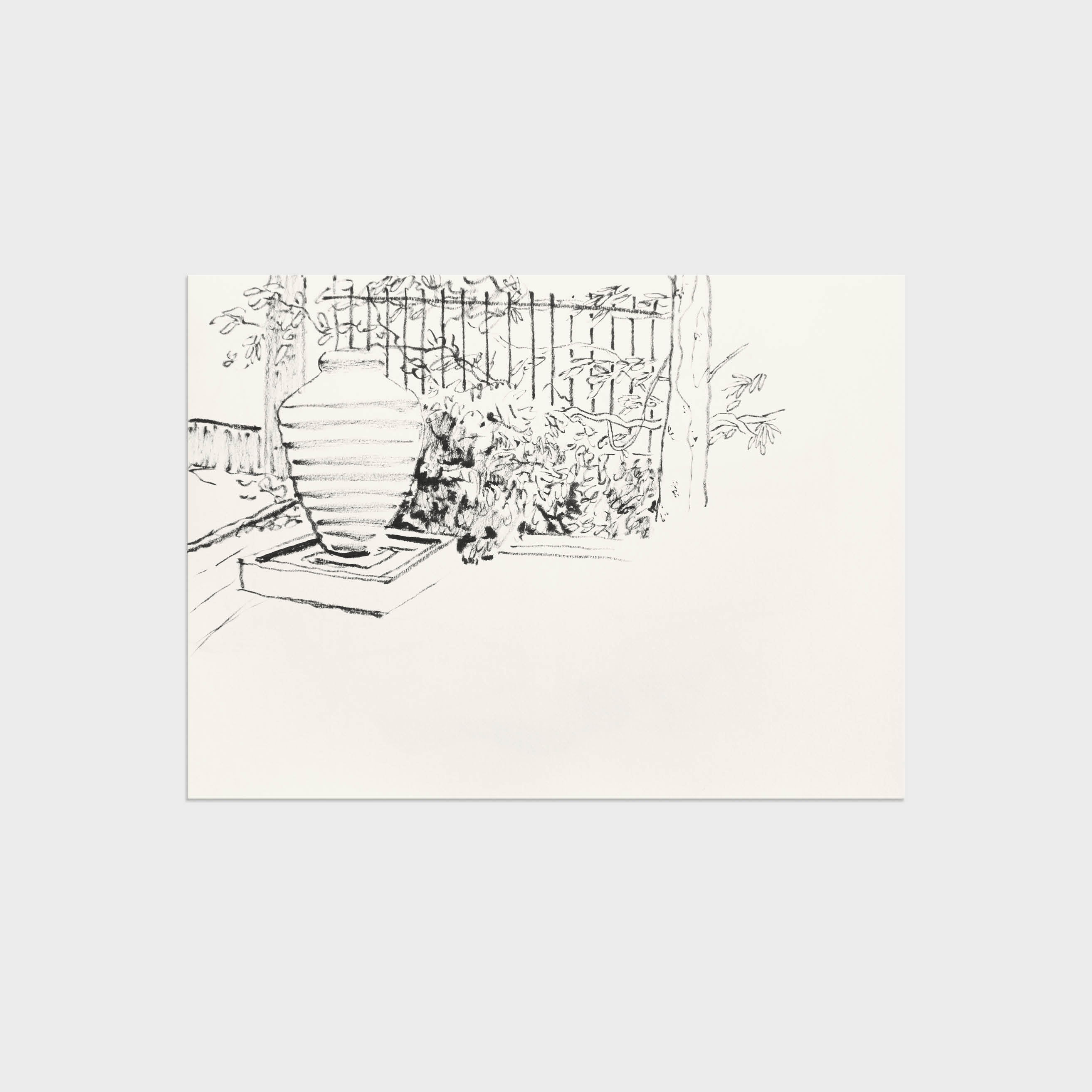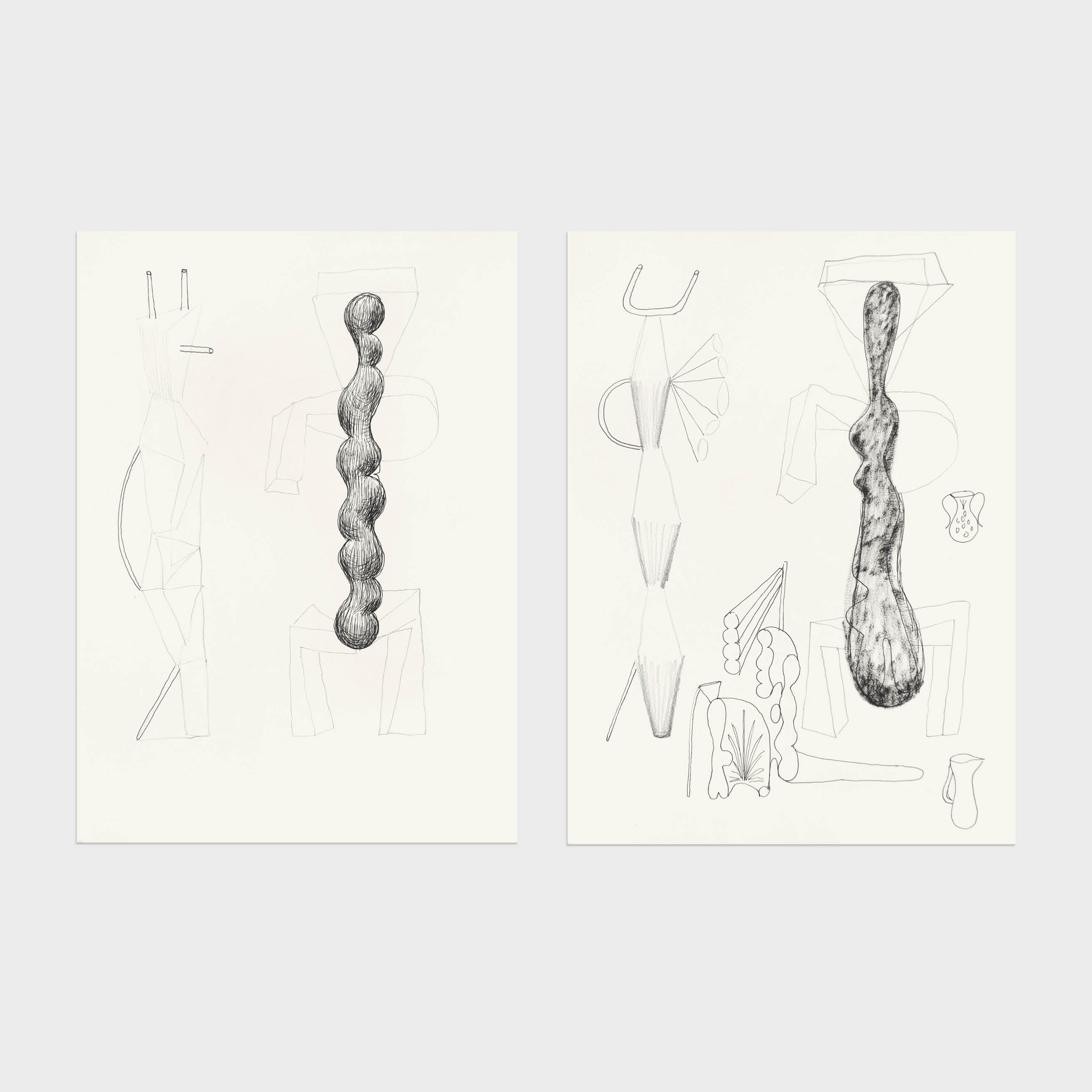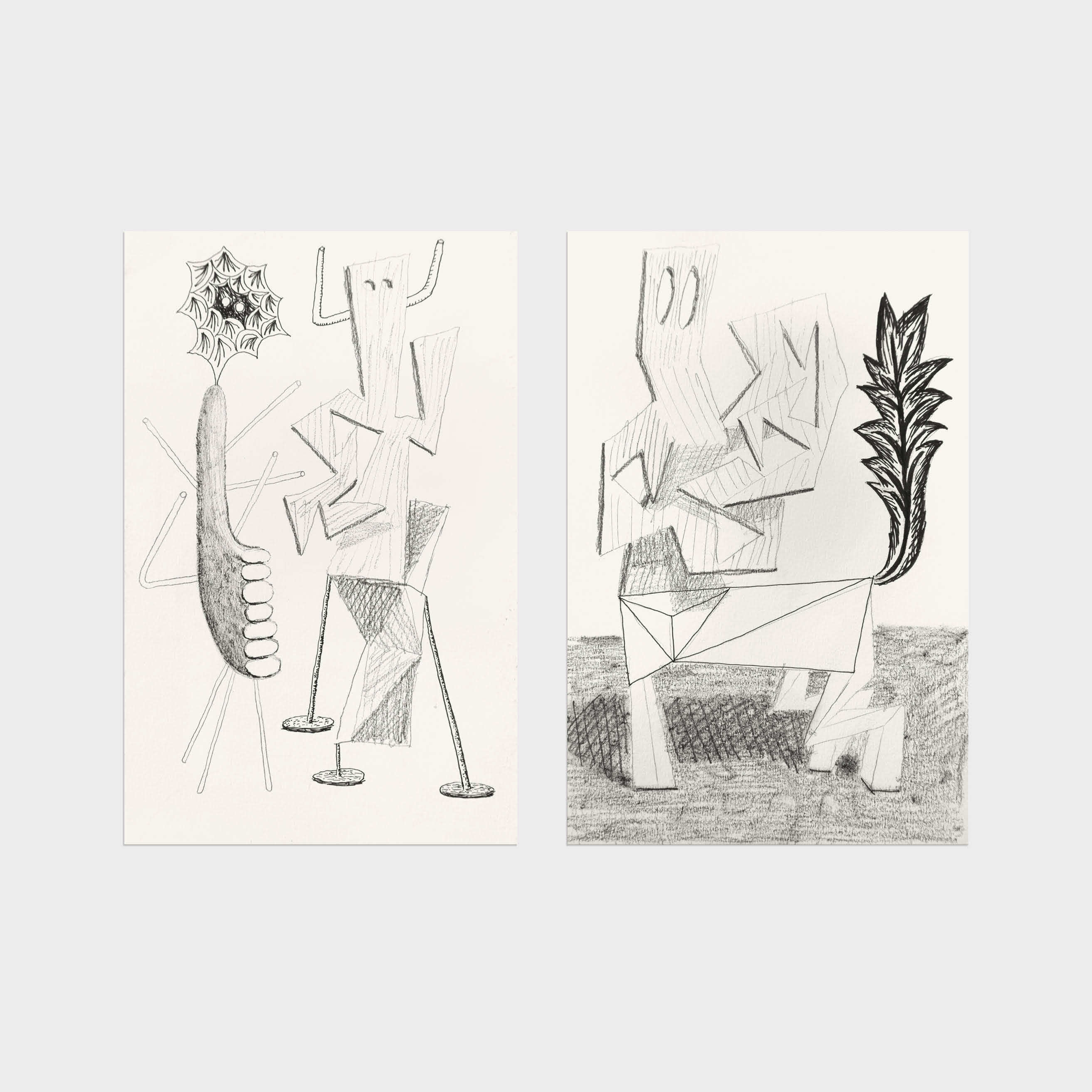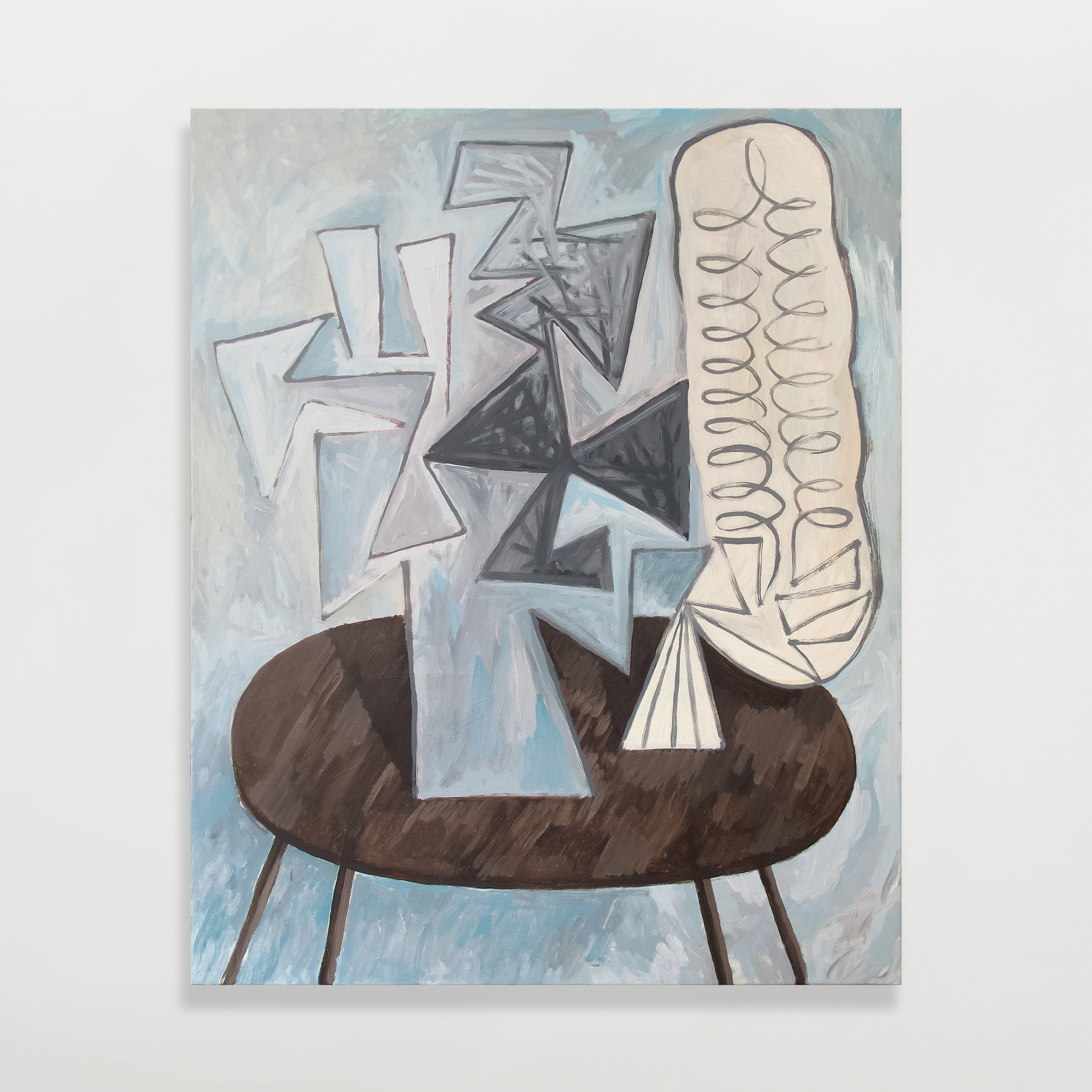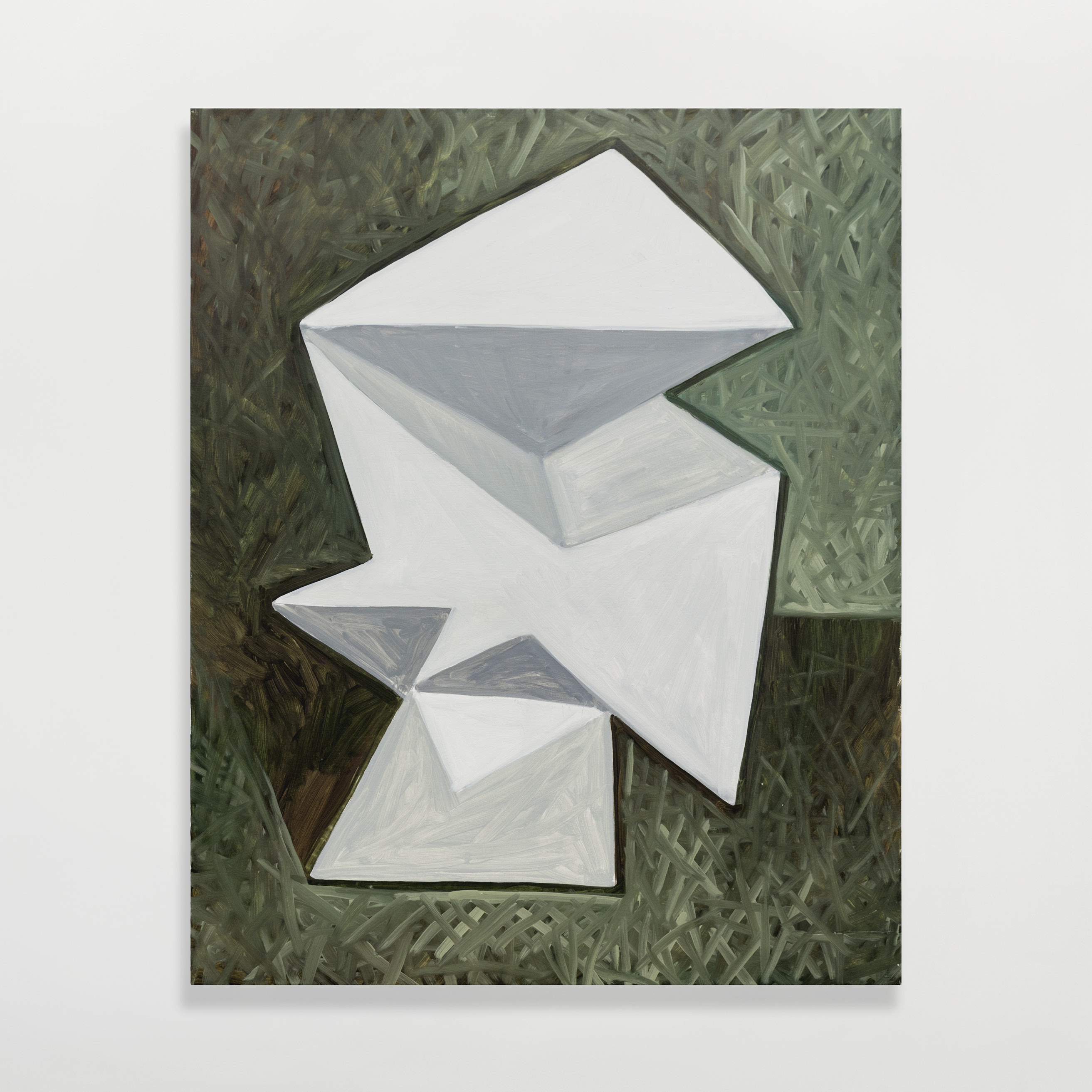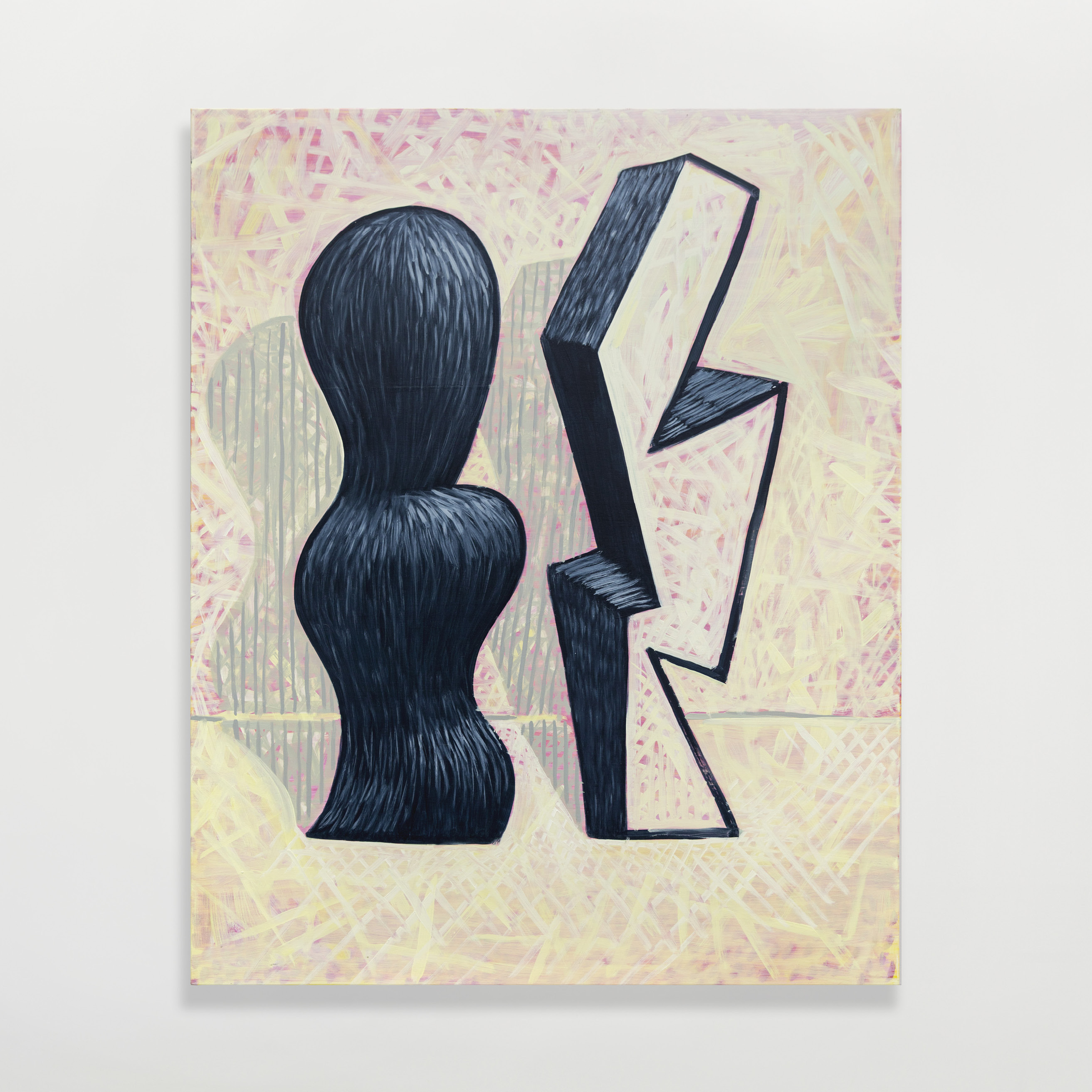The Opening
The opening takes place in the countryside. The window remains as the sole witness. The figures stand, calm, awaiting a response. A secret that is not spoken but can be seen. The wheat envelops them all, claiming protagonism, playing with their shadows as far as the horizon allows.
Figures that have built themselves, seeking in the freedom of their forms to summarize the world, or at least a part of it. Each one summarizes it from their point of view, from their fragility or their robustness, from their complexity or their immediacy. But together, they all conjure the mystery that surrounds them.
They believe they must solve it or discover it, but they know they just have to remember it. Everything is in a pictorial memory, connecting this scene with others. You just have to pull the thread to see it and keep it held while walking.
—
La inauguración tiene lugar en el campo. La ventana queda como único testigo. Las figuras permanecen de pie, tranquilas, esperando una respuesta. Un secreto que no se dice pero se puede ver. El trigo les envuelve a todos reclamando protagonismo, jugando con sus sombras hasta donde el horizonte les permite.
Figuras que se han construido a sí mismas, buscando en la libertad de sus formas resumir el mundo, o al menos una parte de él. Lo resumen cada uno desde su punto de vista, desde su fragilidad o su robustez, desde su complejidad o su inmediatez. Pero todos juntos conjuran al mismo tiempo el misterio que les rodea.
Creen que deben resolverlo o descubrirlo, pero saben que solo tienen que recordarlo. Todo está en una memoria pictórica, que conecta esta escena con otras. Solo hay que tirar del hilo para verlo y mantenerlo sujeto mientras se camina.
LV 2012
The Magic of Art in Luis Vassallo
Antonio Bonet Correa
Luis Vassallo is a young painter with a great imaginative capacity. His art belongs to the so-called “tendencia clara,” which has dominated much of the most recent Spanish painting since the 1980s. An inherent colorist, with a refined and delicate palette, he possesses an instinctive and intuitive compositional sense of a figurative nature. Just as in his oils, in his drawings and small installations of mixed techniques, using ceramics or metallic objects and photographs, Vassallo unfolds a brilliant iconographic range of unusual, ironic, and surreal fantasy. Interested in the morphology of beings and objects that attract him the most, he is a natural explorer of the most elemental and primordial character of apparent reality. Especially in the drawings in his notebooks, they are like an inventory of the major subdivisions in which the different components of nature are considered distributed, both the animal, vegetable, and mineral kingdoms based on their common characteristics. In his pictorial work, Vassallo captures the metaphorical image of the visual appearances that attract and fascinate him the most, turning his representations into small enigmas of conceptual order and magical significance.
Luis Vassallo’s pictorial work is inserted in the plastic tradition of the historical Spanish avant-garde of the years before the Civil War of 1936. The works of the early Miró, Maruja Mallo, Alberto, Benjamín Palencia, or Ortega Muñoz are the references of a new concept of landscape and the interpretation of the life of a primitive and profound Spain. The primitive landscape, rural life with its works and festive days, its attire, the ancient household belongings, the farming tools, the popular music instruments were the representation of a revisited past. Vassallo, a man of the 21st century, of an era with devices like the alarm clock or television, with an art that uses novel mediums like video art or installations of all kinds, is an artist who nevertheless continues to paint in oil, connecting with the works of his ancestors, references of a modern world that still flows with strength and vitality, fertilizing the imperishable terrain from which the images that shape our idea of visual reality emerge. Like many other artists of his generation, he keeps alive the reverie of pure painting.
—
La magia del arte en Luis Vassallo
Luis Vassallo es un joven pintor de gran capacidad imaginativa. Su arte pertenece a la denominada “tendencia clara”, la cual, desde los años 80 de la pasada centuria, domina una gran parte de la pintura española más renovadora. Colorista nato, de fina y delicada paleta, posee a la vez un instintivo e intuitivo sentido compositivo de carácter figurativo. Al igual que en sus óleos, en sus dibujos y pequeñas instalaciones de técnicas mixtas, con empleo de la cerámica u objetos metálicos y fotografías, Vassallo despliega un brillante abanico iconográfico de insólita, irónica y surreal fantasía. Interesado por la morfología de los seres y los objetos que más le atraen, es un explorador nato del carácter más elemental y primigenio de la realidad aparente. En especial los dibujos de sus cuadernos son como un inventario de las grandes subdivisiones en que se consideran distribuidos los distintos componentes de la naturaleza, tanto los reinos animal, vegetal y mineral en razón de sus caracteres comunes. En su obra pictórica Vassallo fija la imagen metafórica de las apariencias visuales que más le atraen y fascinan, convirtiendo sus representaciones en pequeños enigmas de orden conceptual y mágica significación.
La exposición de Vassallo que actualmente tiene lugar en “espaciovalverde” se titula Polar. En realidad esta palabra nos plantea un dilema ya que no sabemos si el pintor se refiere a la Geometría, la Geografía, la Física o la Electricidad. Según el Diccionario de la Real Academia de la Lengua, el término Polo tiene distintas significaciones: “1. Geom. Punto en que el eje corta una superficie de una revolución // 2.Región contigua a un polo terrestre// 3. (marca reg.) Tipo de helado que se come cogiéndolo de un palillo hincado en su base // 4. Electr. Cada una de las terminales del circuito de una pila o de ciertas máquinas eléctricas // 5. Fisc. Cada uno de los dos puntos opuestos de un cuerpo en el que se acumula en mayor cantidad la energía de un agente físico; como el magnetismo en el extremo de un imán // 6. Geogr. Cada uno de los dos puntos opuestos de intersección del eje de rotación de la Tierra con la esfera terrestre o celeste // 7. Geom. En las coordenadas polares, punto que se escoge para trazar desde él los radios vectores” y muchas más acepciones y uso de la palabra polo como “polo industrial” por poner un ejemplo. Quizás para un pintor la definición de las coordenadas geométricas que son determinantes de la posición de las líneas y los puntos en el espacio resulta más coherente. Ahora bien, Vassallo, que siempre juega con la ambigüedad de las formas y la representación de las imágenes, nos proporciona una pista con el cuadro titulado Polar, que forma parte de la presente exposición. Su óleo vertical, mitad abstracto mitad figurativo, es como la representación de un danzarín duende, fantasmagórico y burlesco, un espantapájaros con una mascarilla. La ambigüedad de una pieza horizontal con dos pequeños orificios redondos sirve de rostro o cara a una serie de azulados triángulos o superficies de una dinámica y zigzagueante composición. Vassallo en esta espectral composición crea la extravagante aparición de un monigote que, como un fuego fatuo, nos deslumbra y nos asombra por su misterioso aspecto fantasmal.
La obra pictórica de Luis Vassallo se inserta en la tradición plástica de la vanguardia histórica española de los años anteriores a la Guerra Civil de 1936. Las obras del primer Miró, Maruja Mallo, Alberto, Benjamín Palencia u Ortega Muñoz son los referentes de un nuevo concepto del paisaje y la interpretación de la vida de una España primigenia y profunda. El paisaje primitivo, la vida rural con sus trabajos y días festivos, sus atuendos, los antiguos enseres hogareños, los aperos de labranza, los instrumentos populares de música eran la representación de un pasado revistado. Vassallo, hombre del siglo XXI, de una época con aparatos como el despertador o la televisión, con un arte que usa soportes novedosos como el videoarte o instalaciones de todo tipo, es un artista que sigue, sin embargo, pintando al óleo, enlazando con las obras de sus antepasados, referentes de un mundo moderno que todavía sigue fluyendo con fuerza y vitalidad, fecundando el terreno imperecedero de donde surgen las imágenes que conforman nuestra idea de la realidad visual. Como tantos otros artistas de su generación mantiene viva la ensoñación del arte de la pintura pura.
Antonio Bonet Correa
(diciembre 2013)
